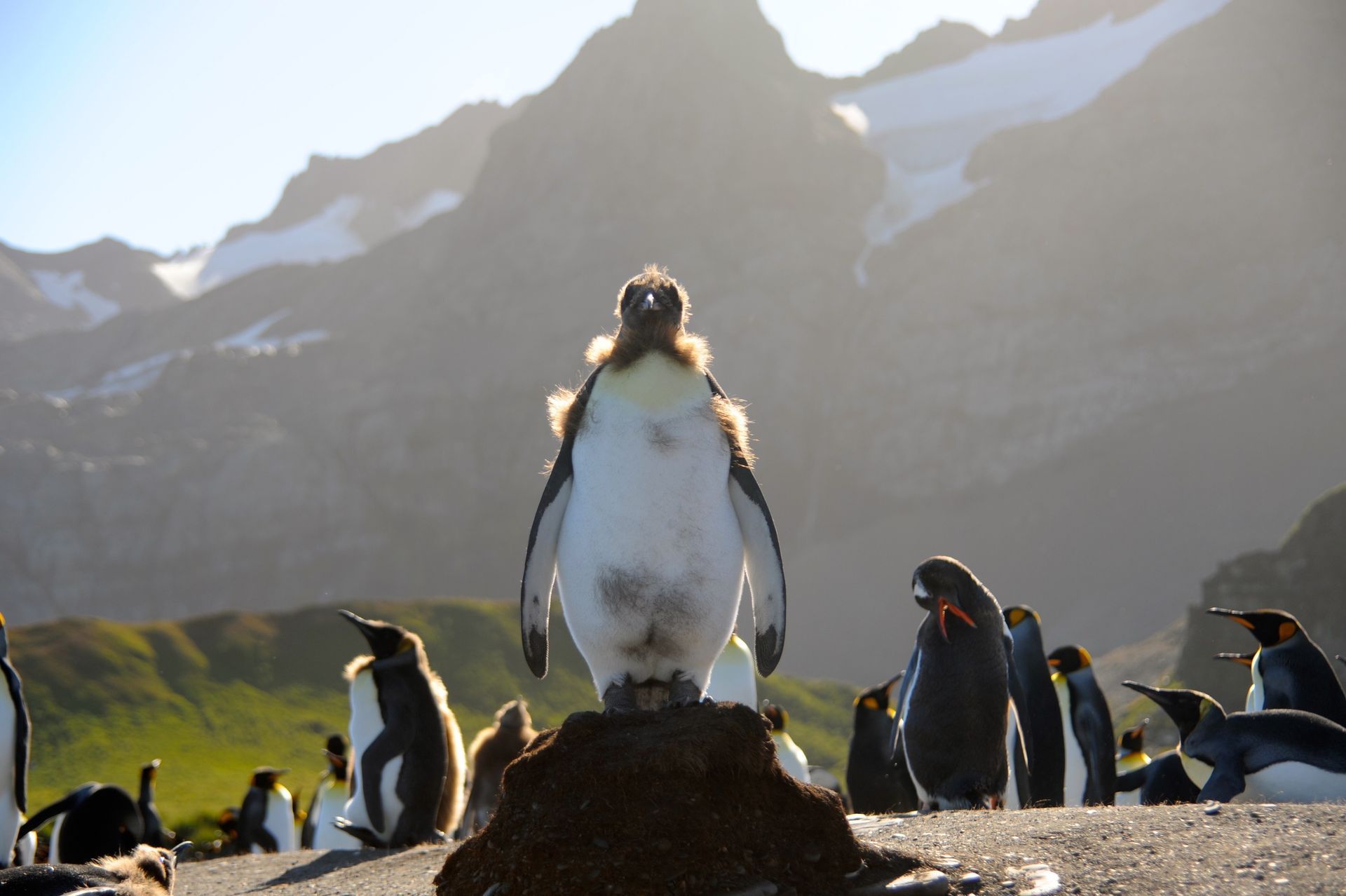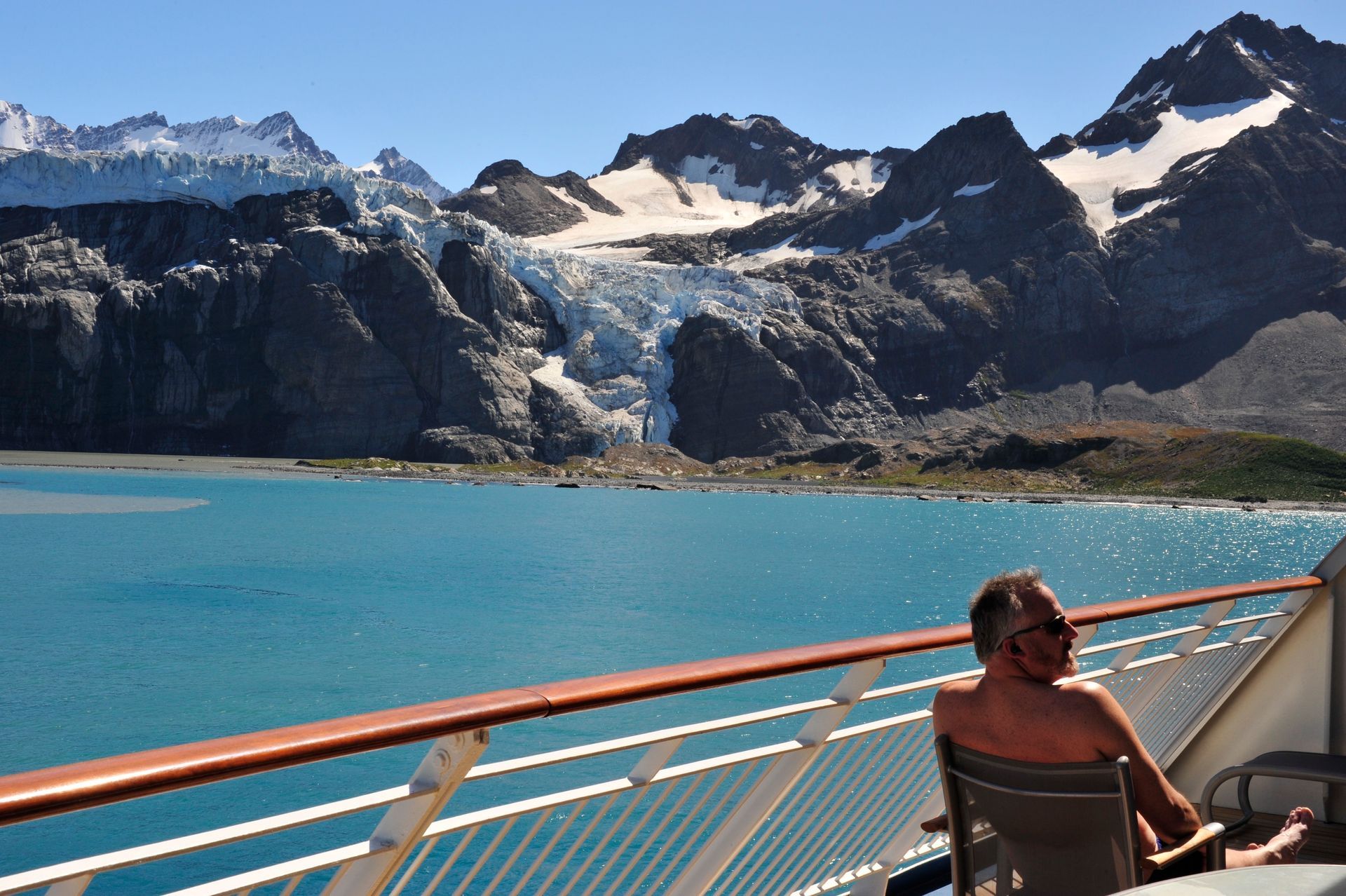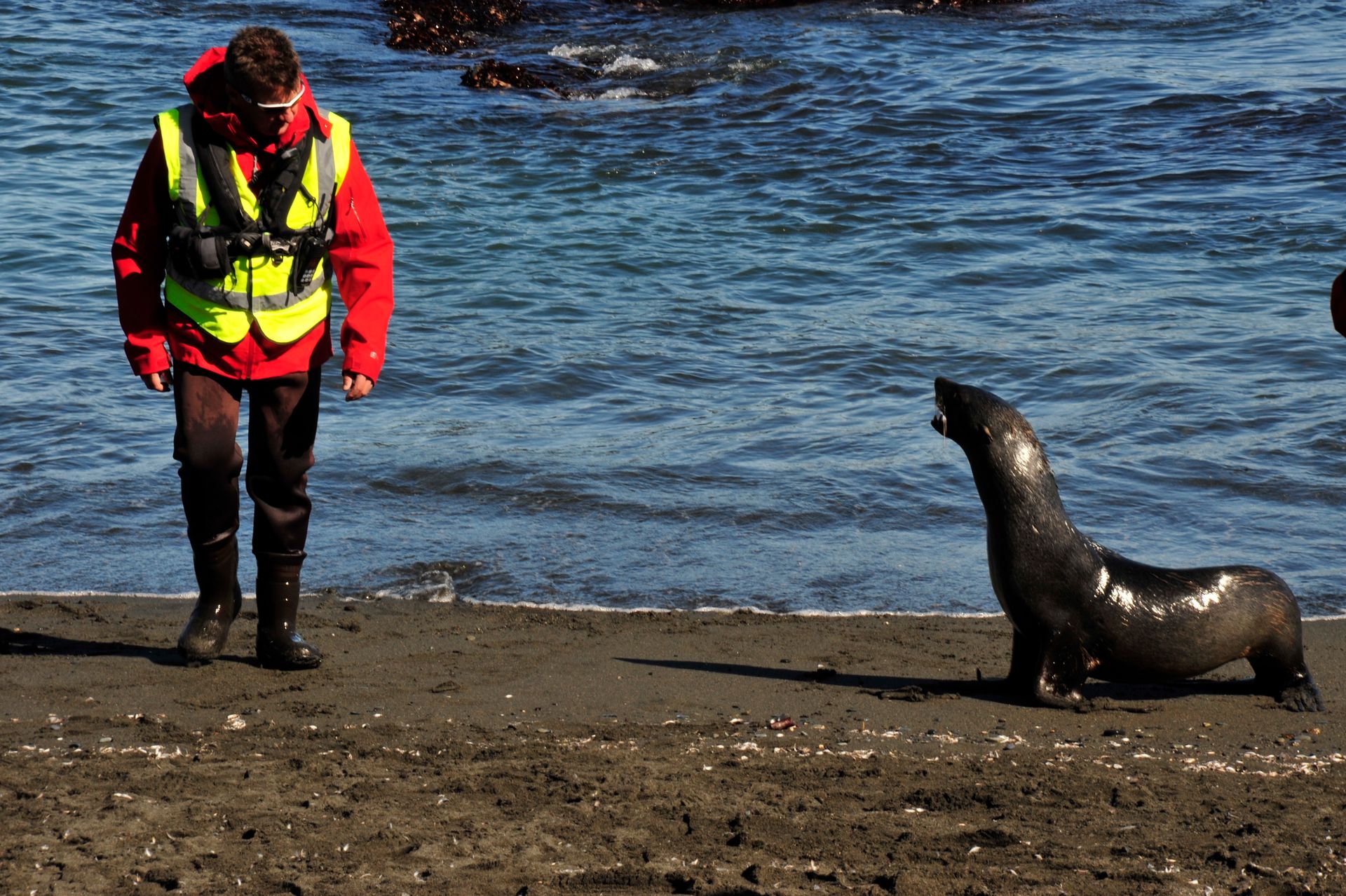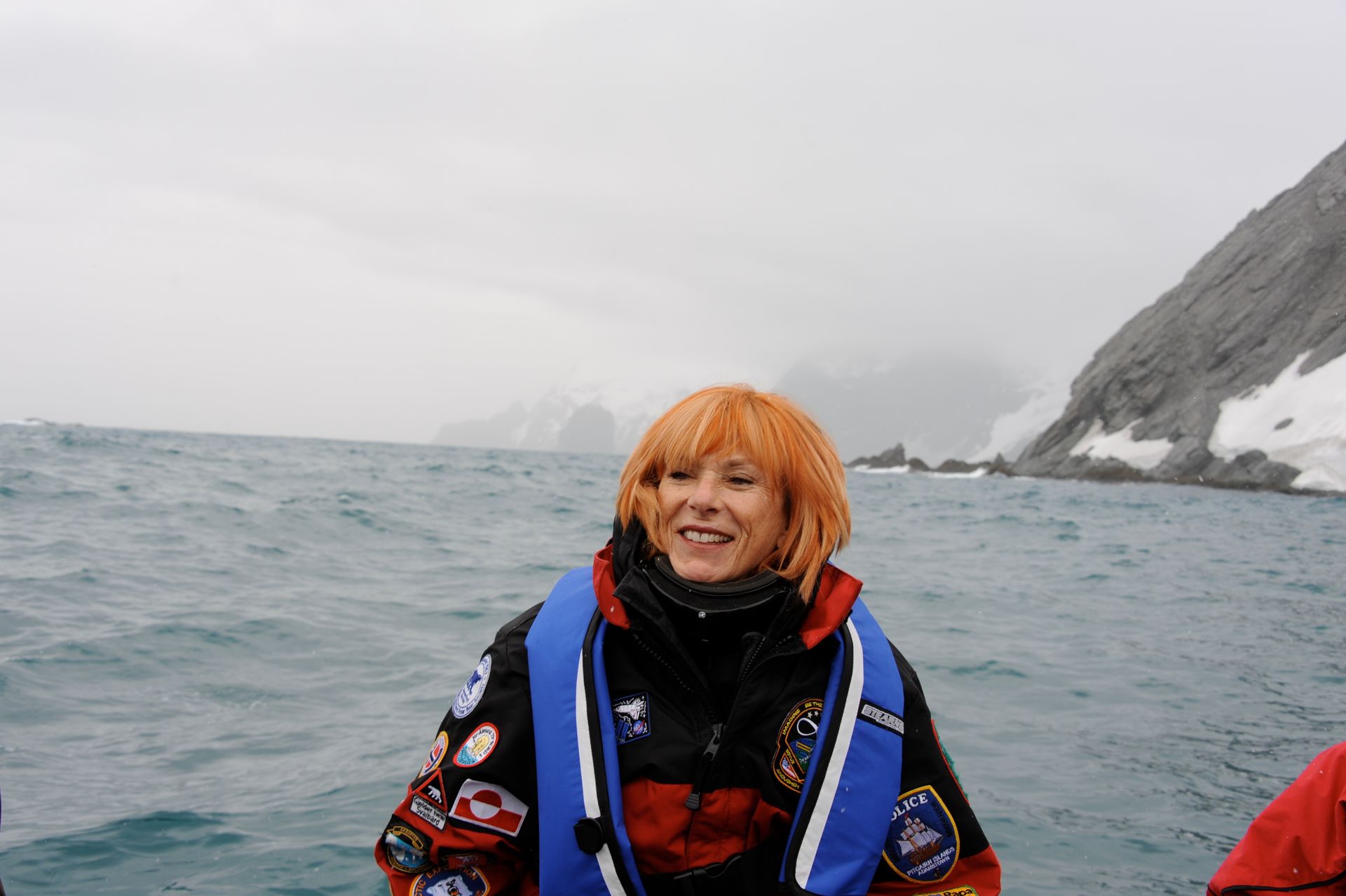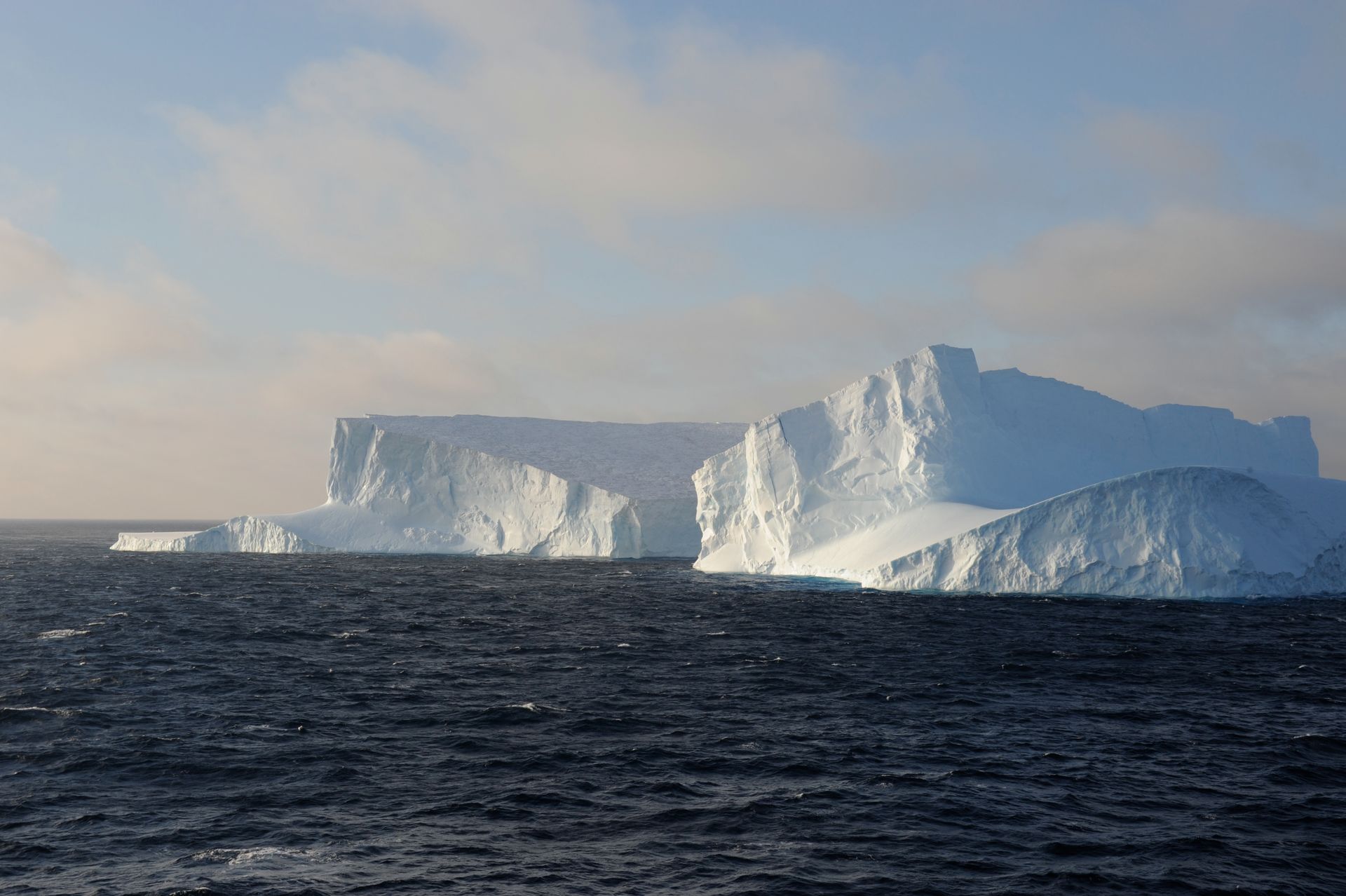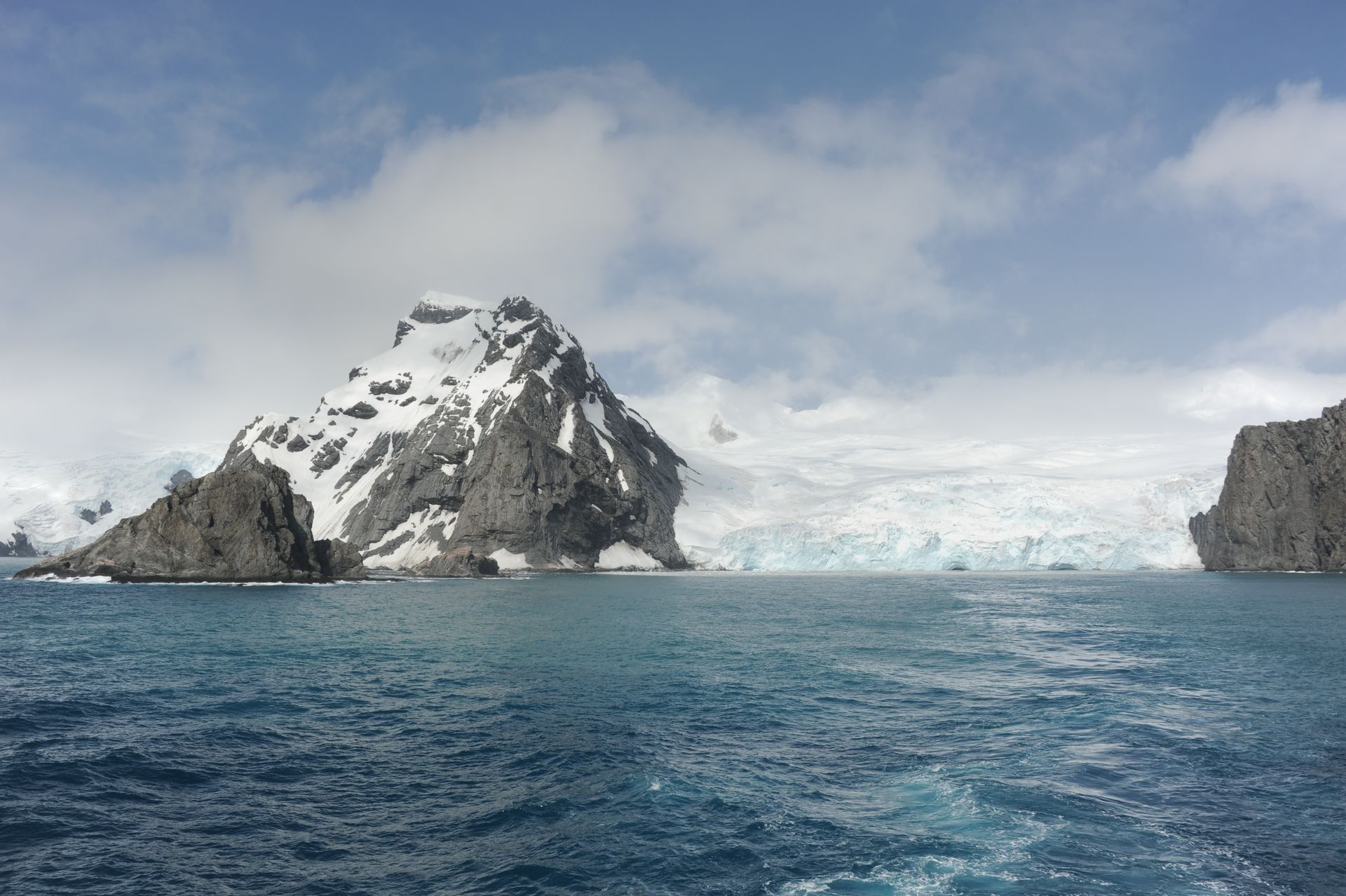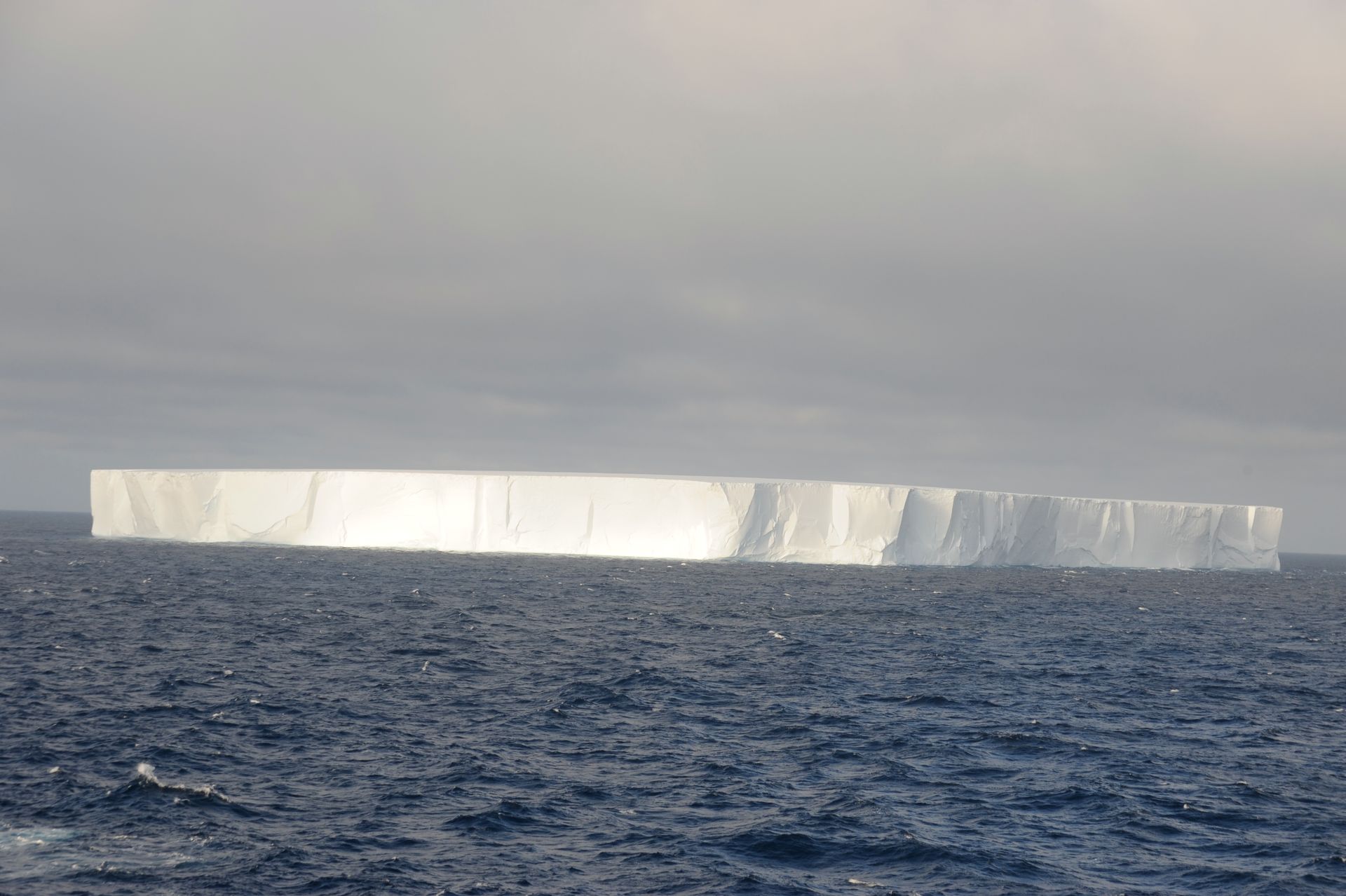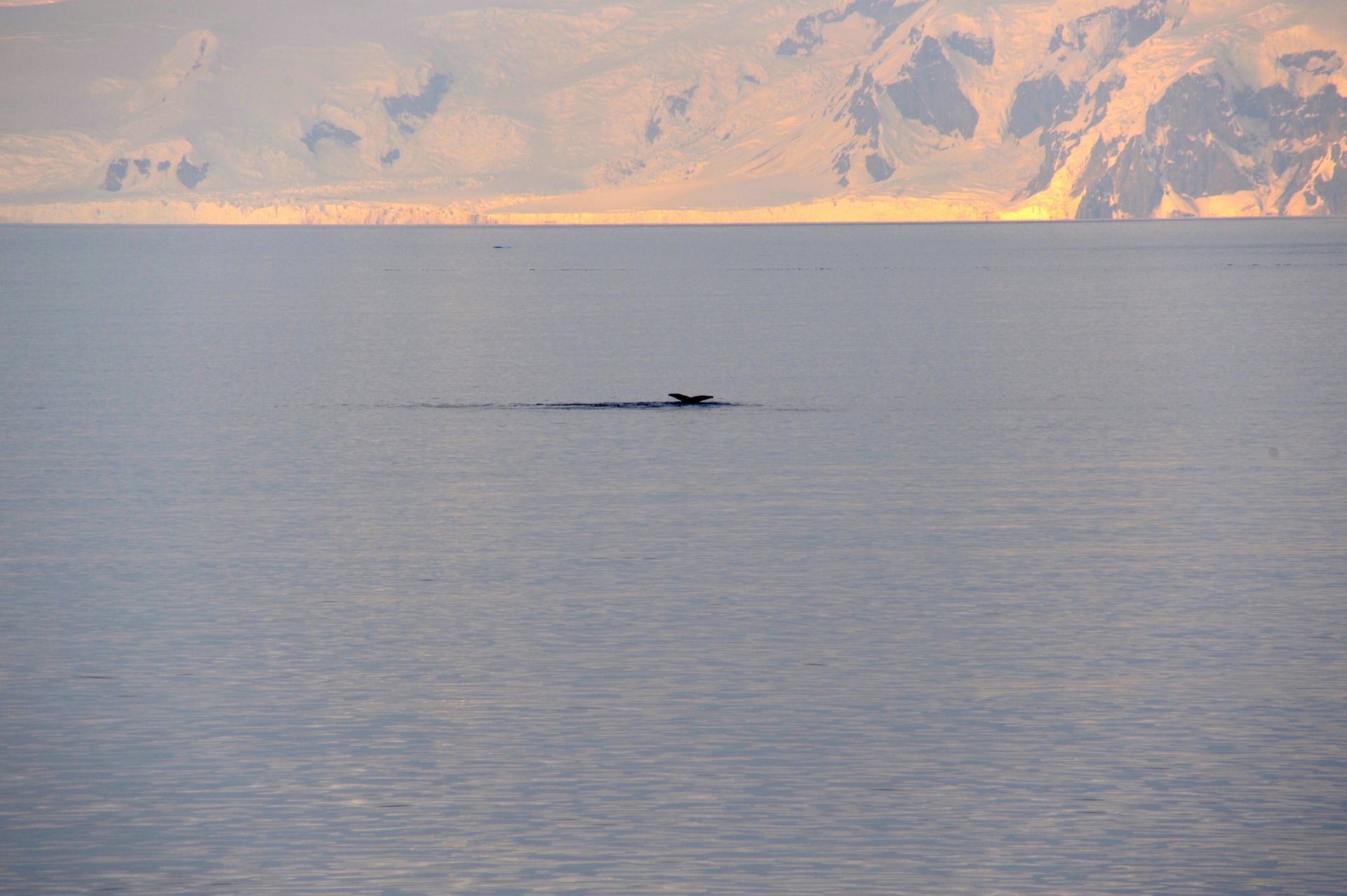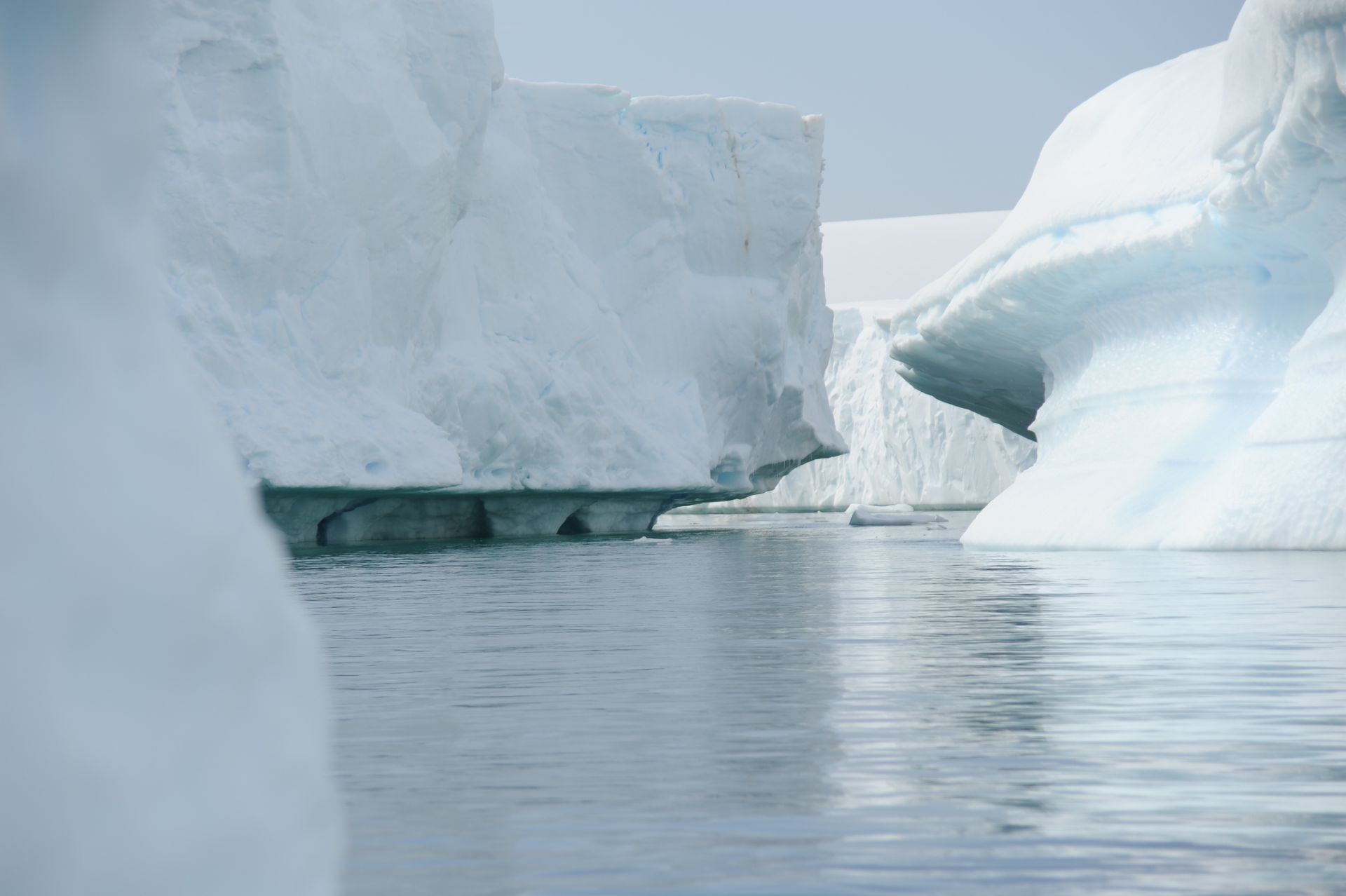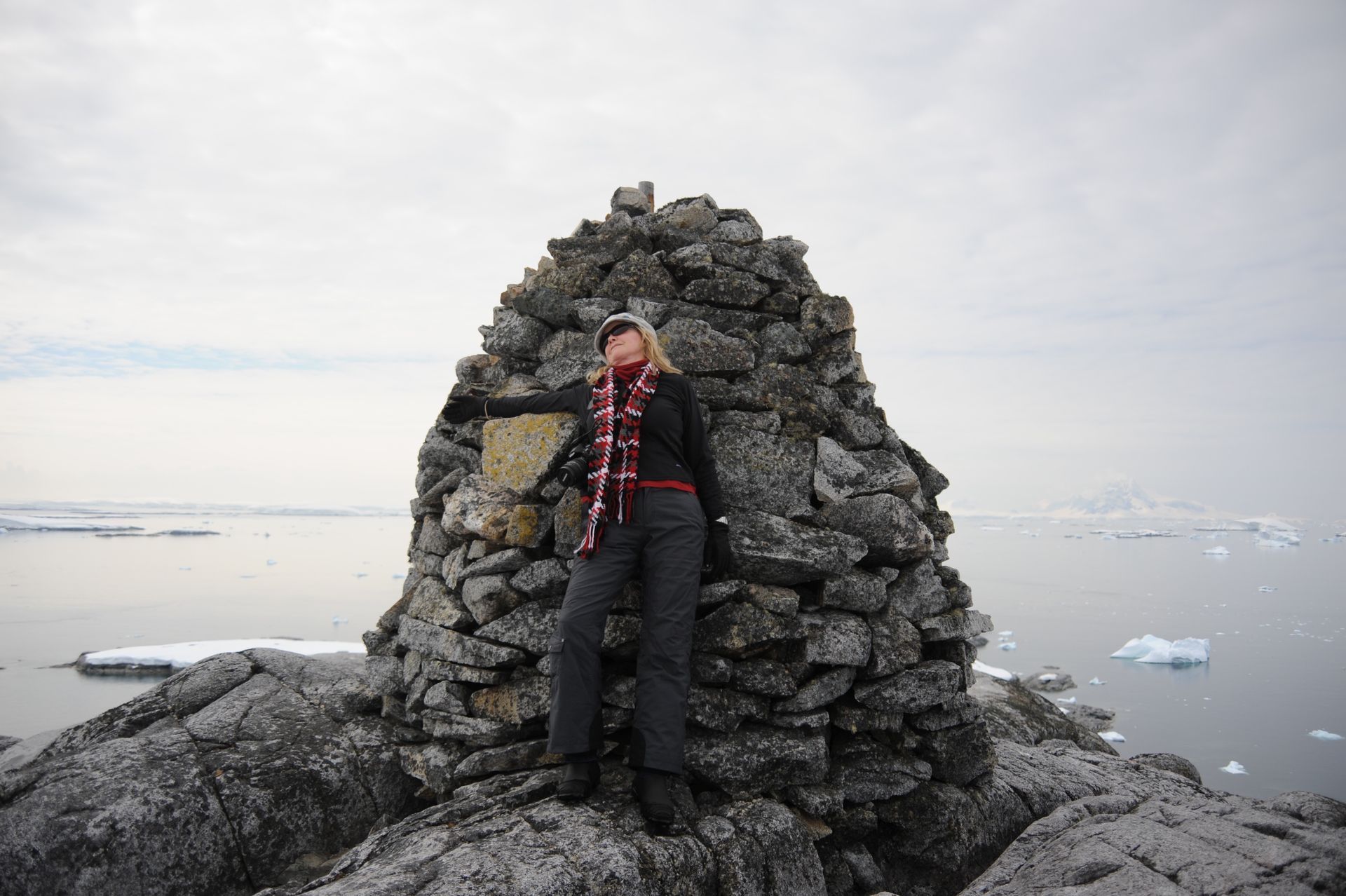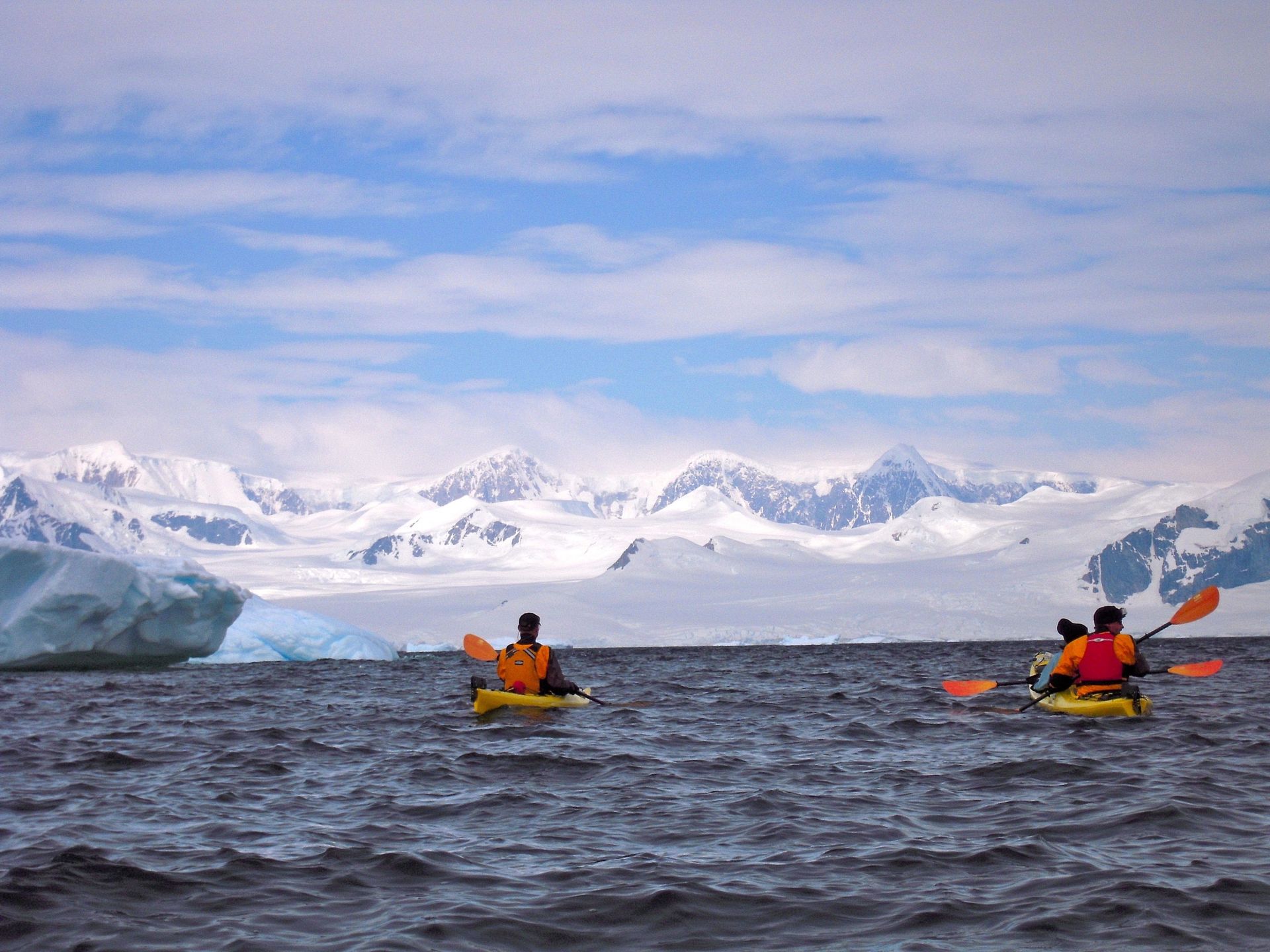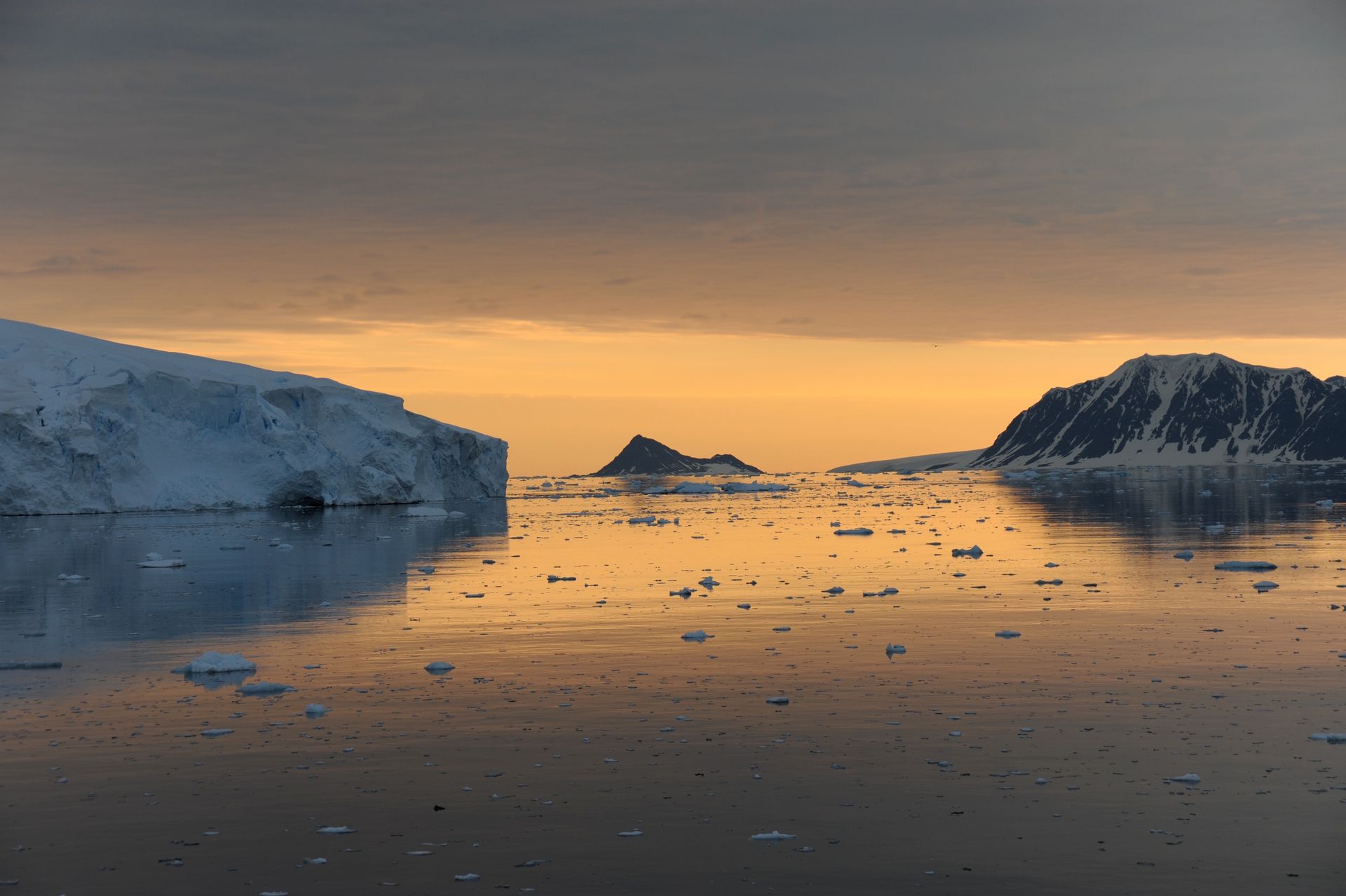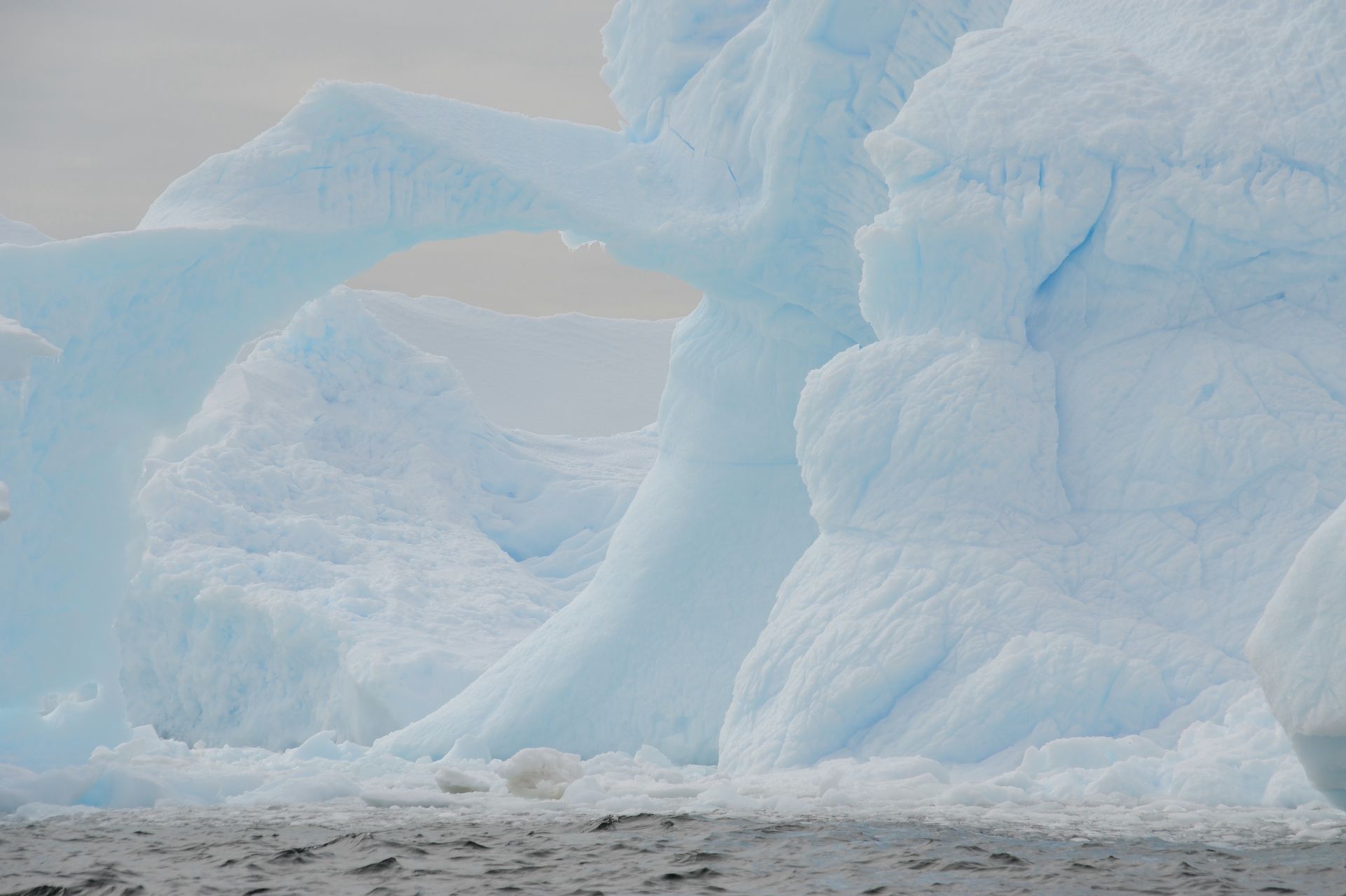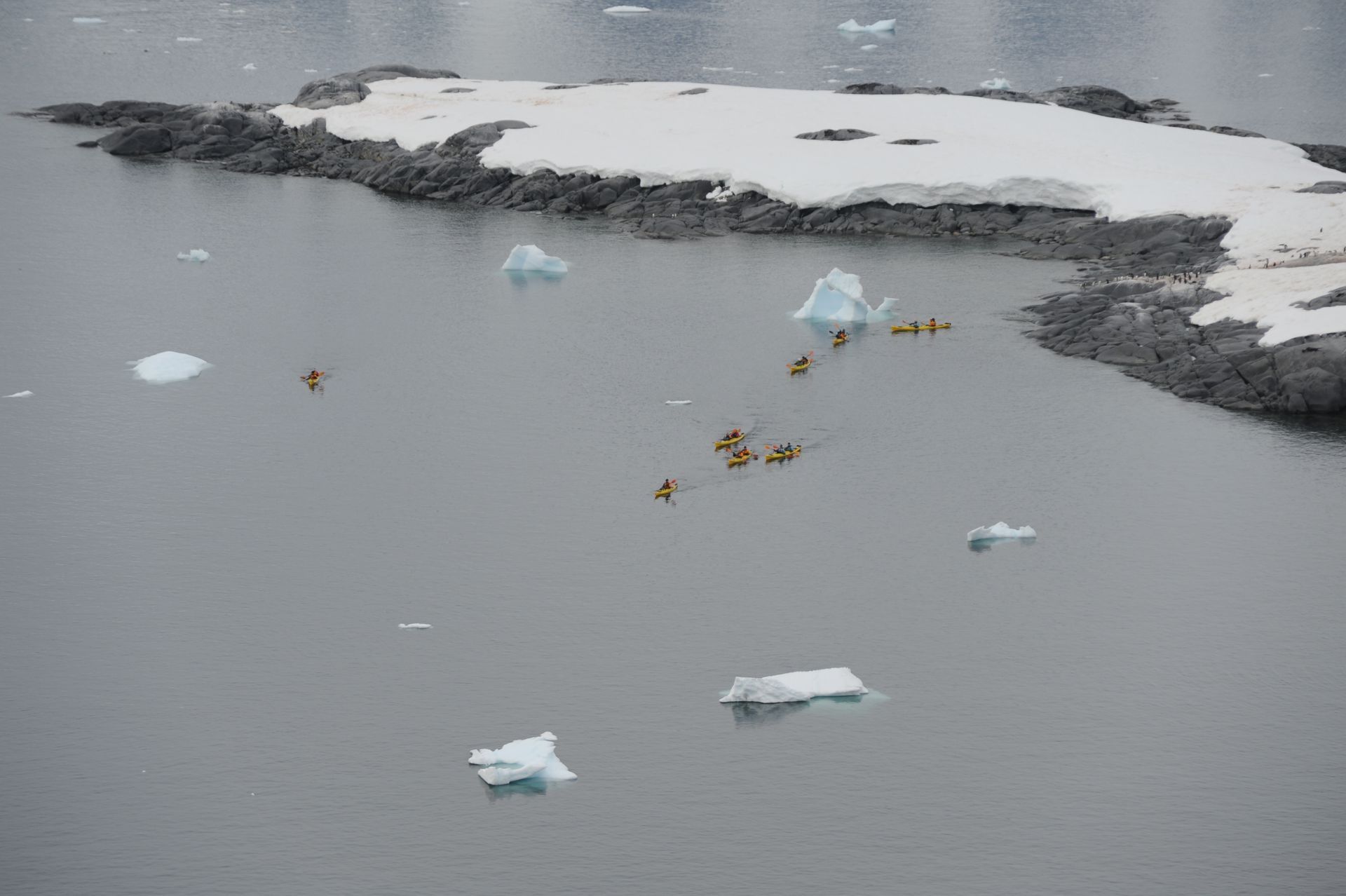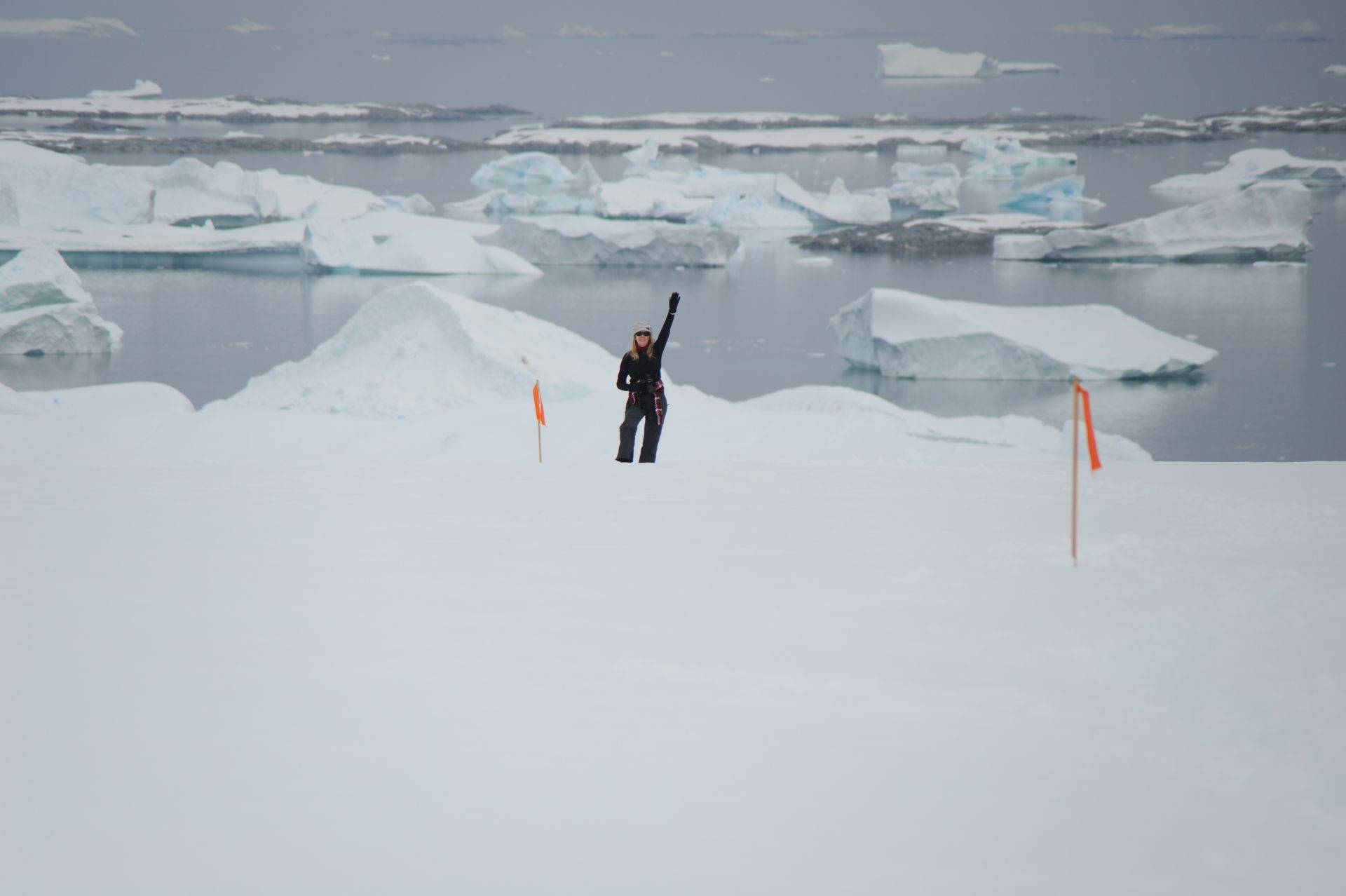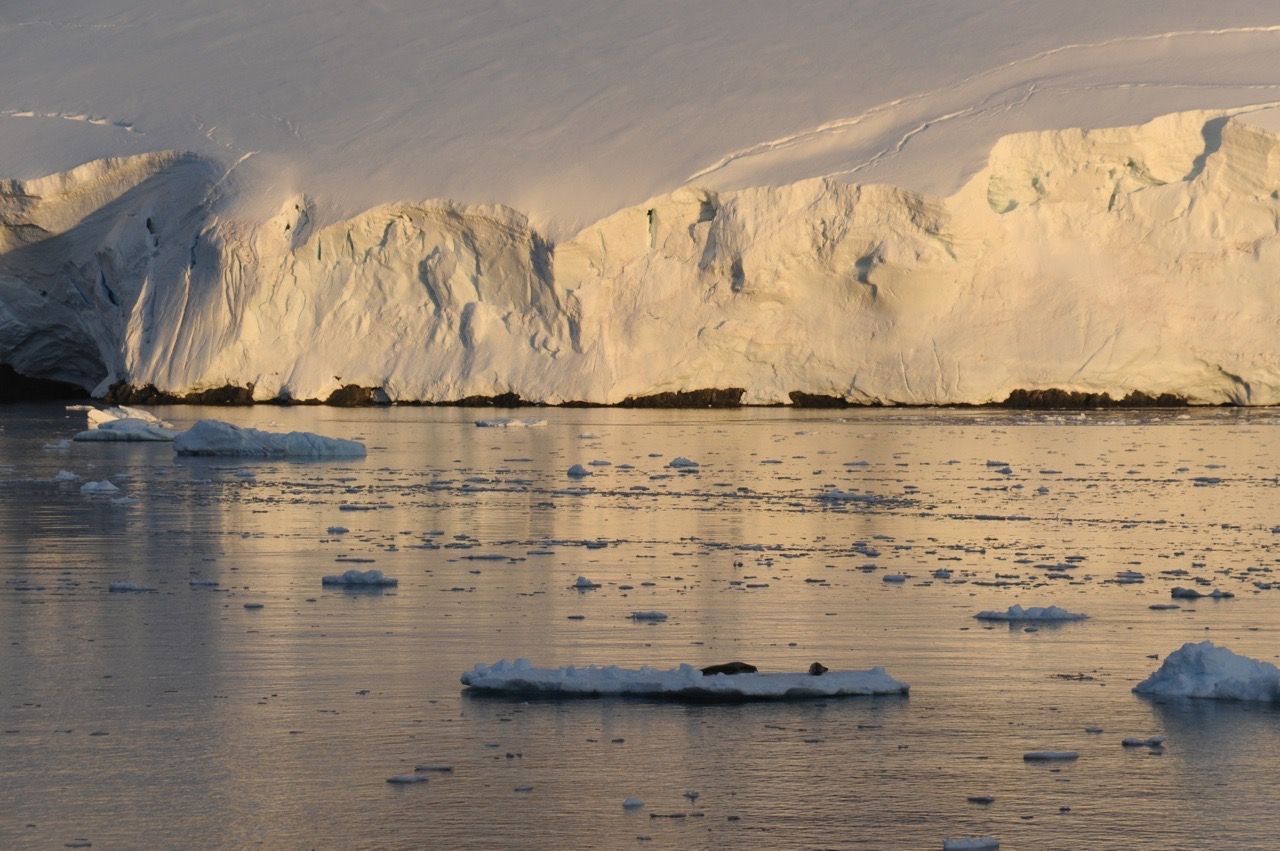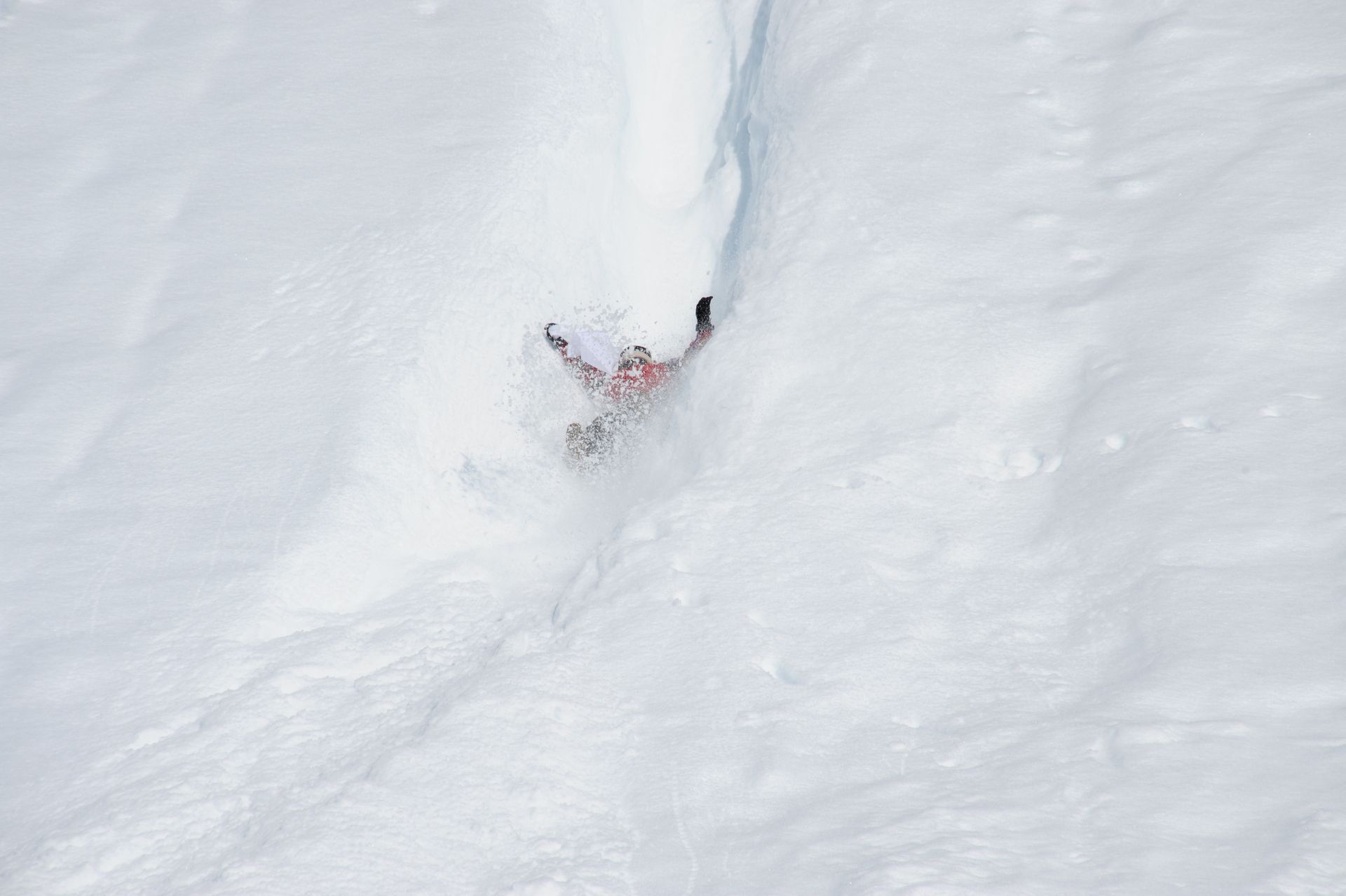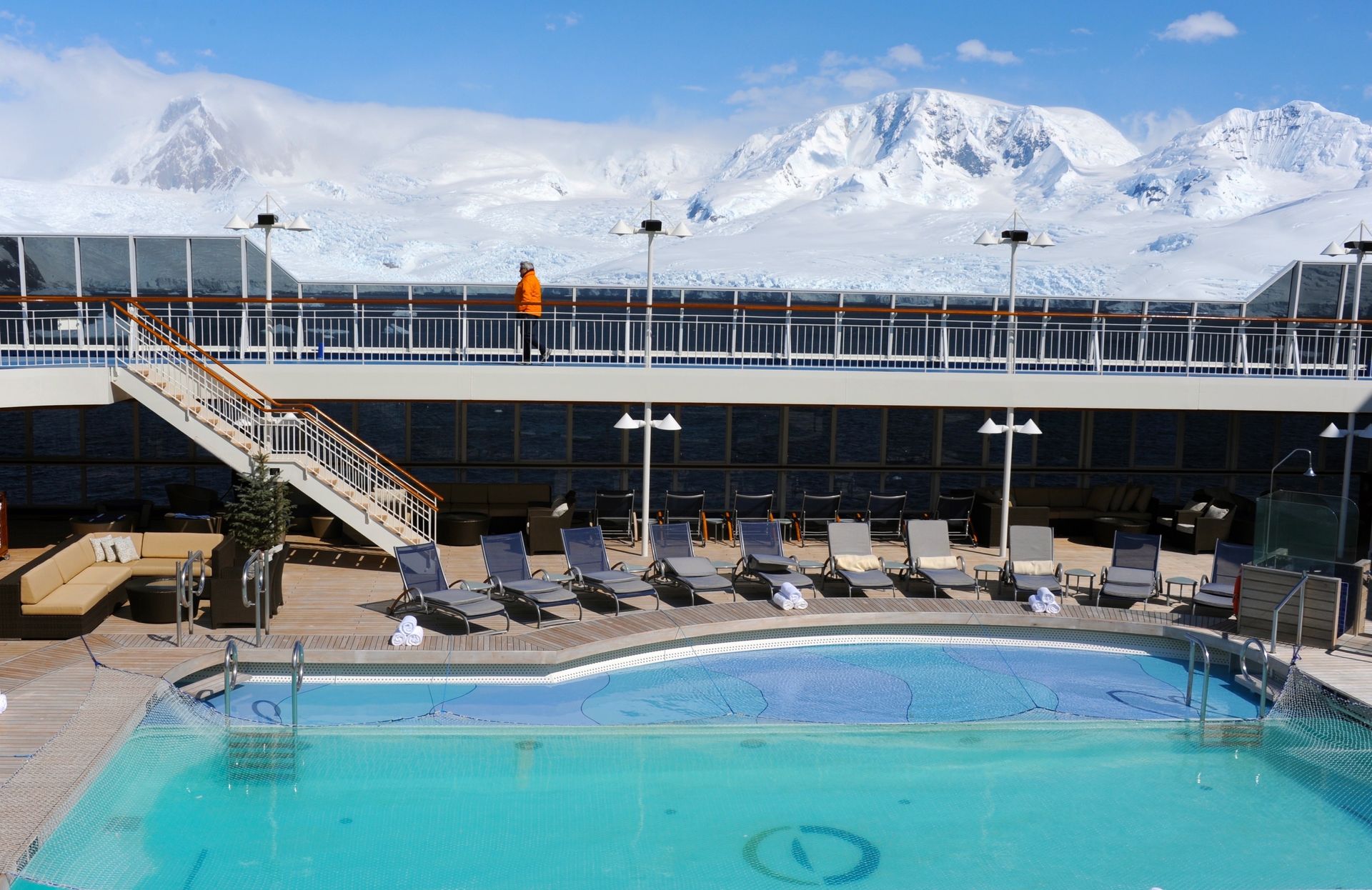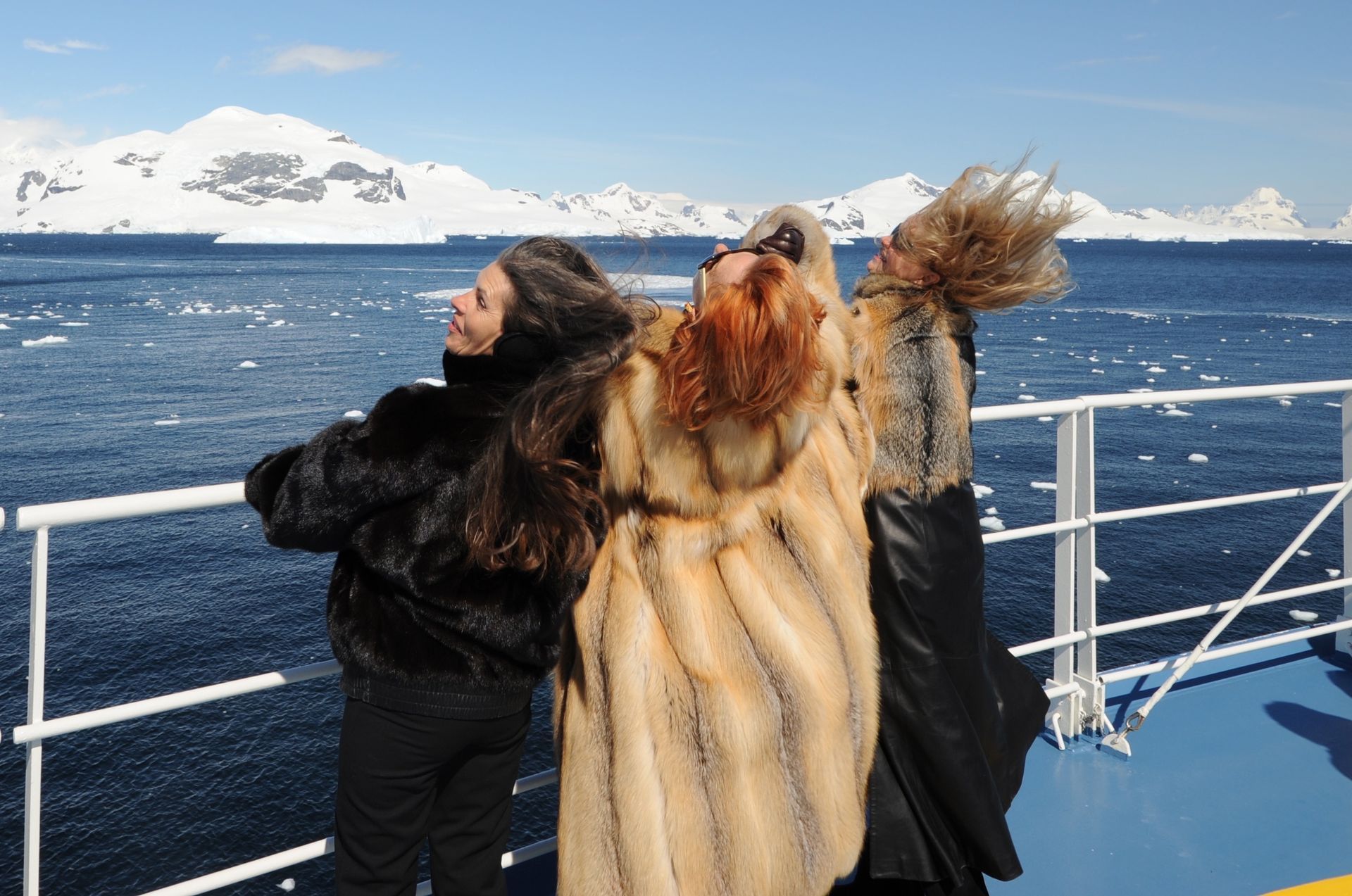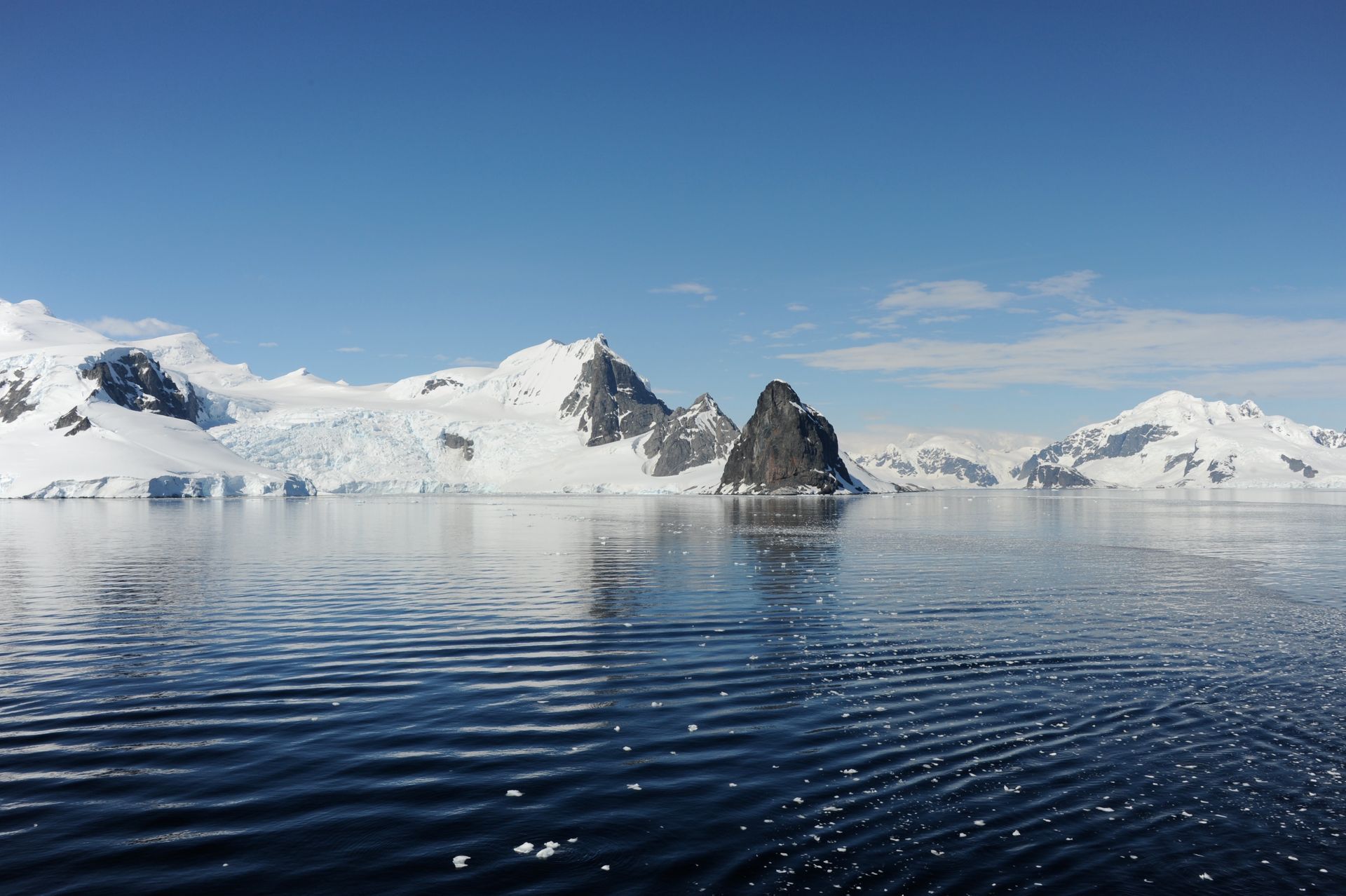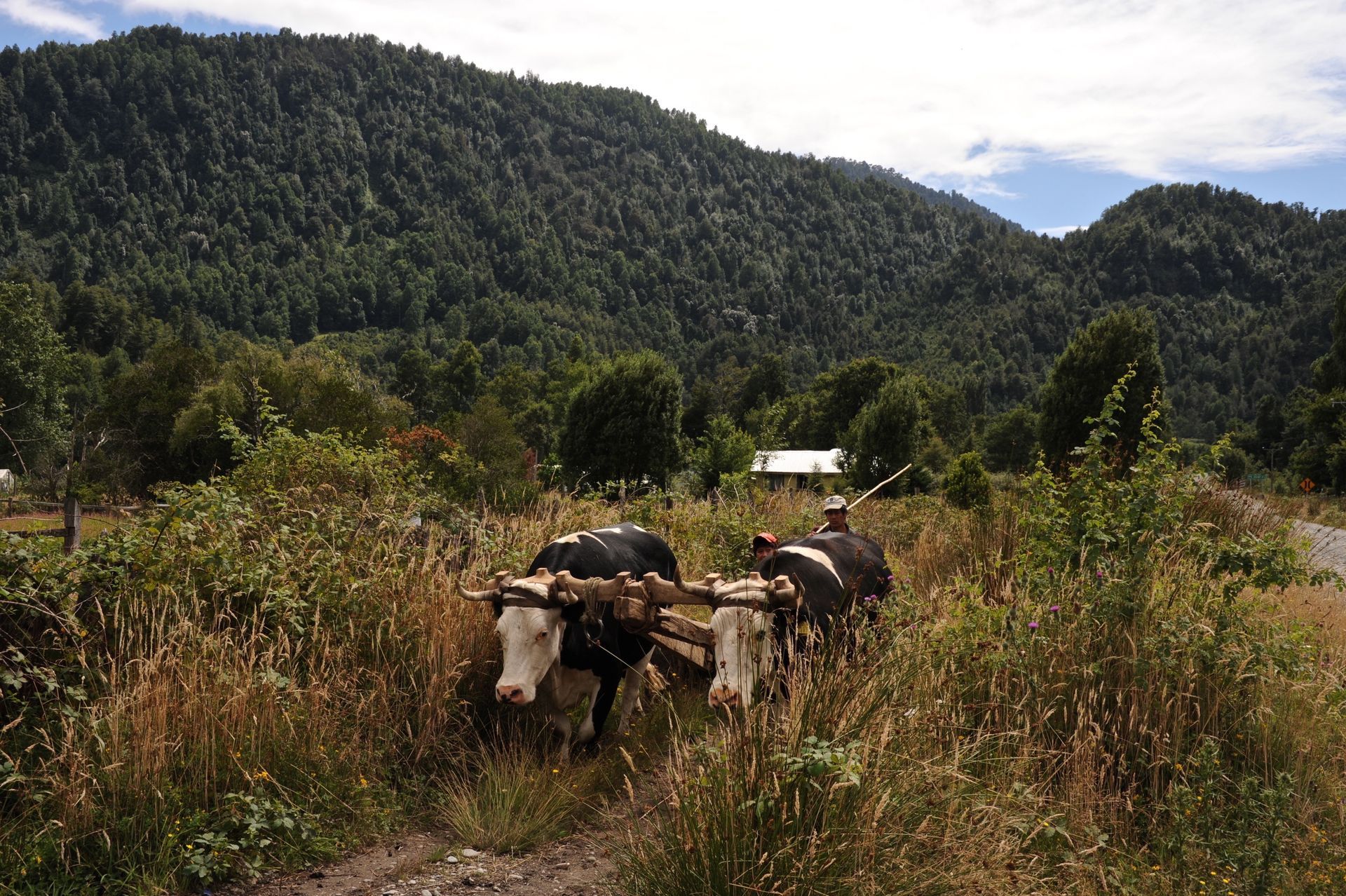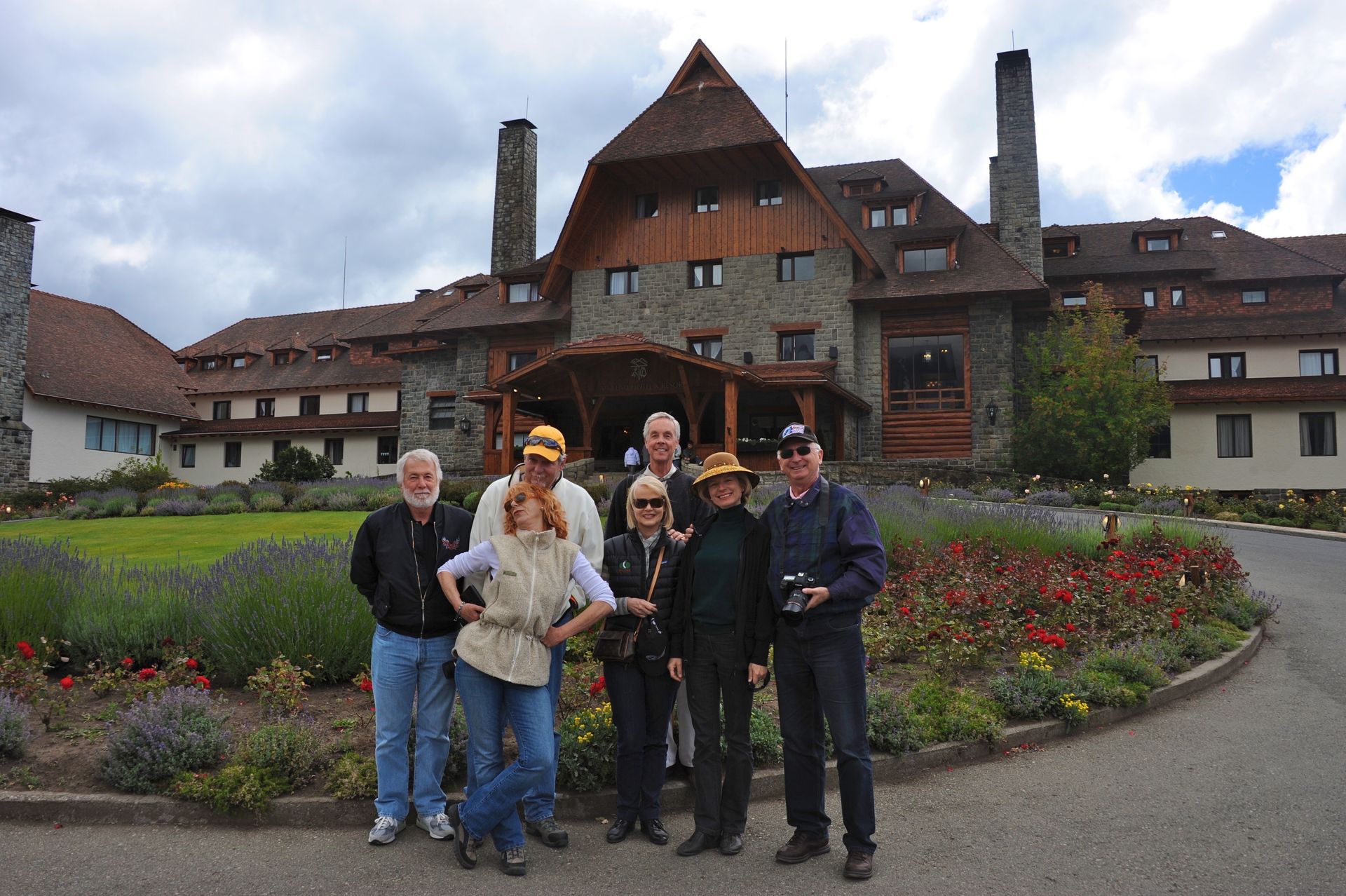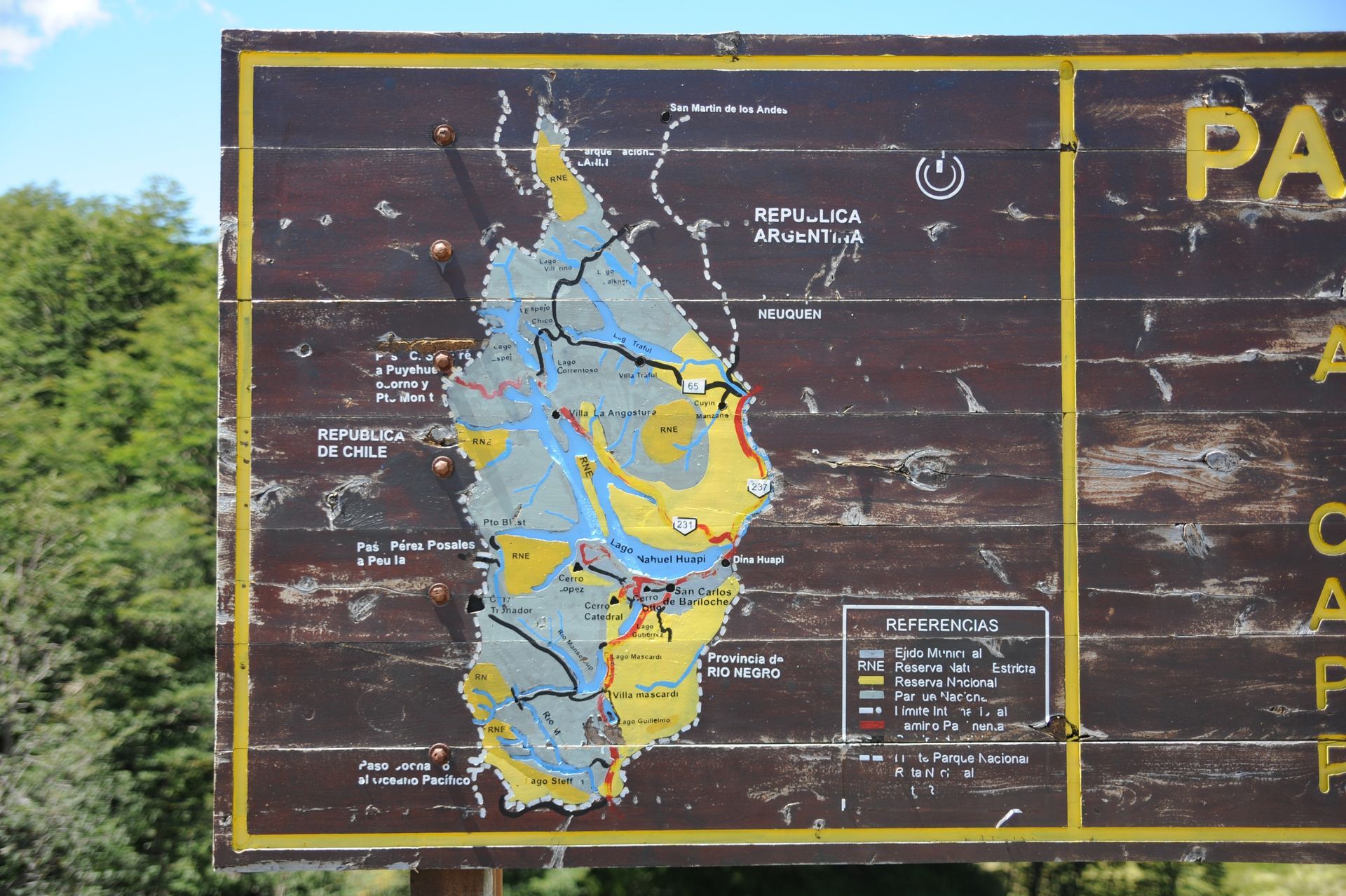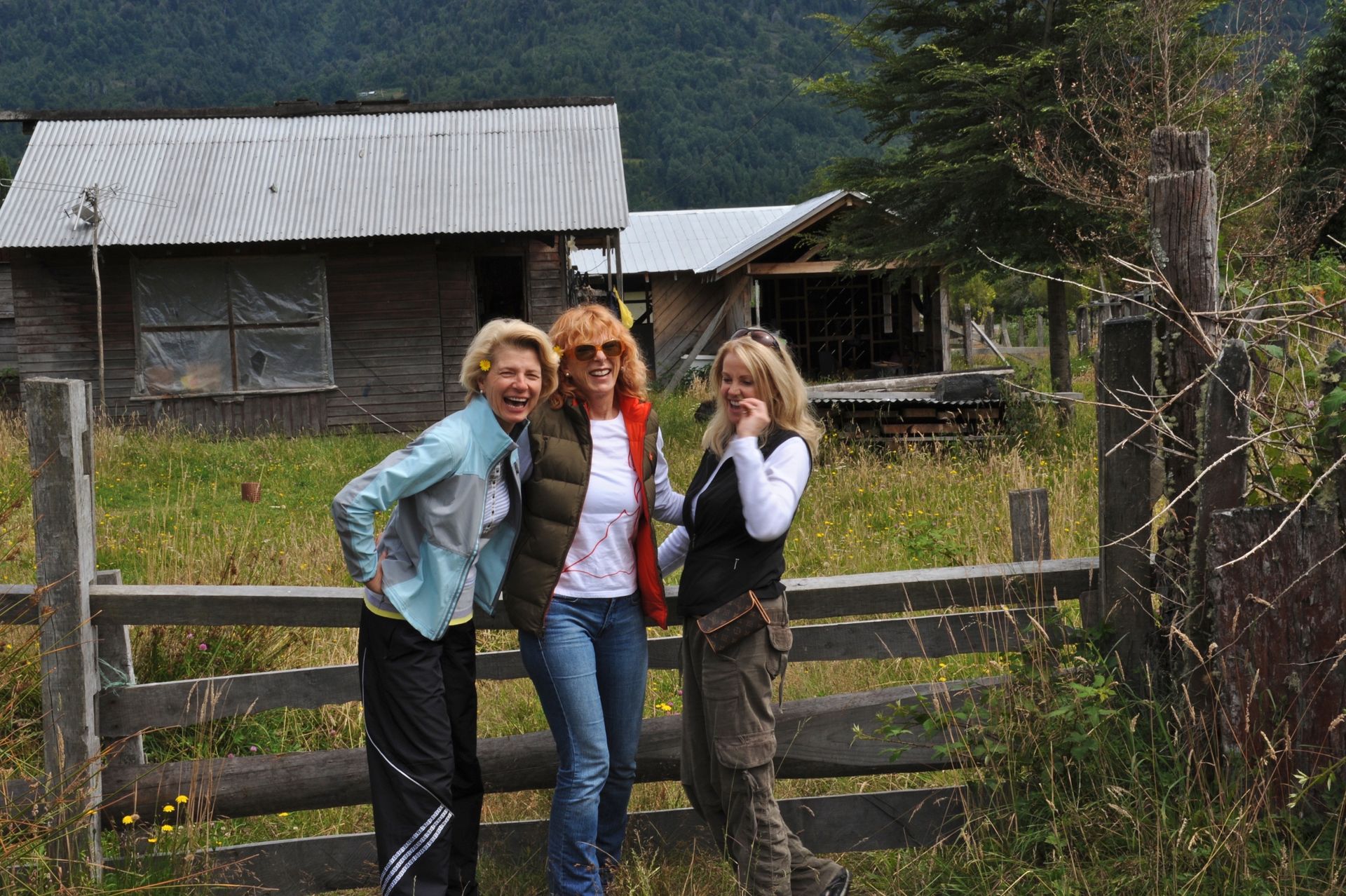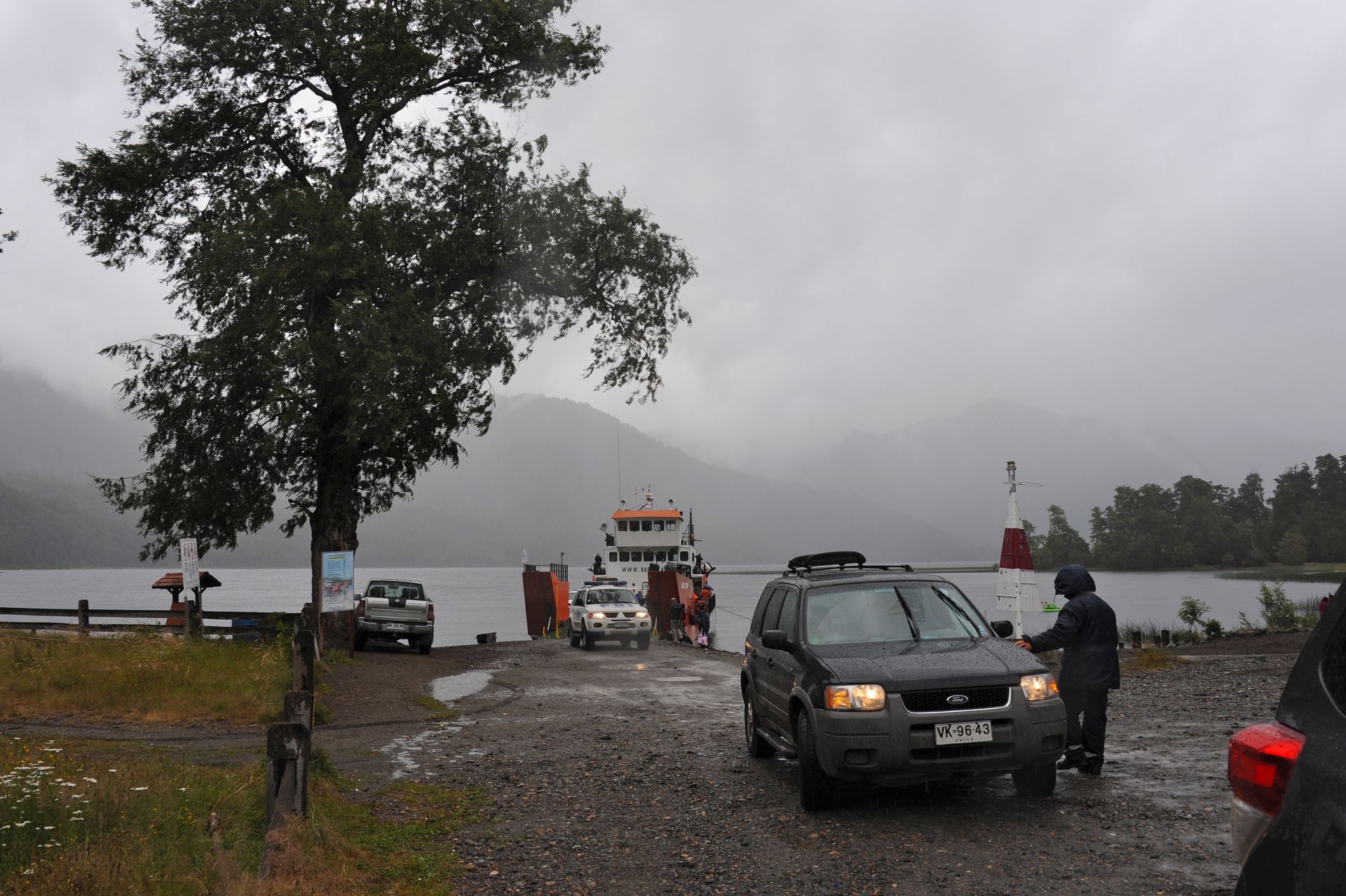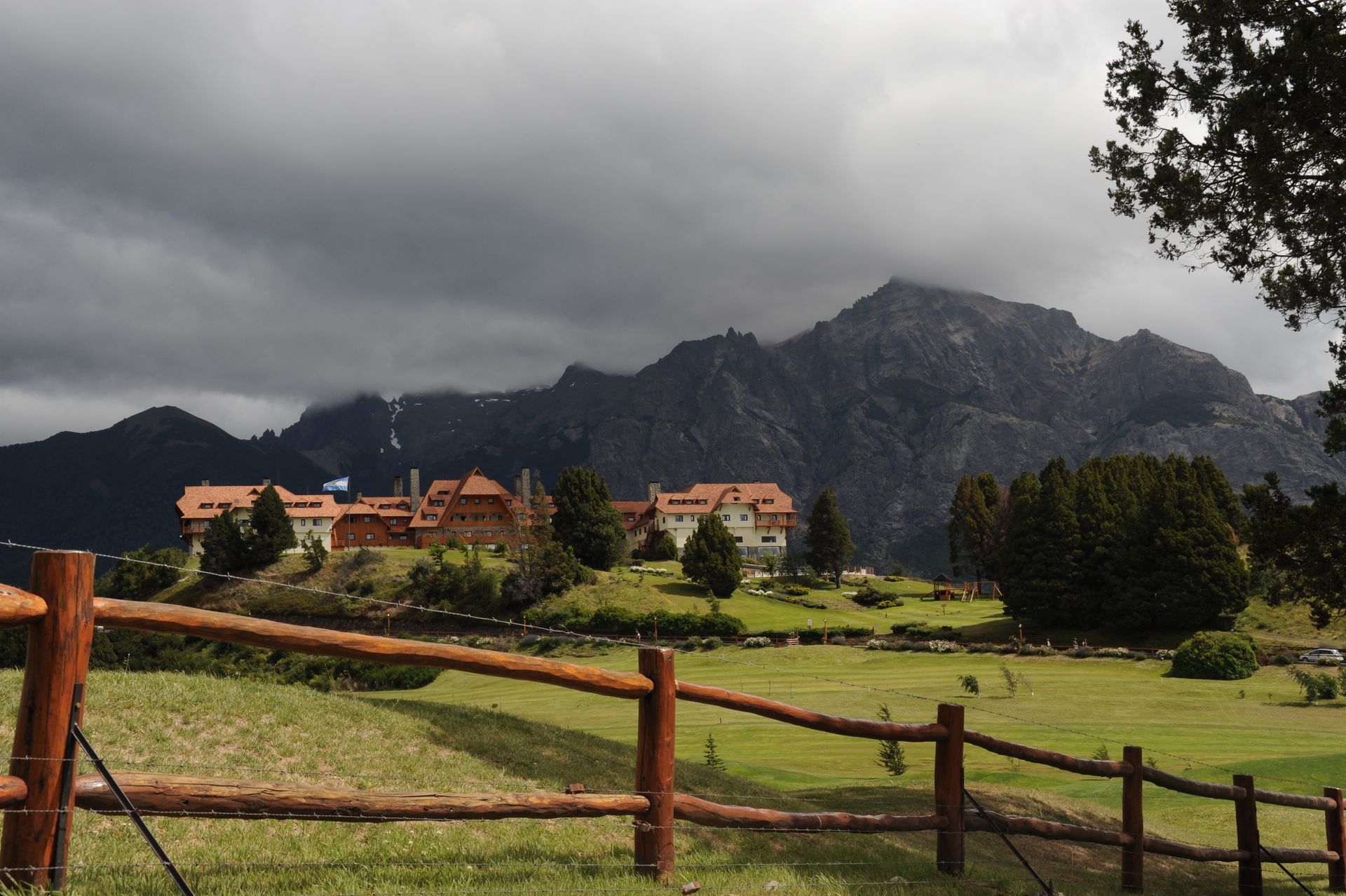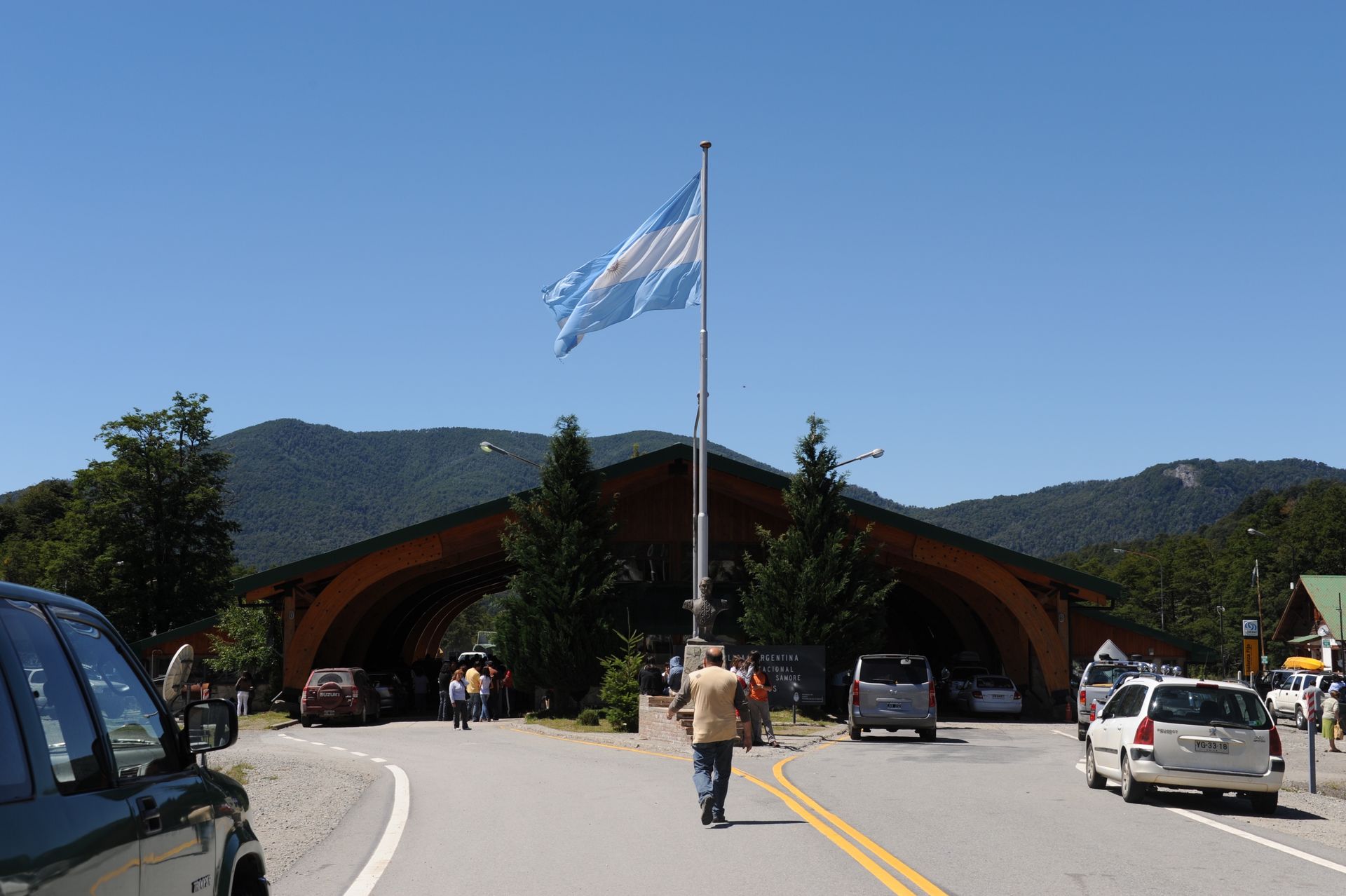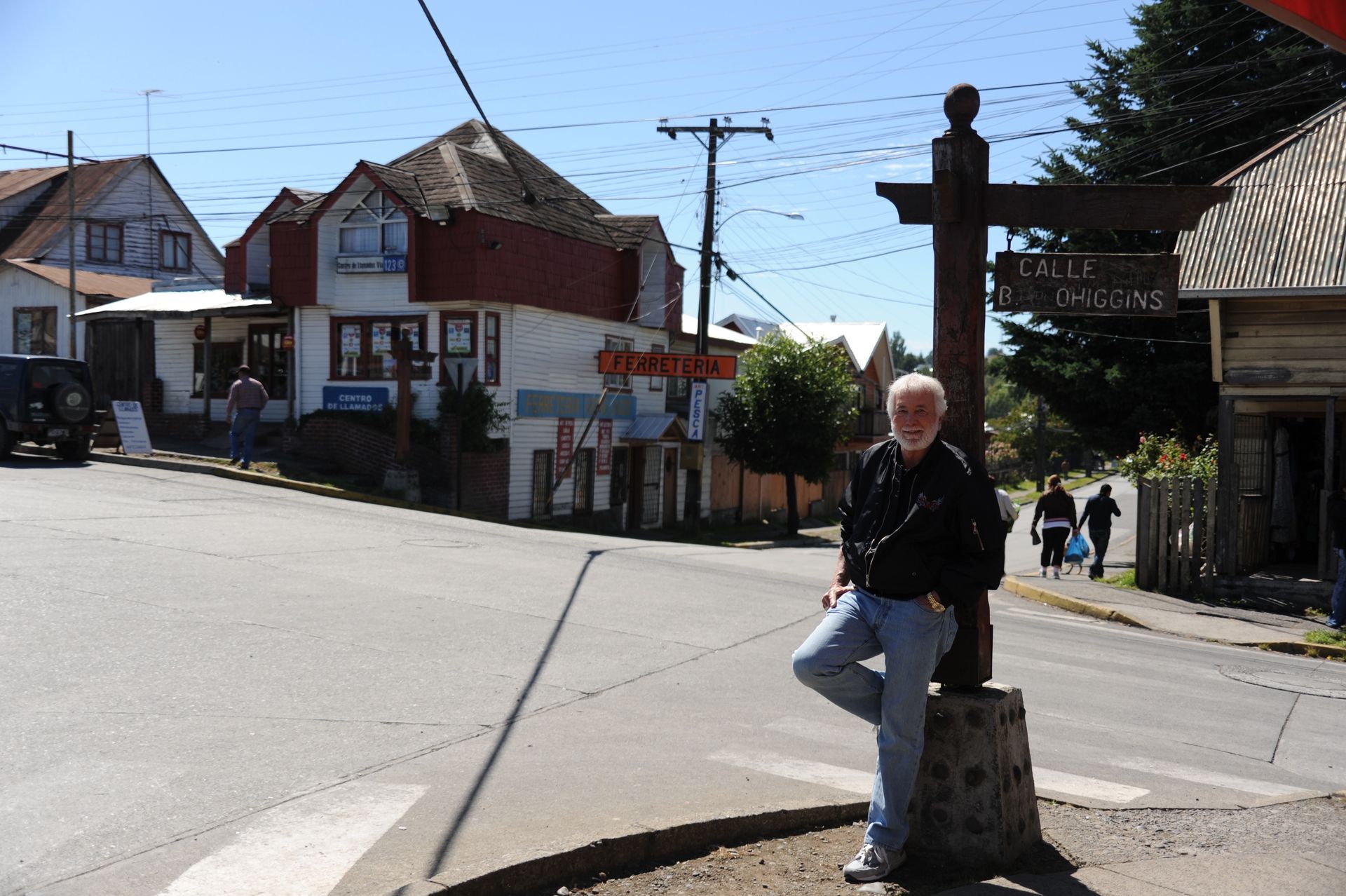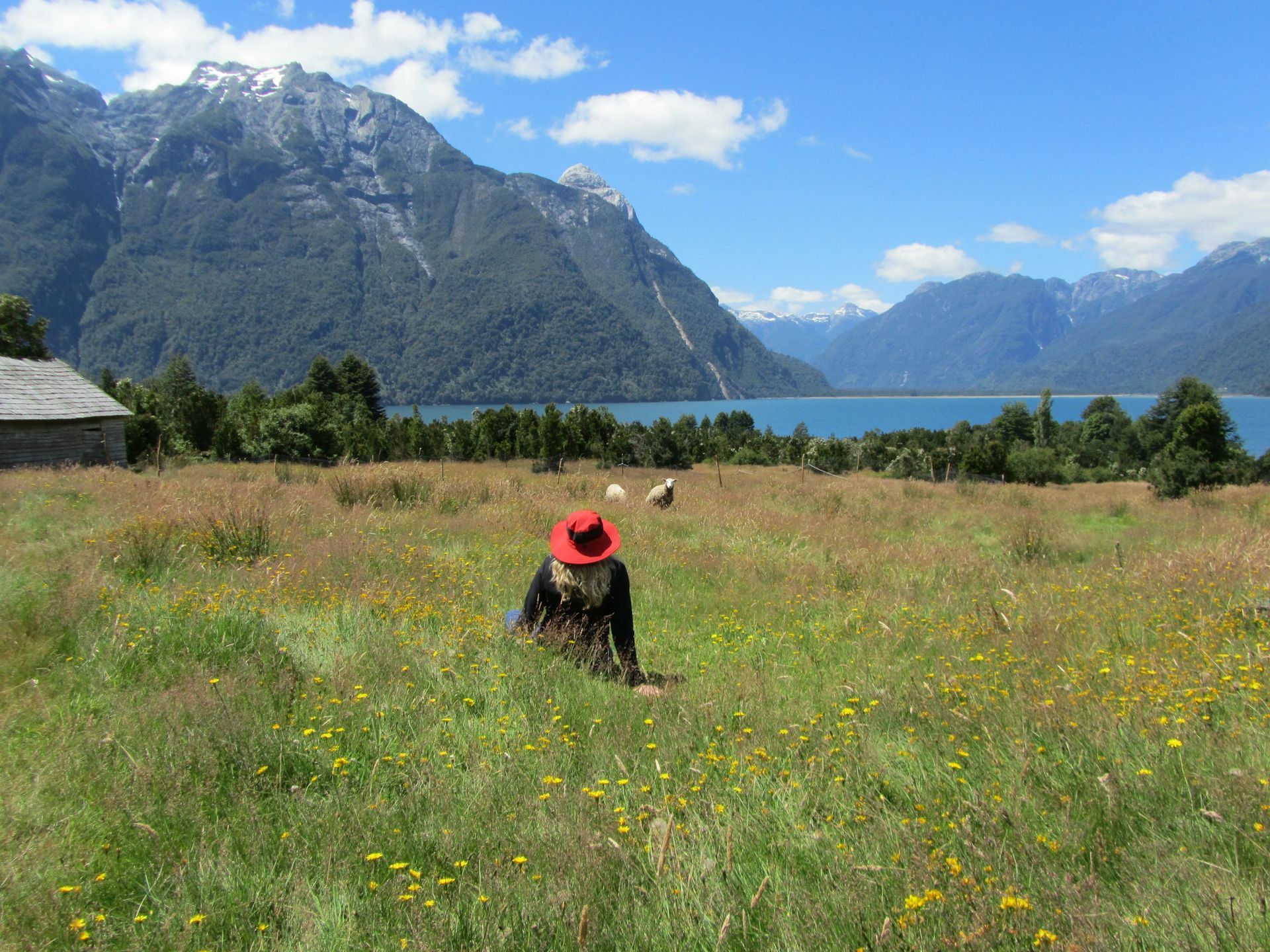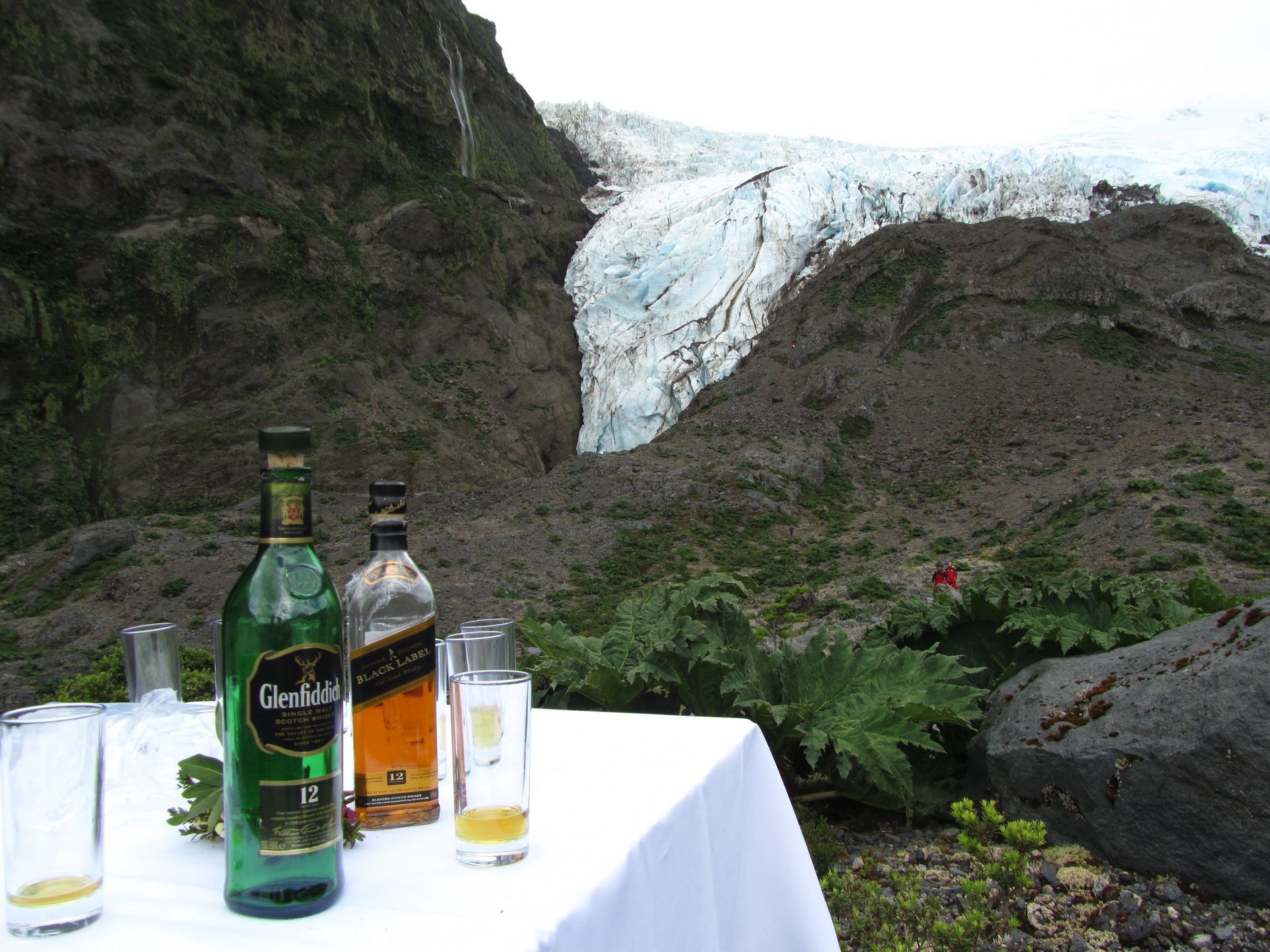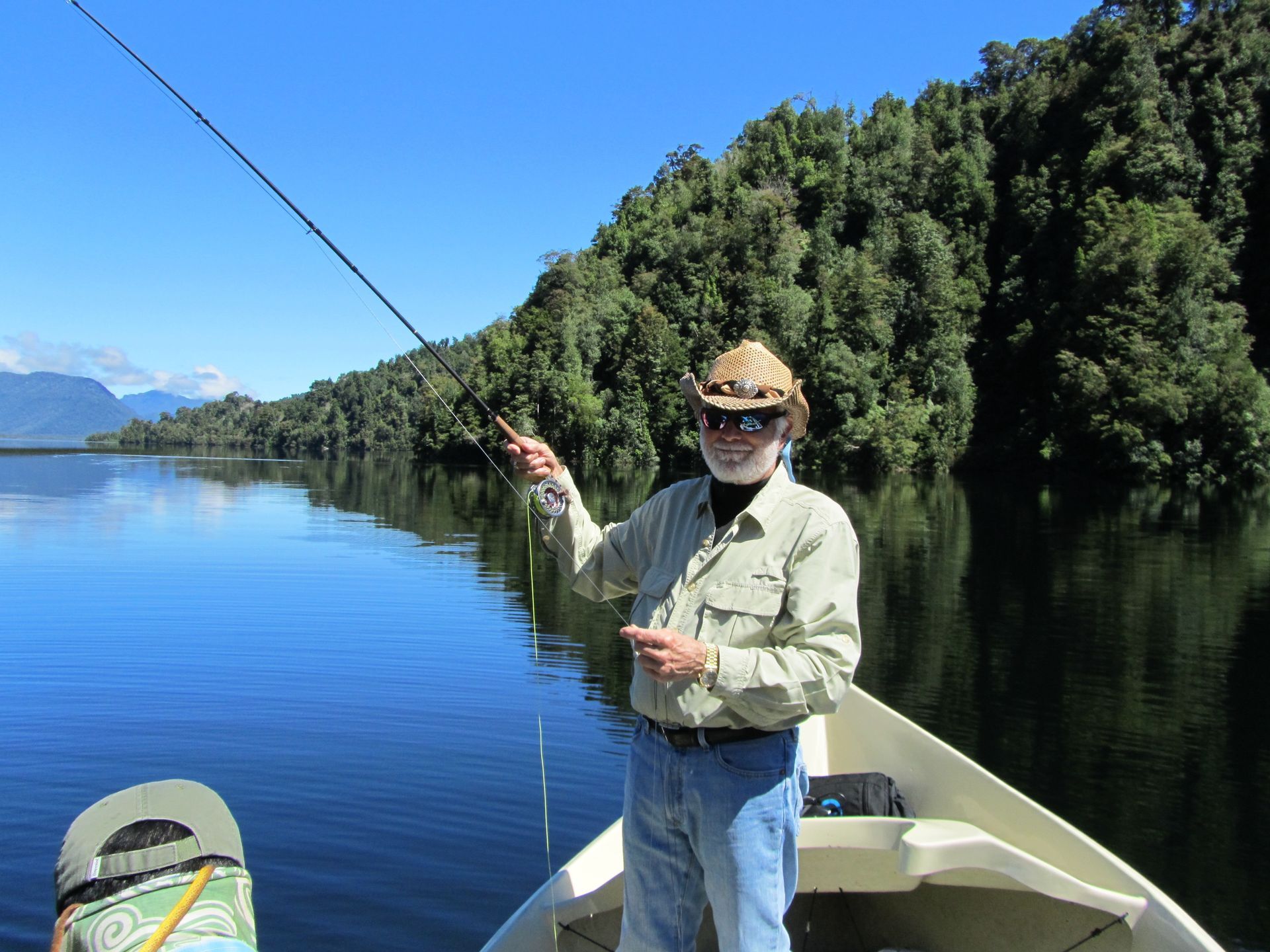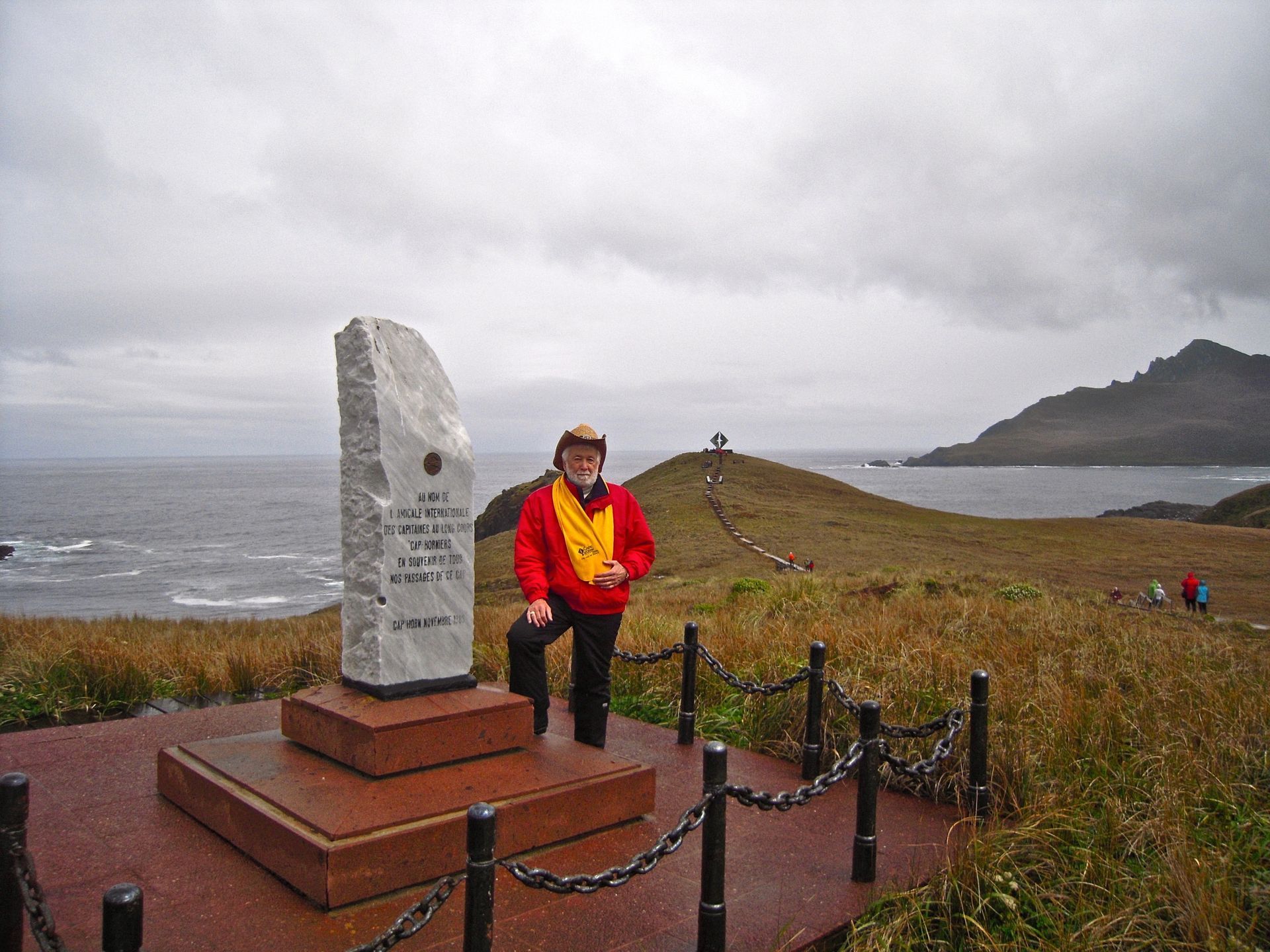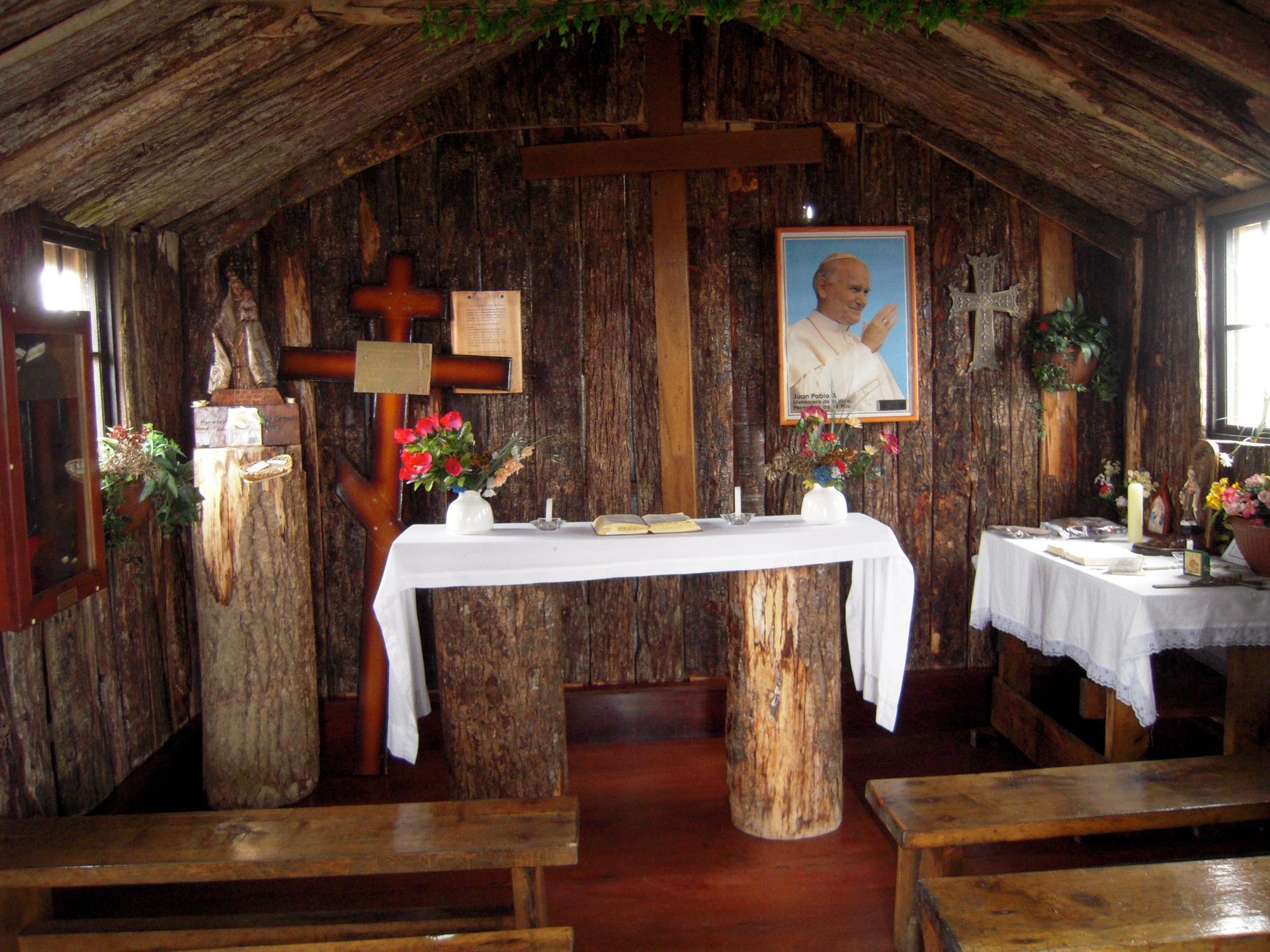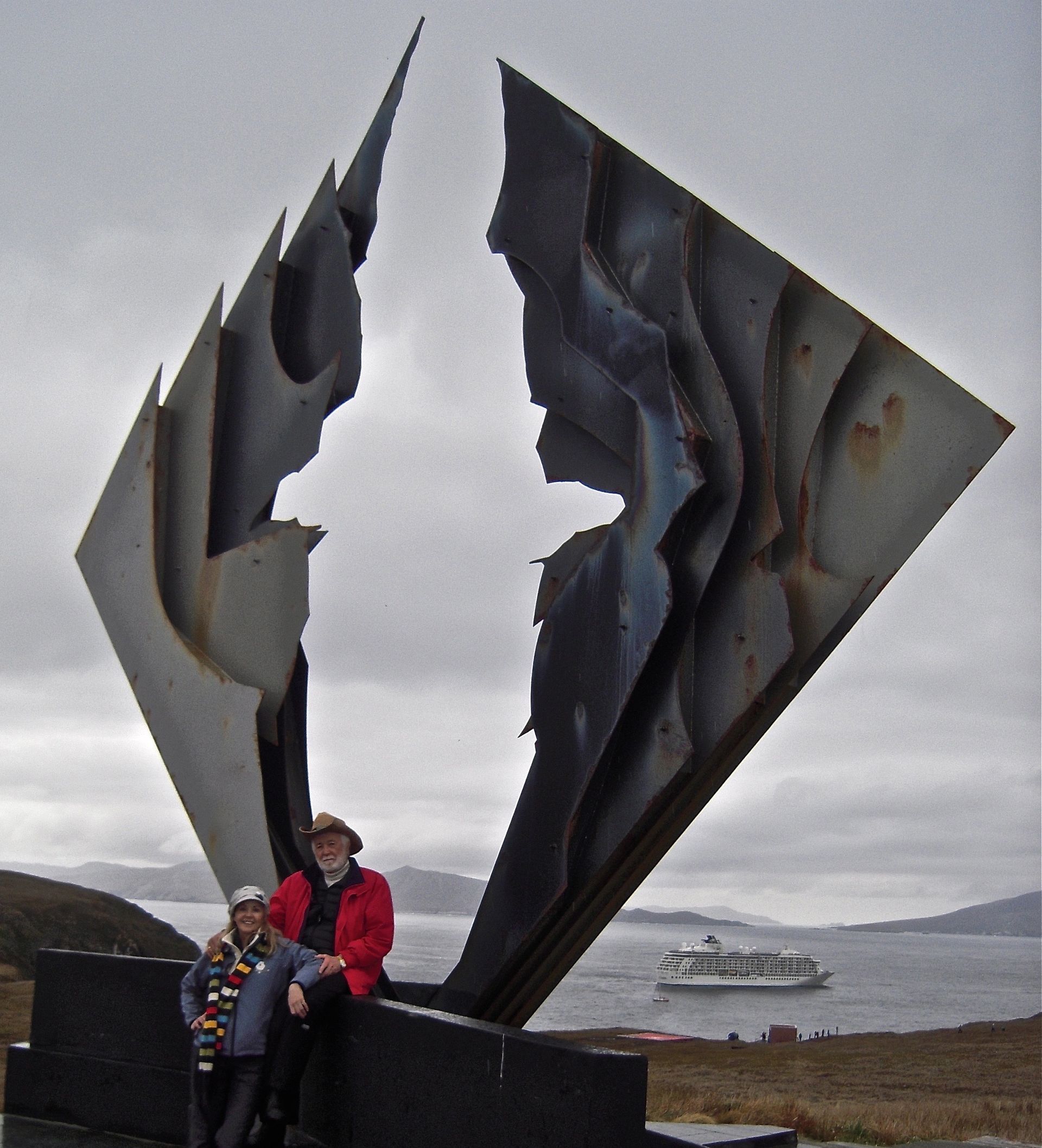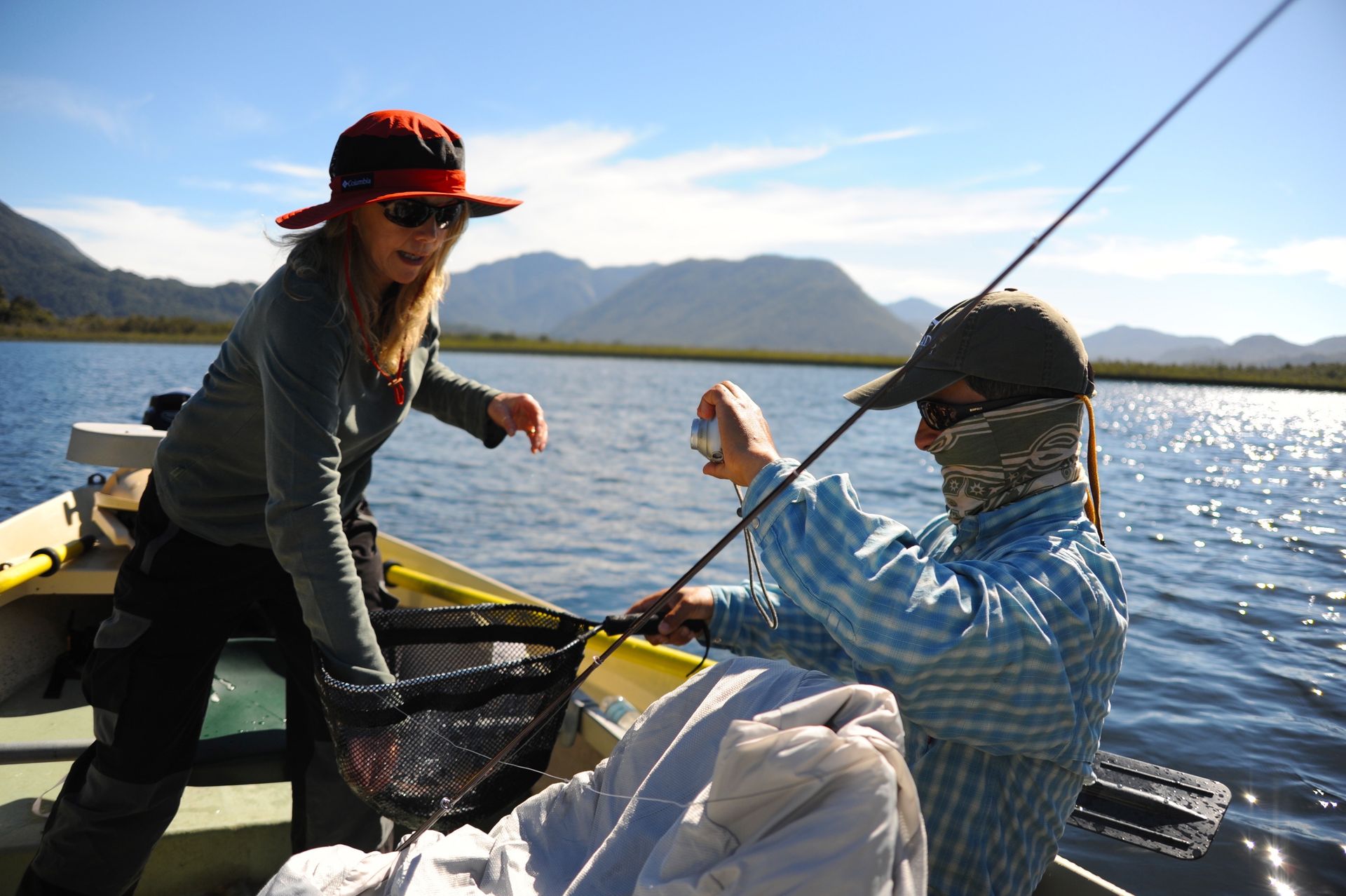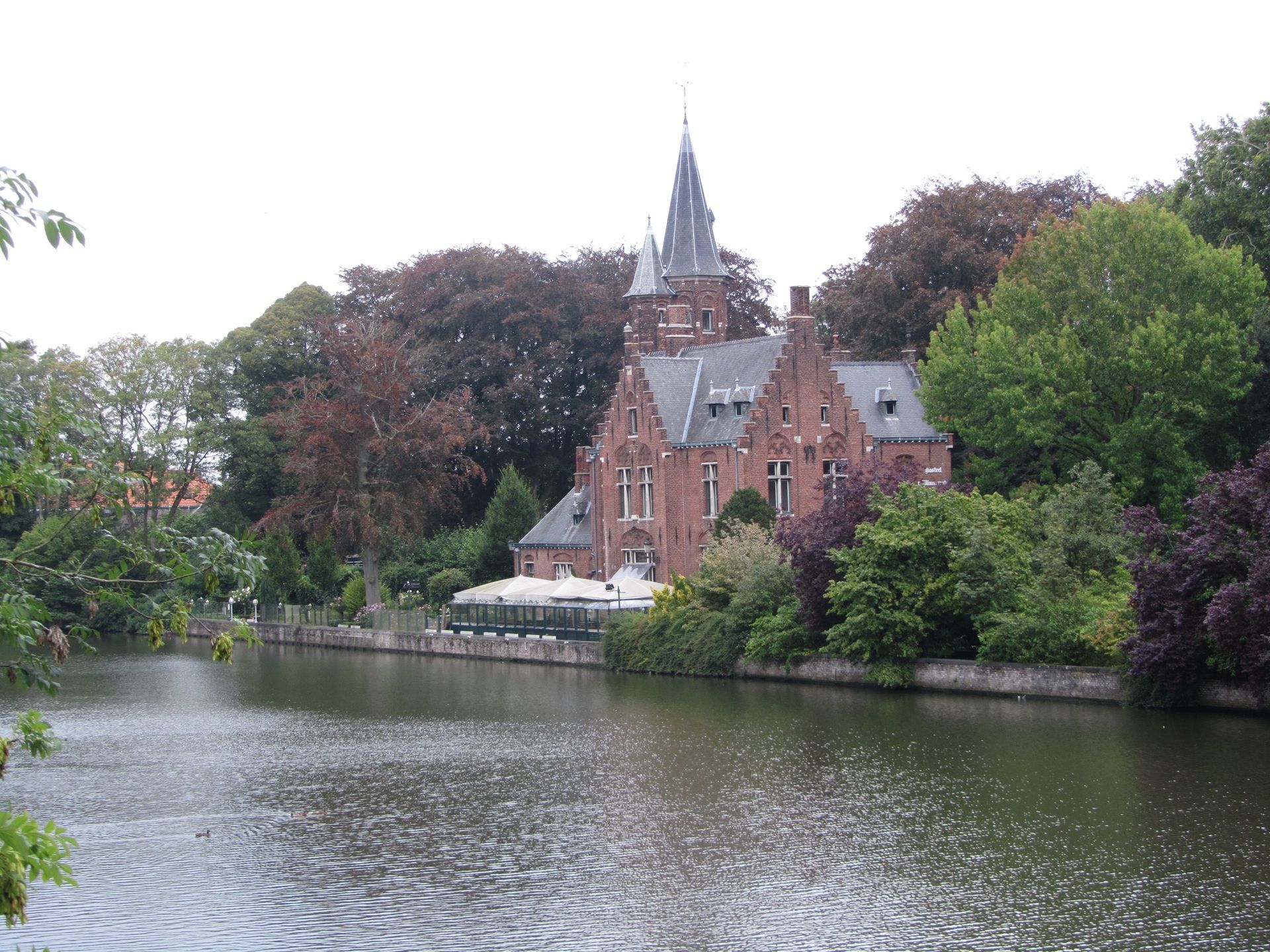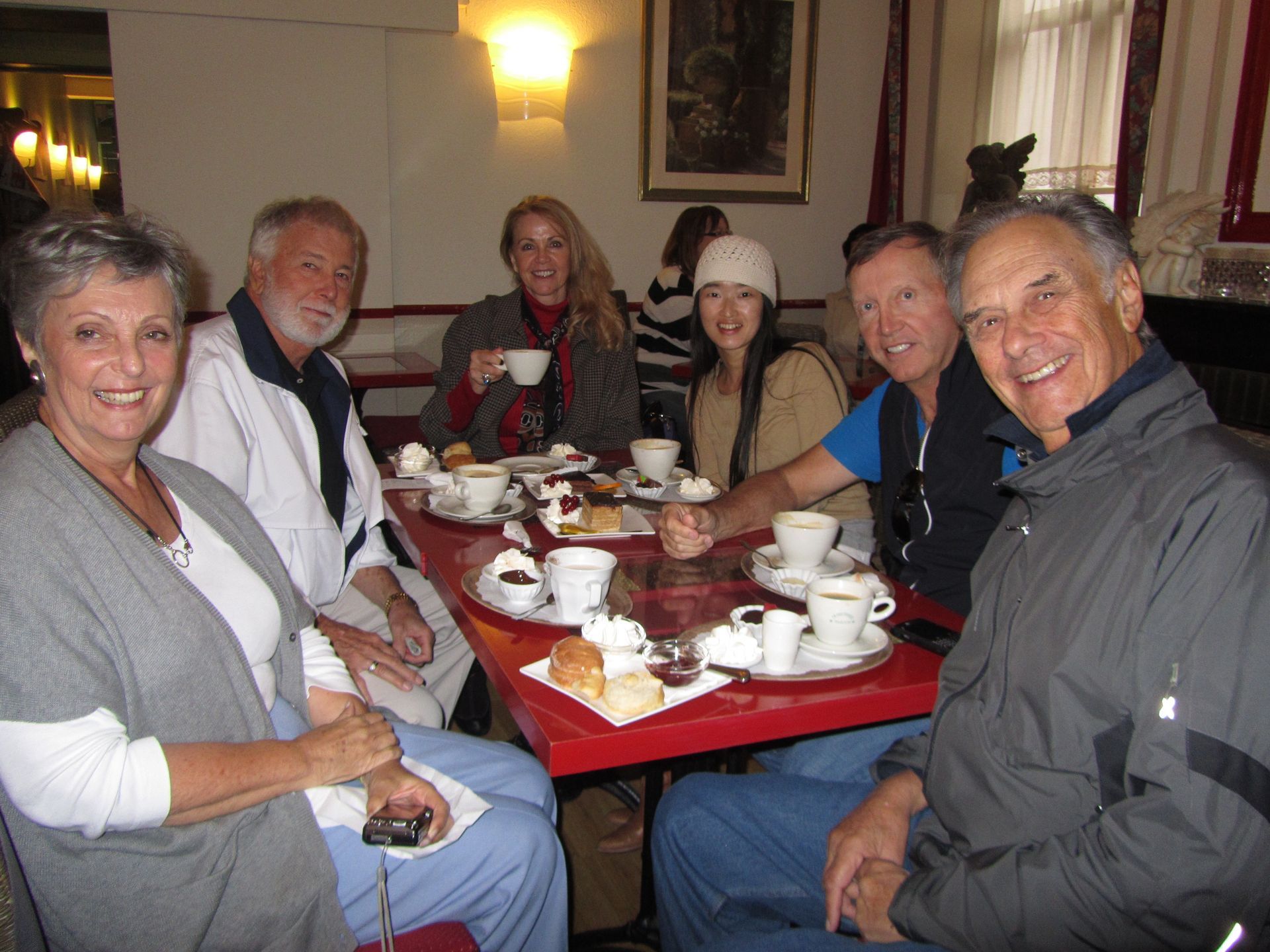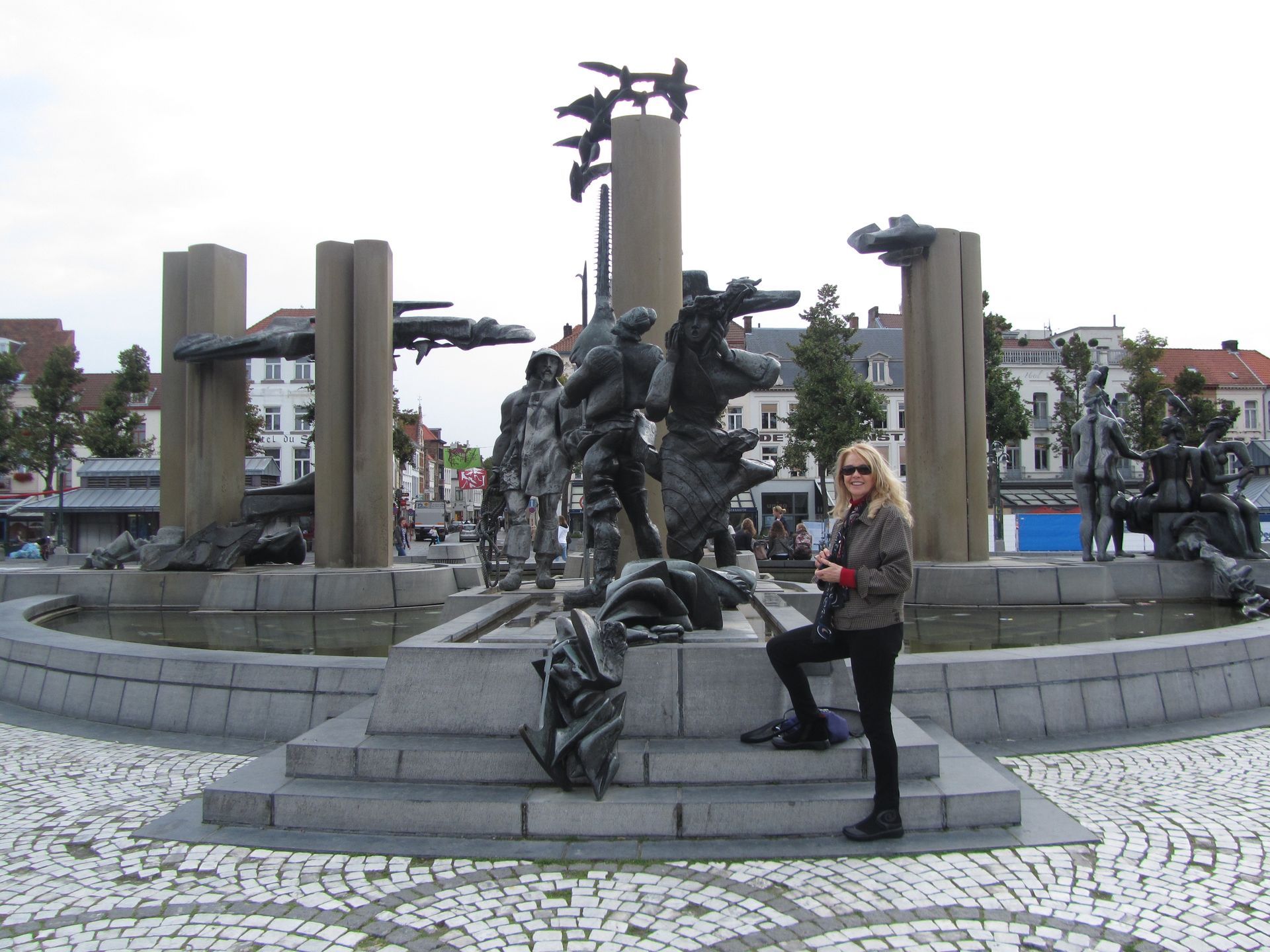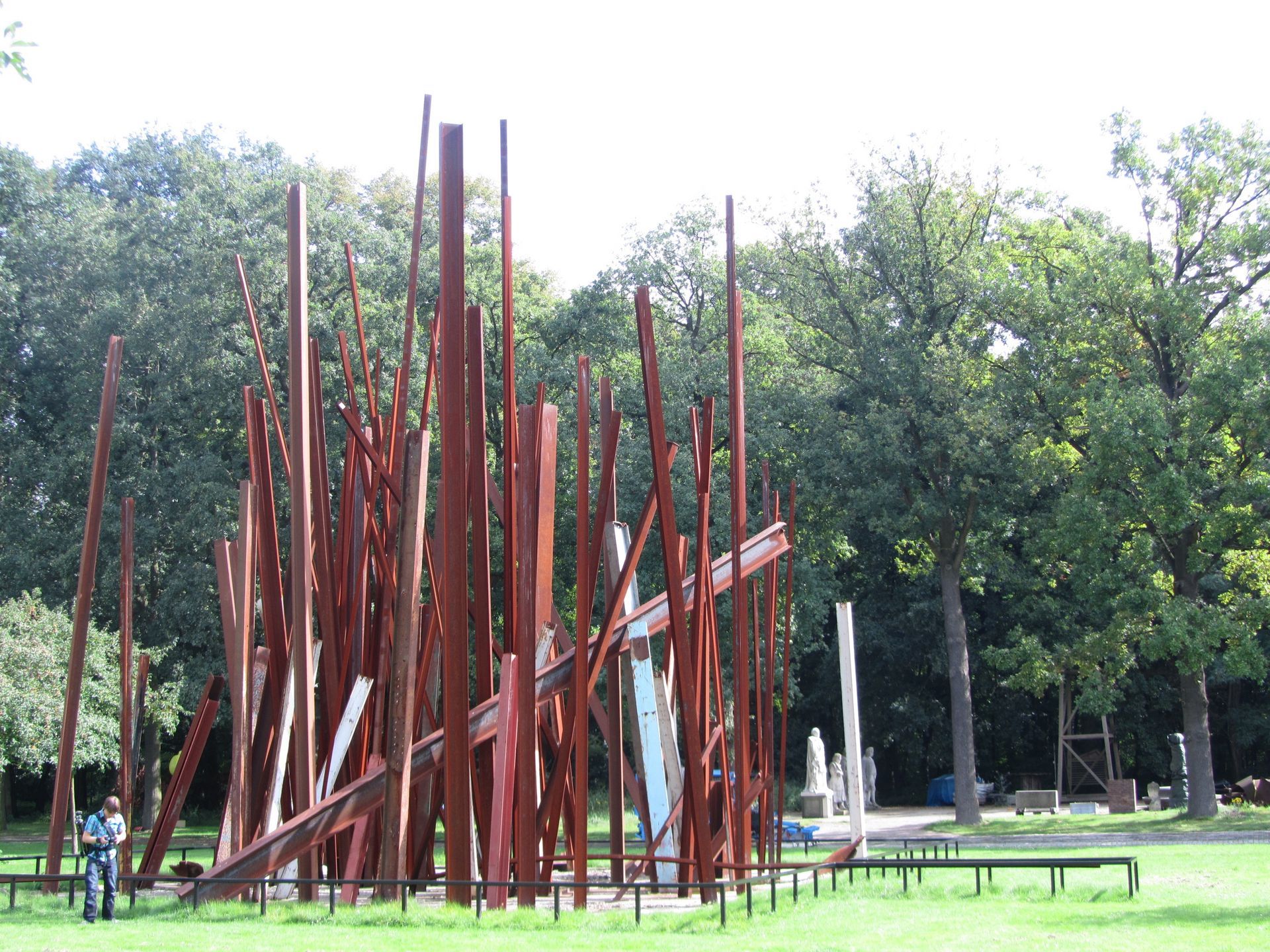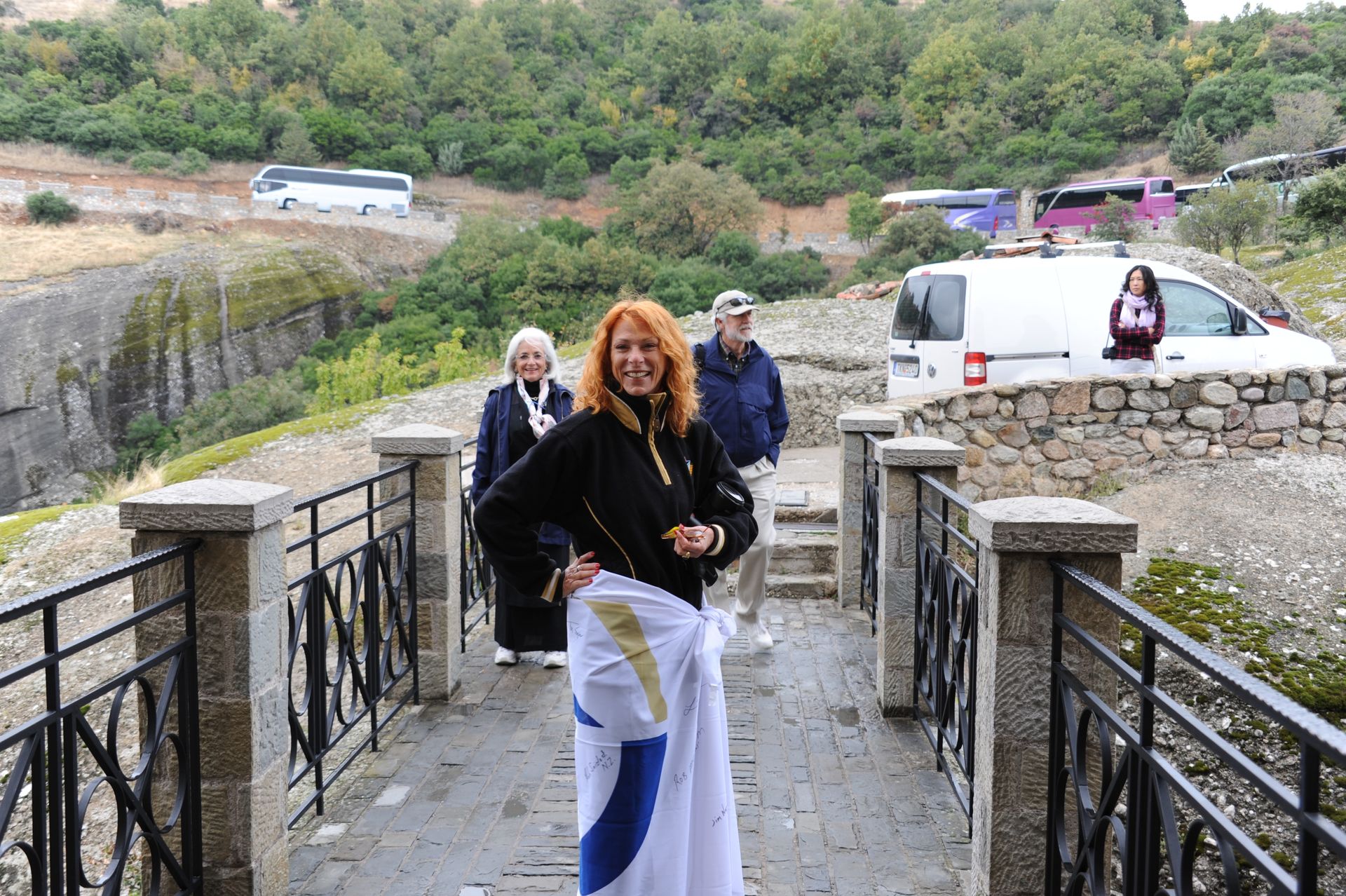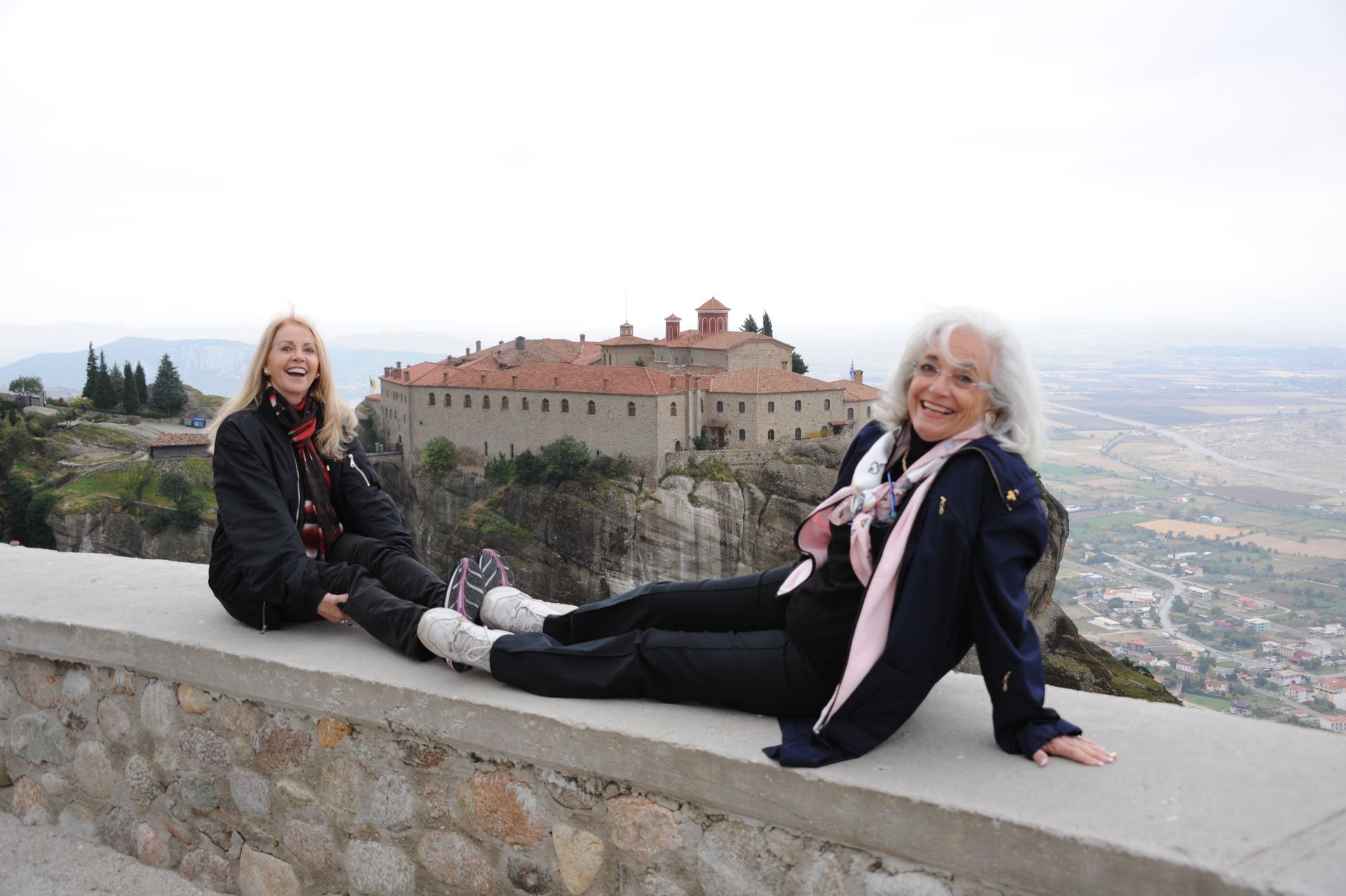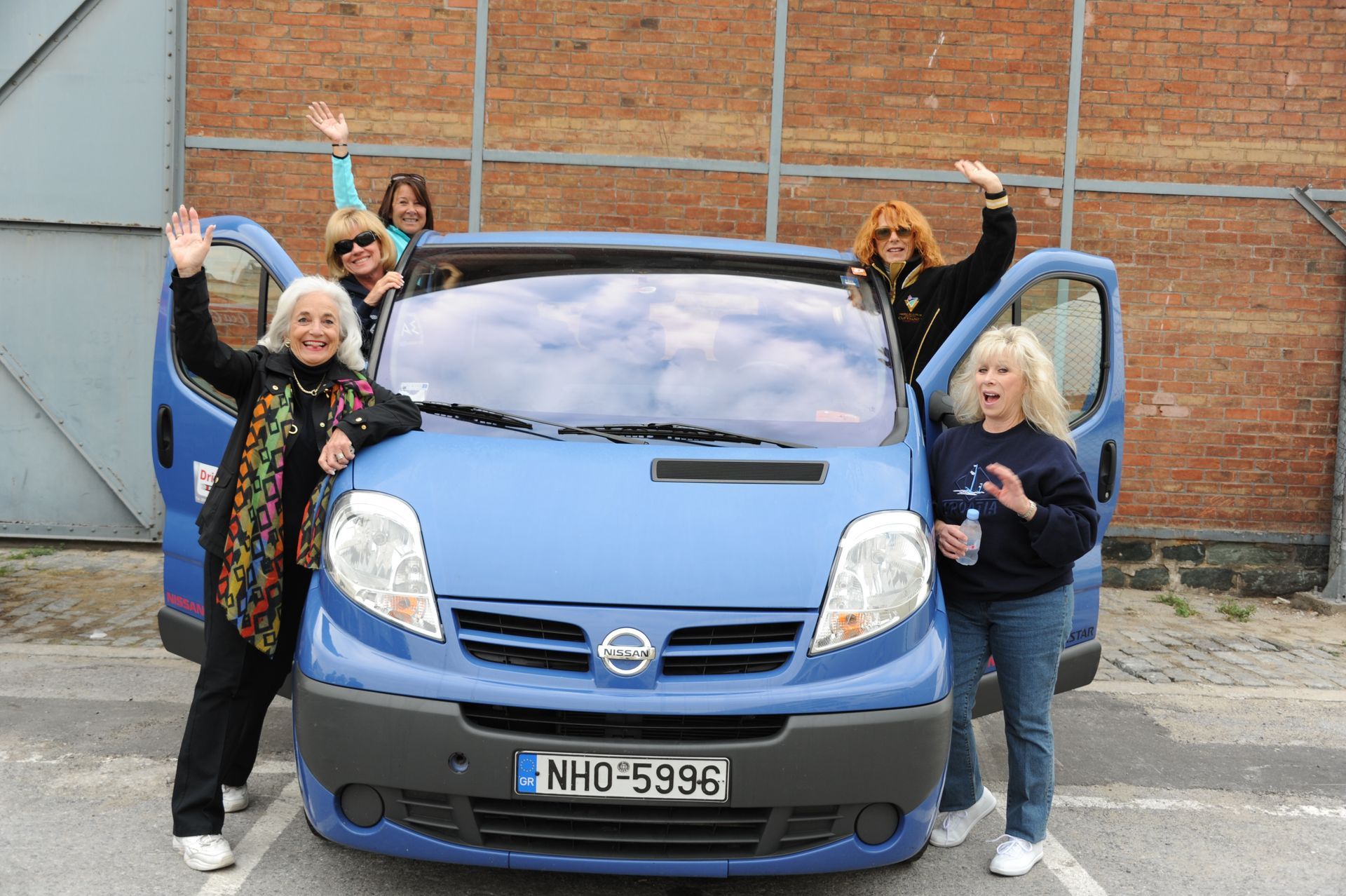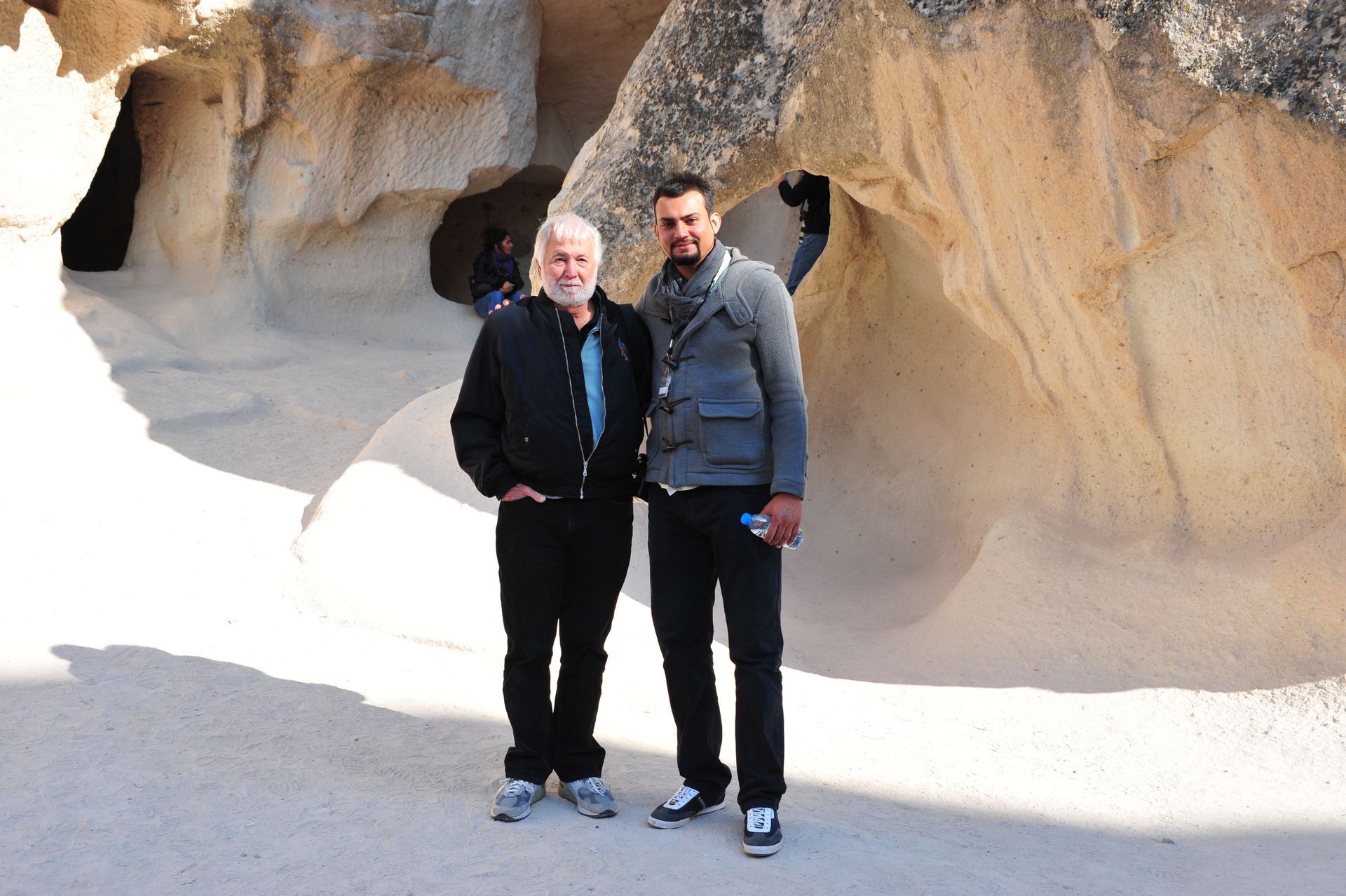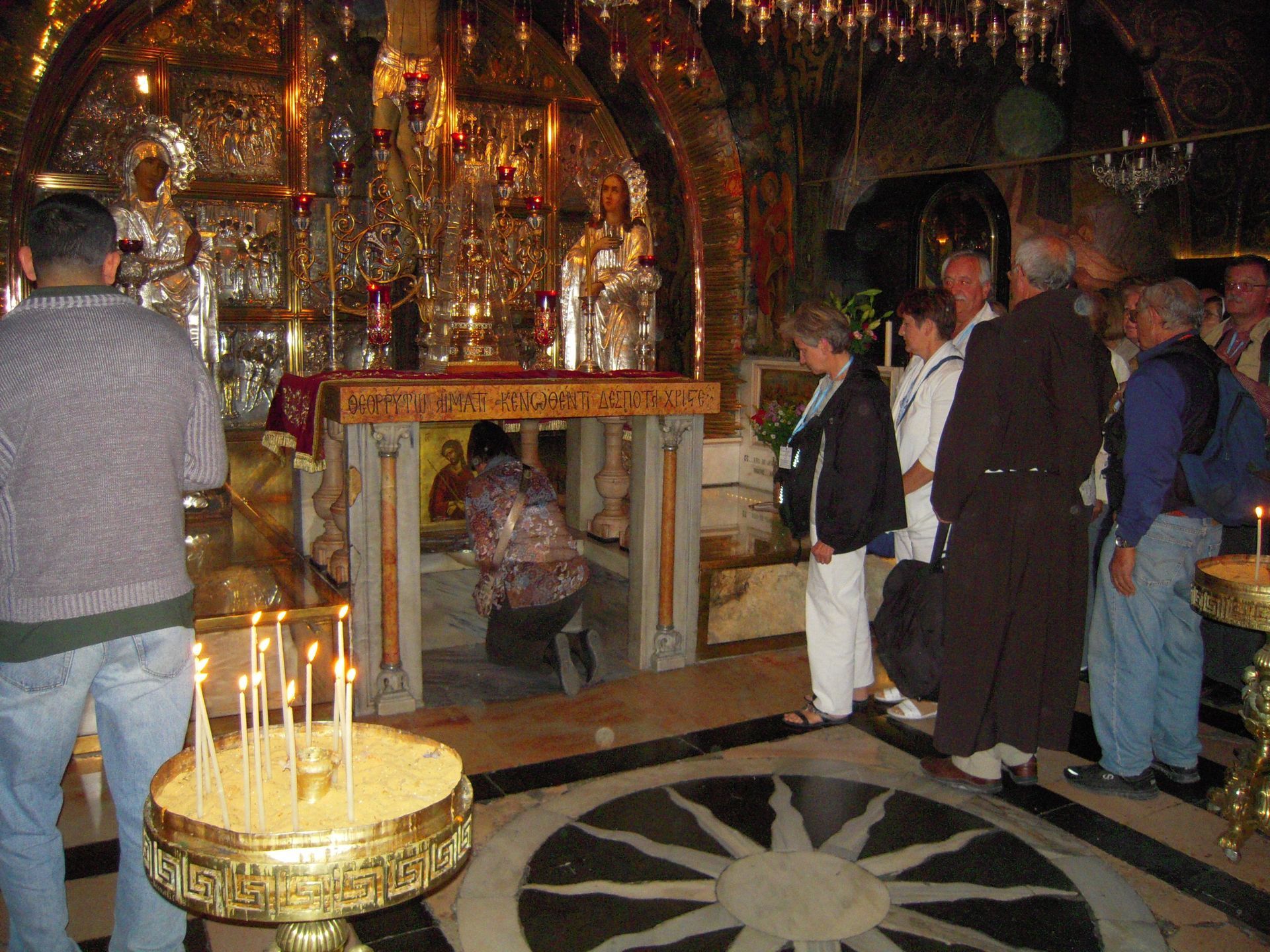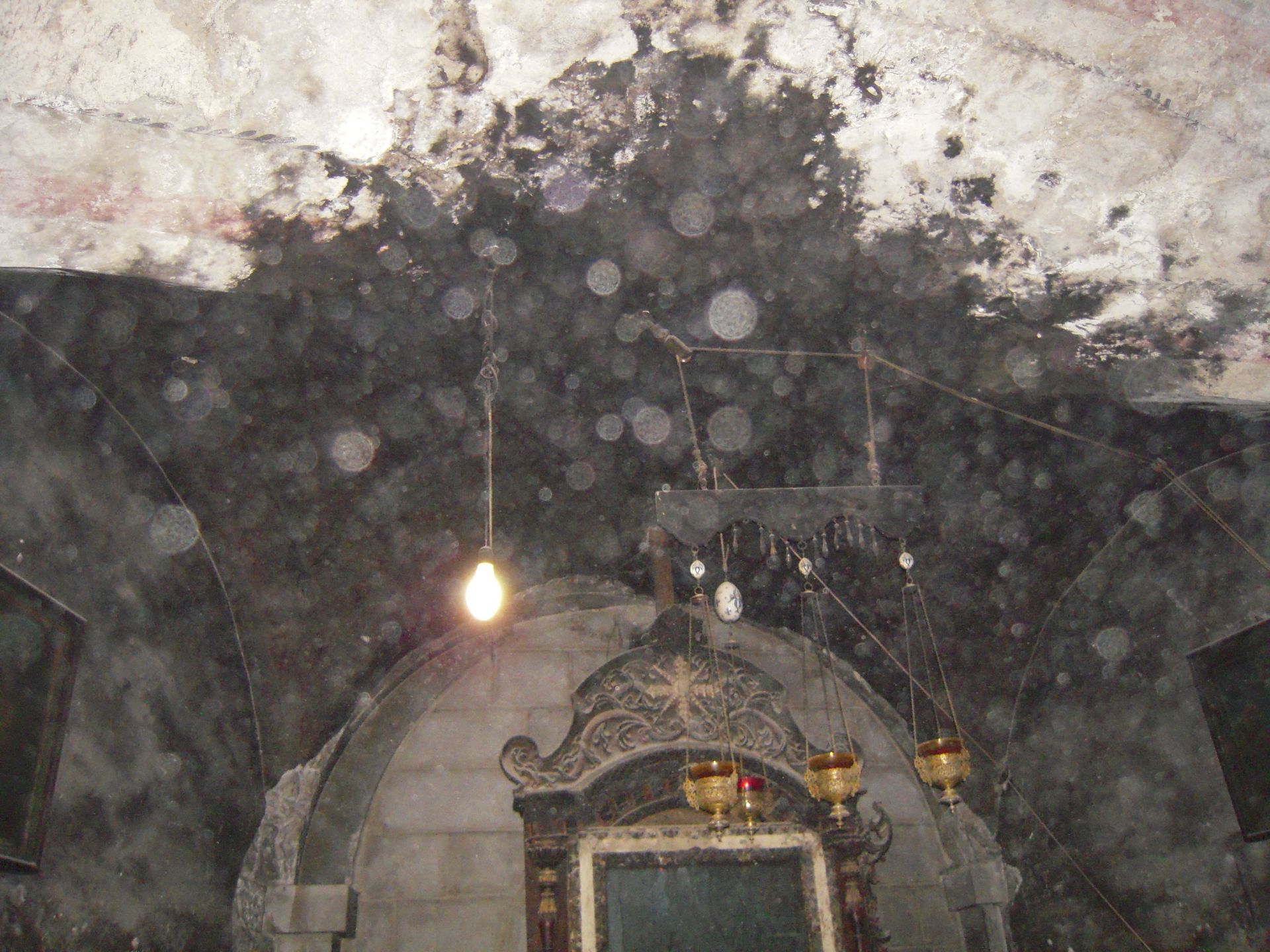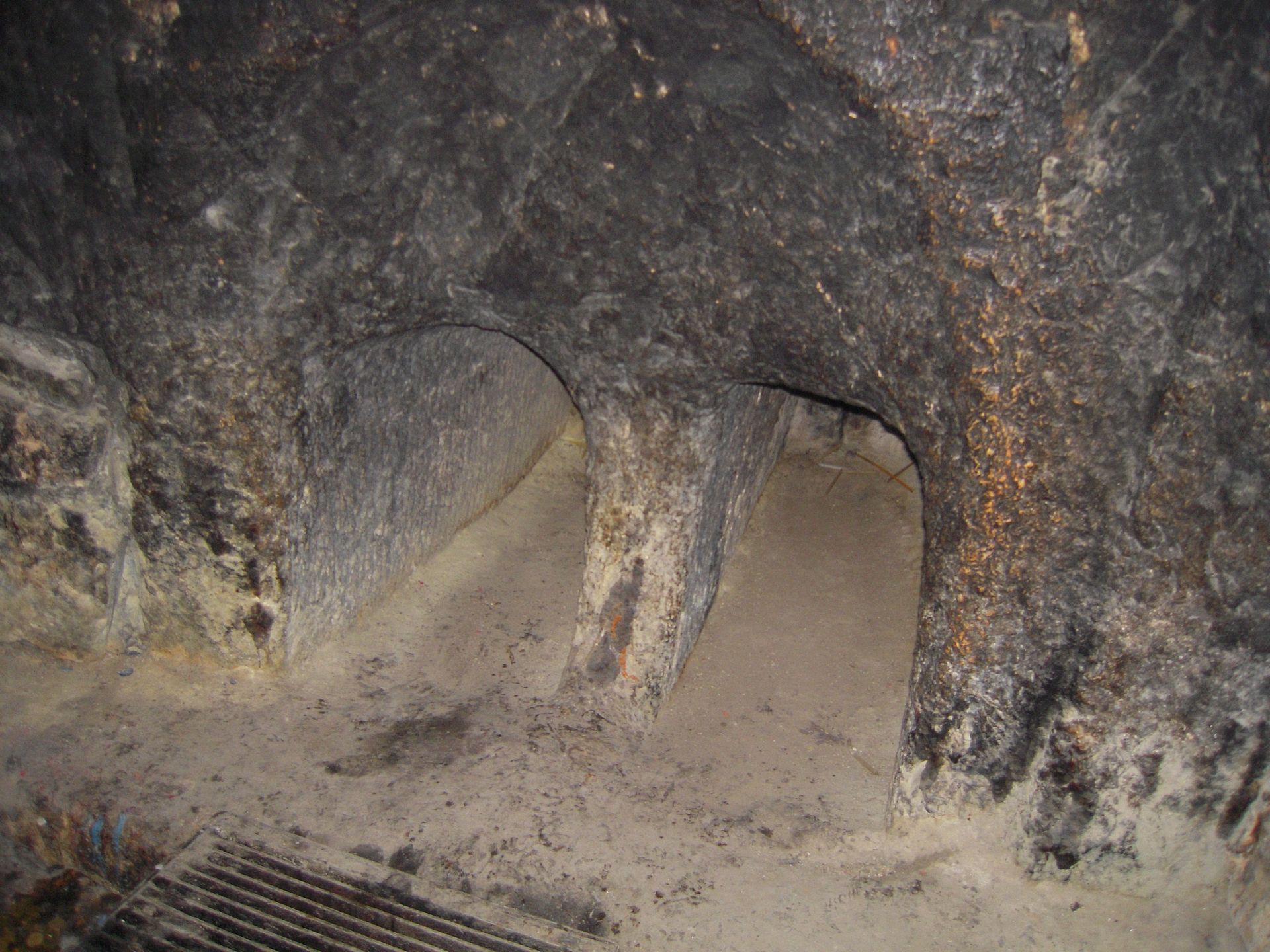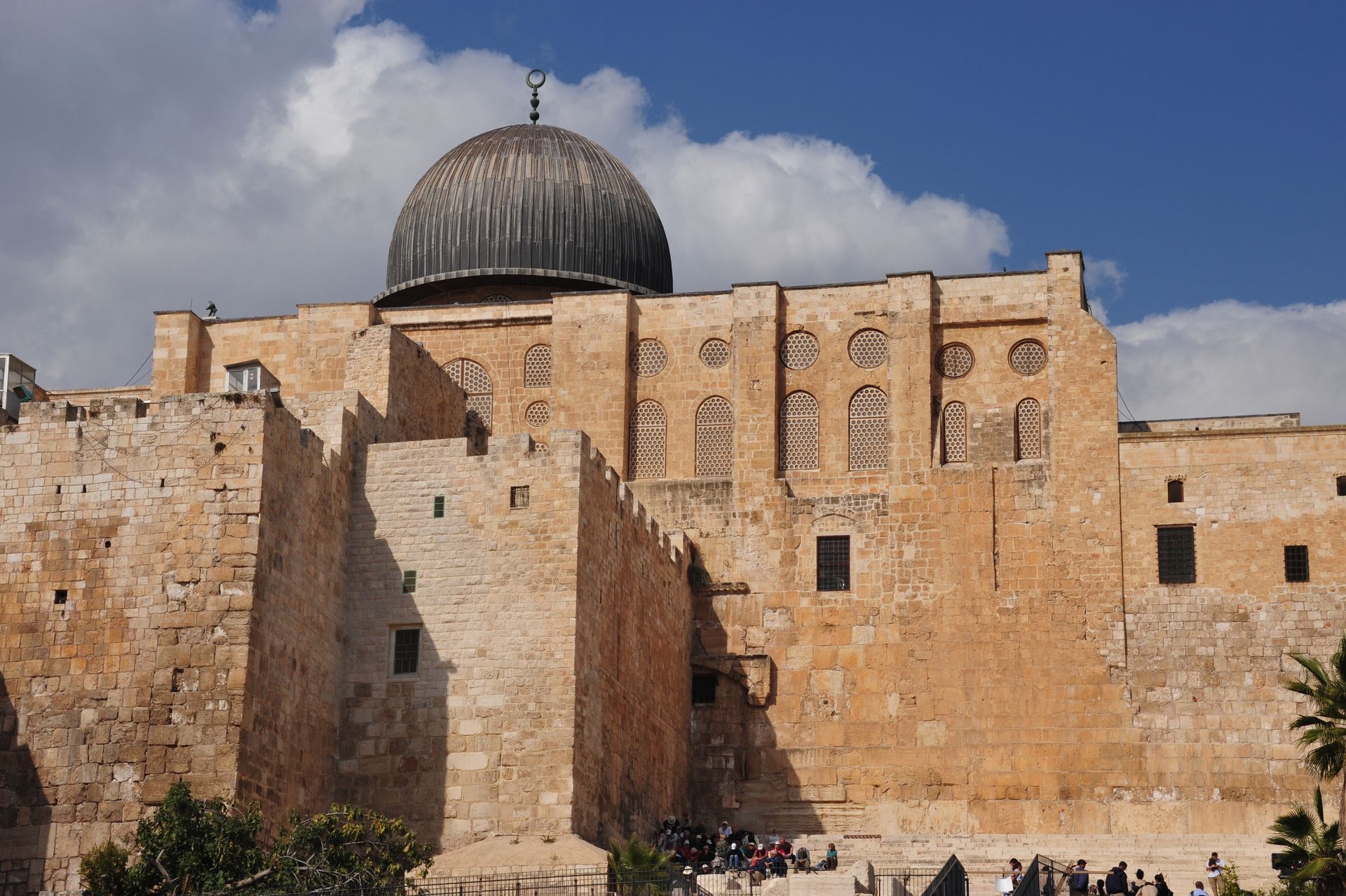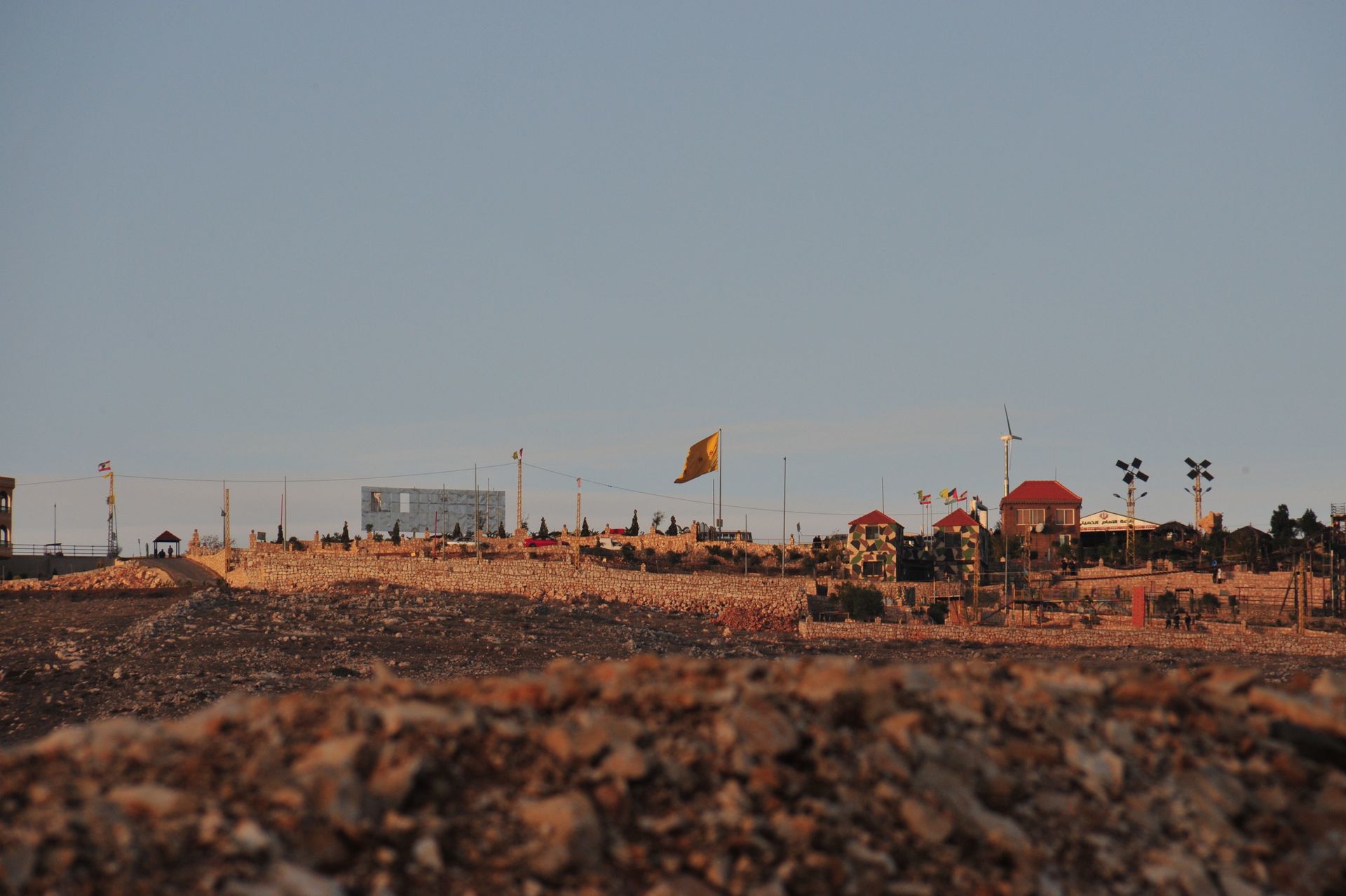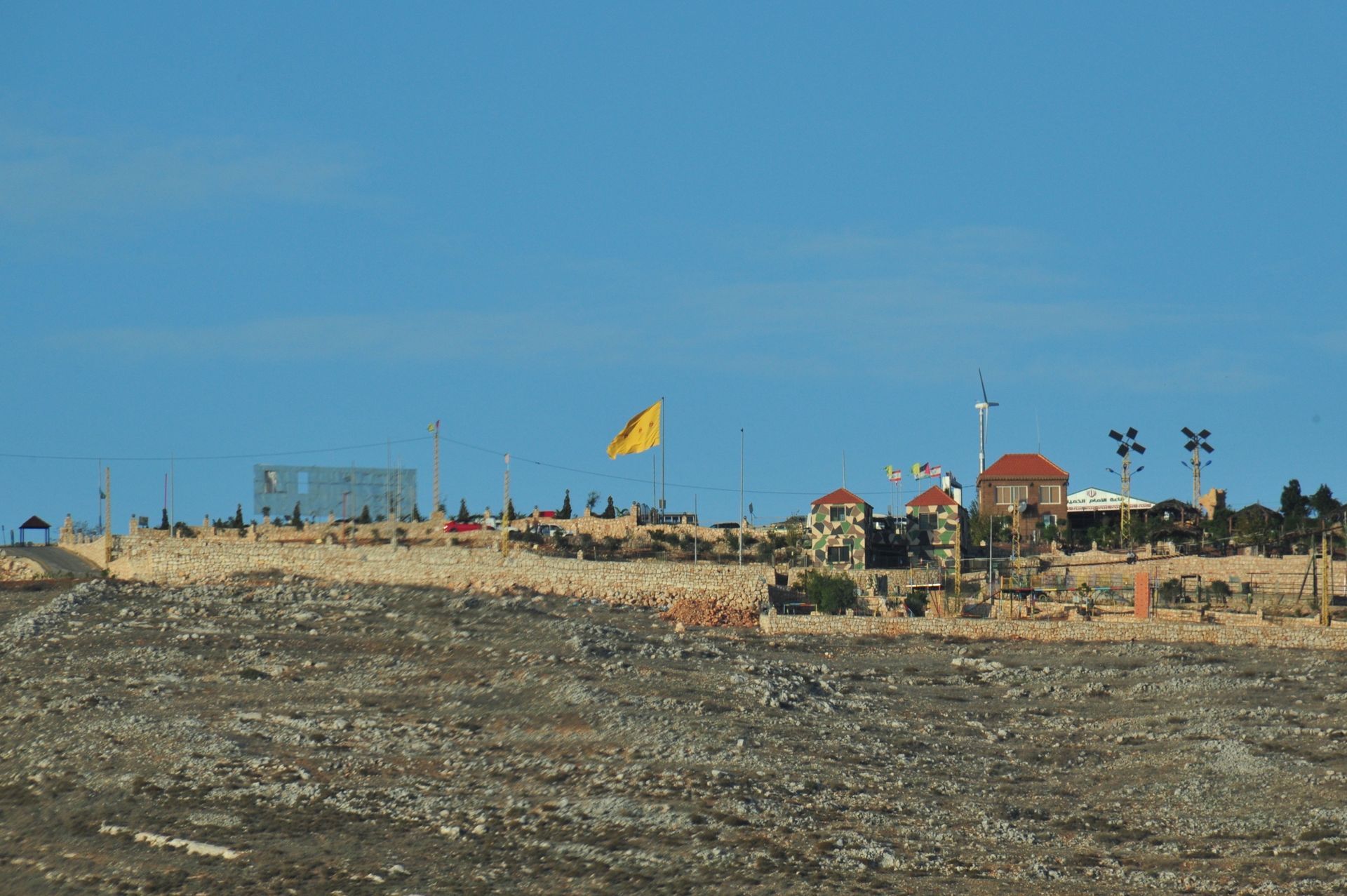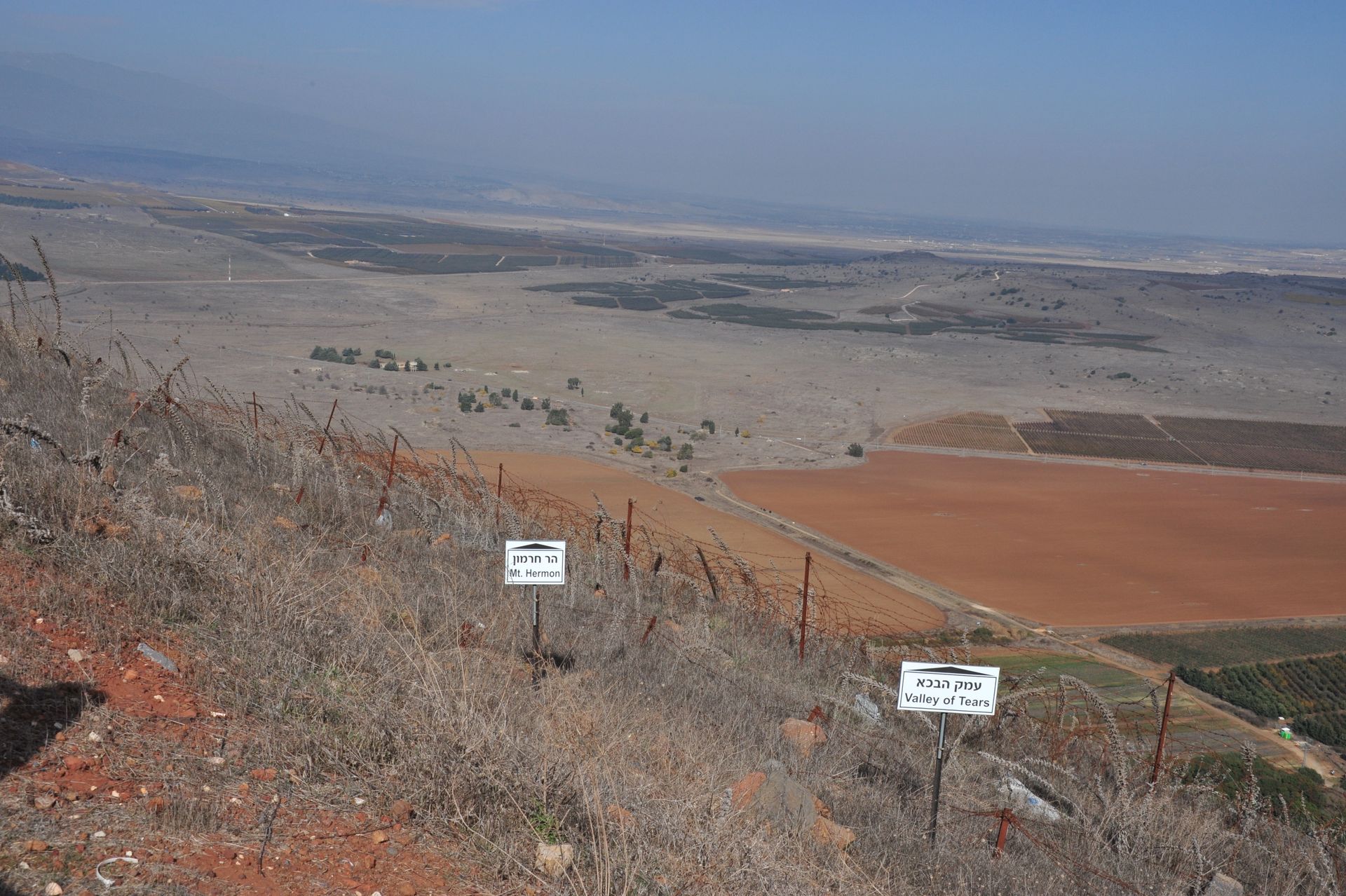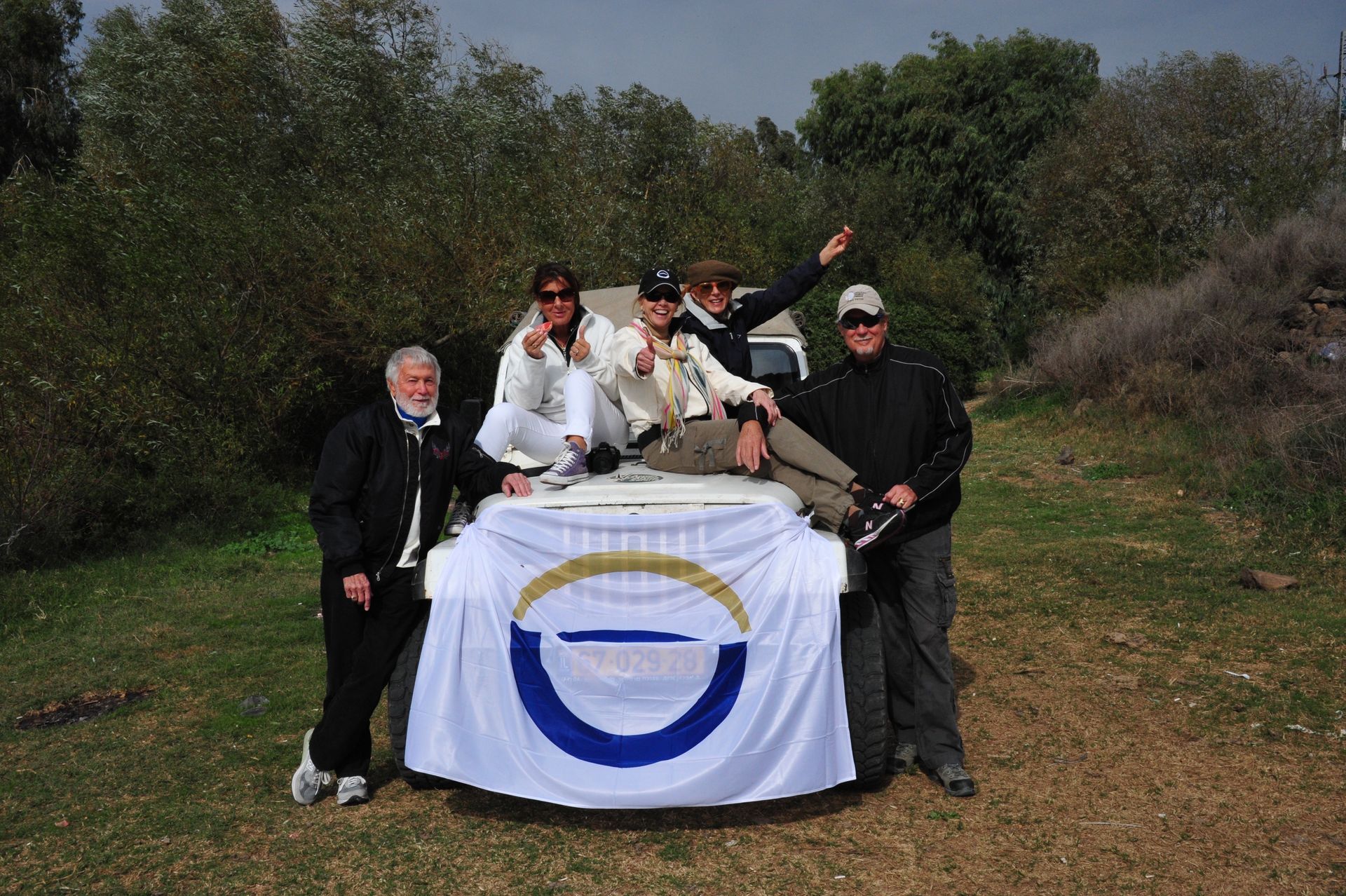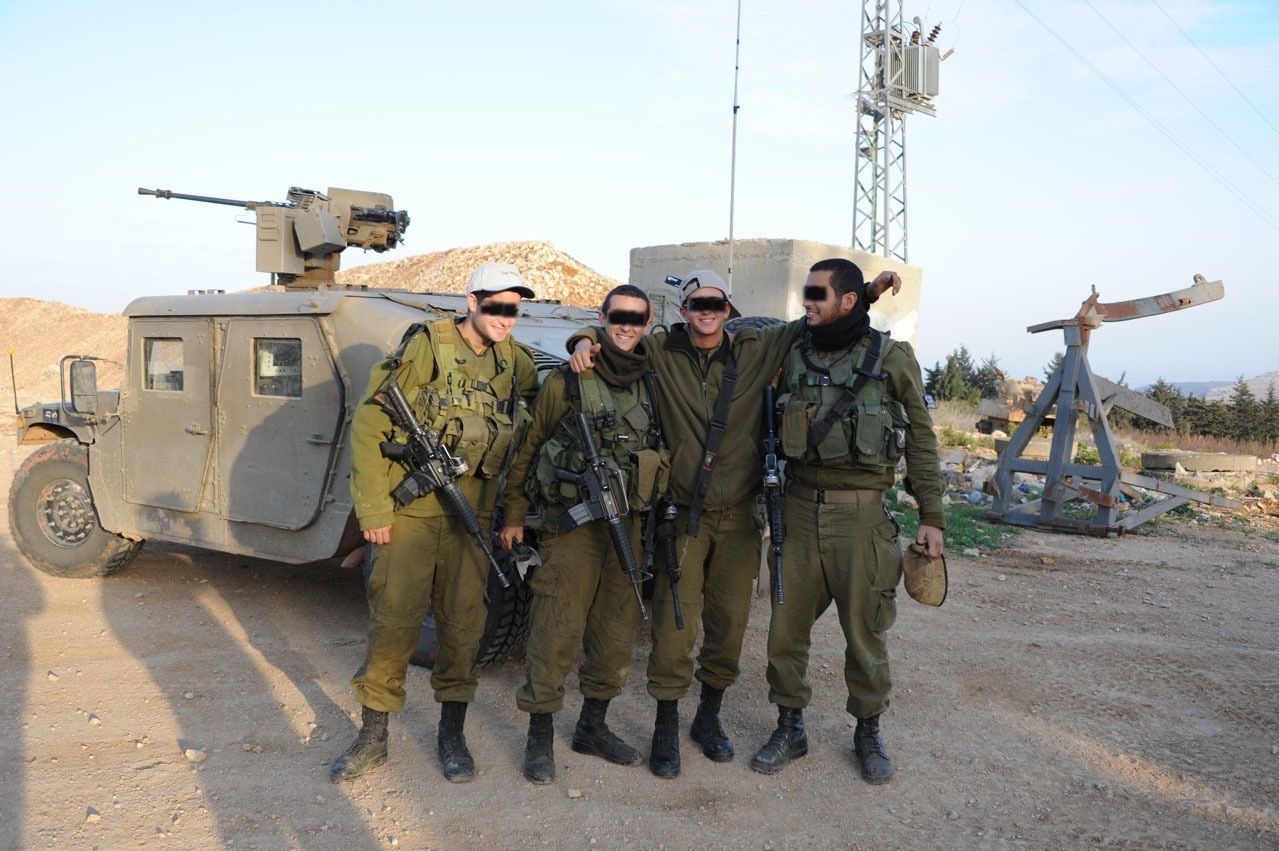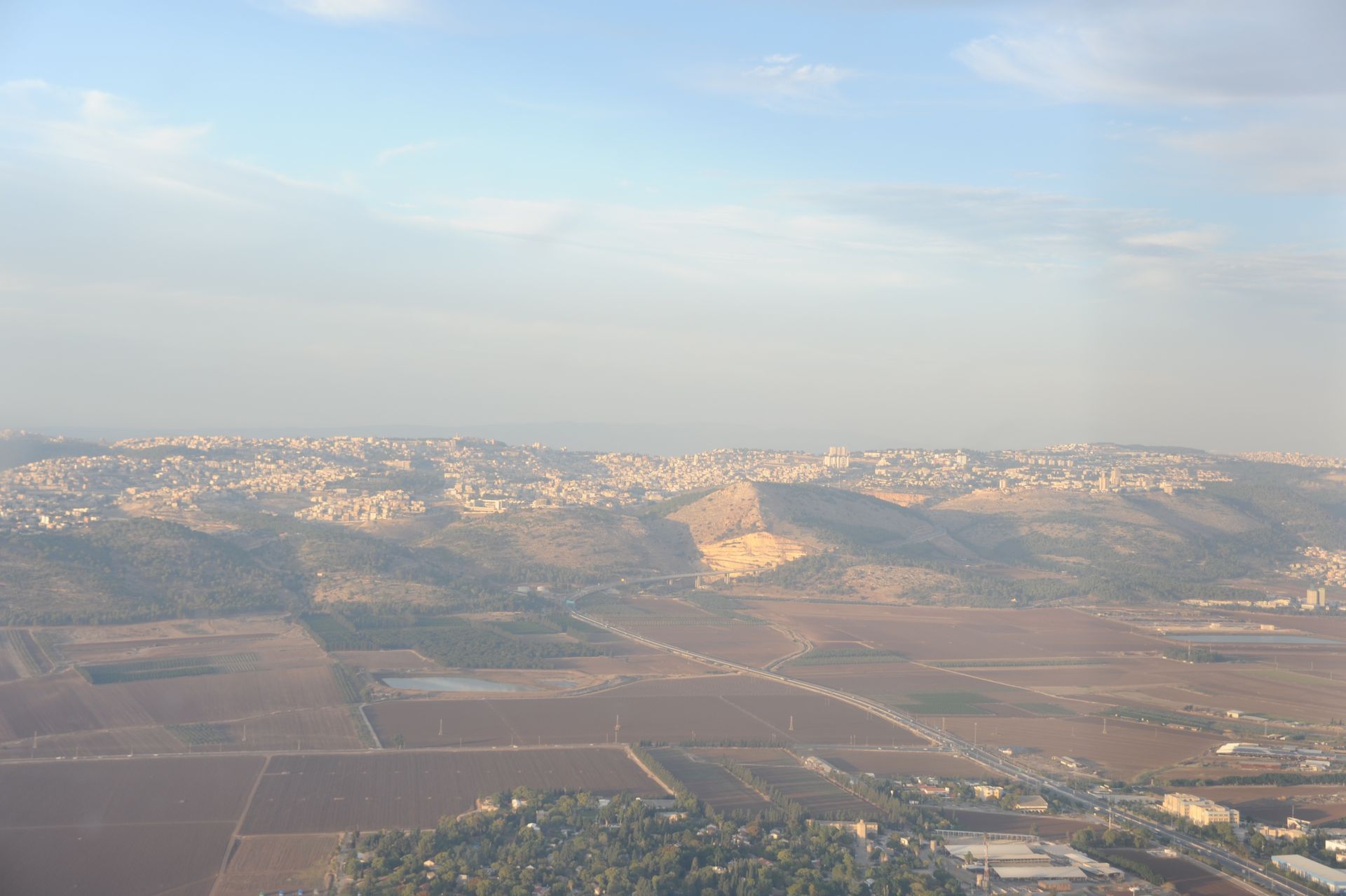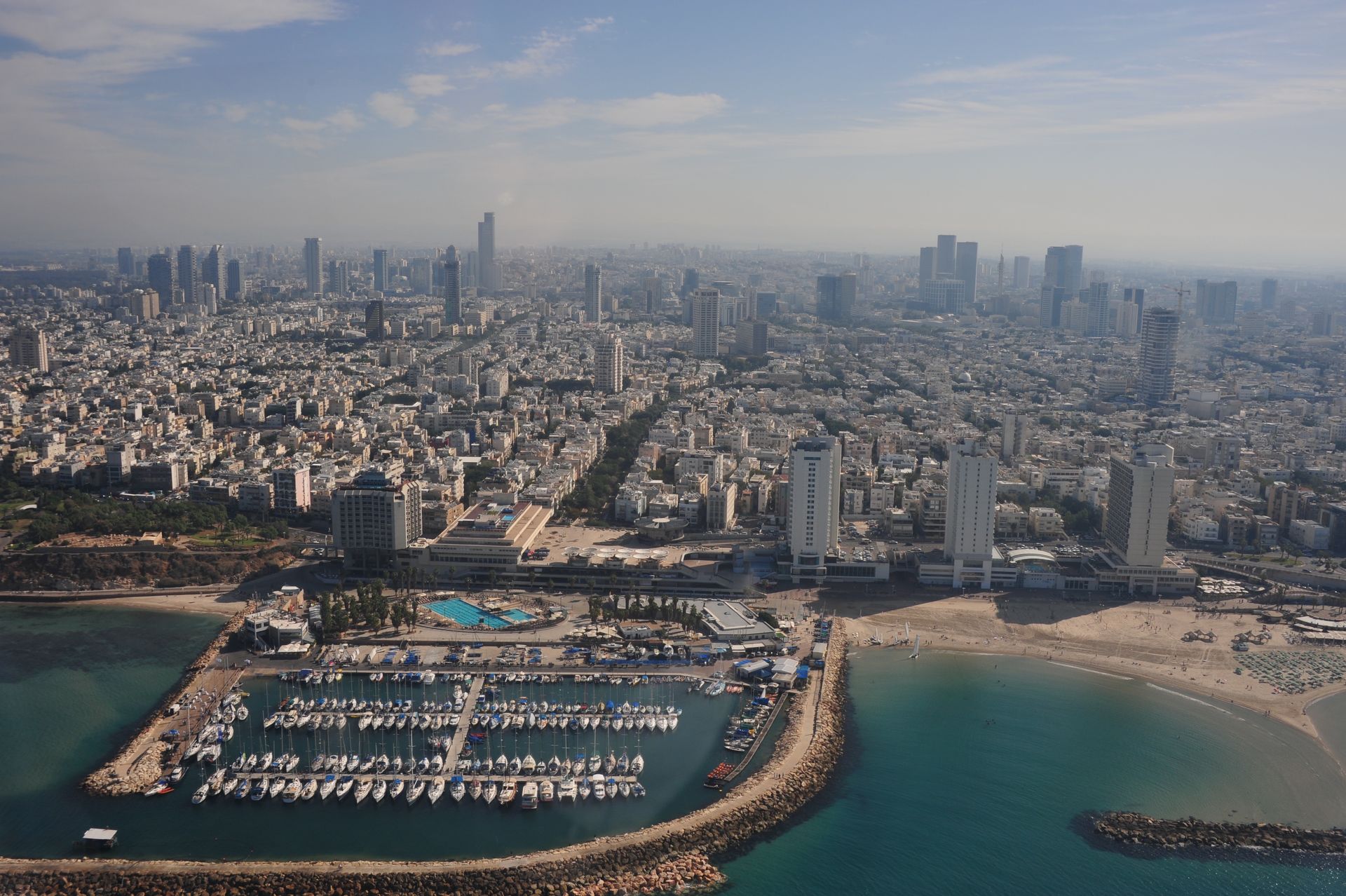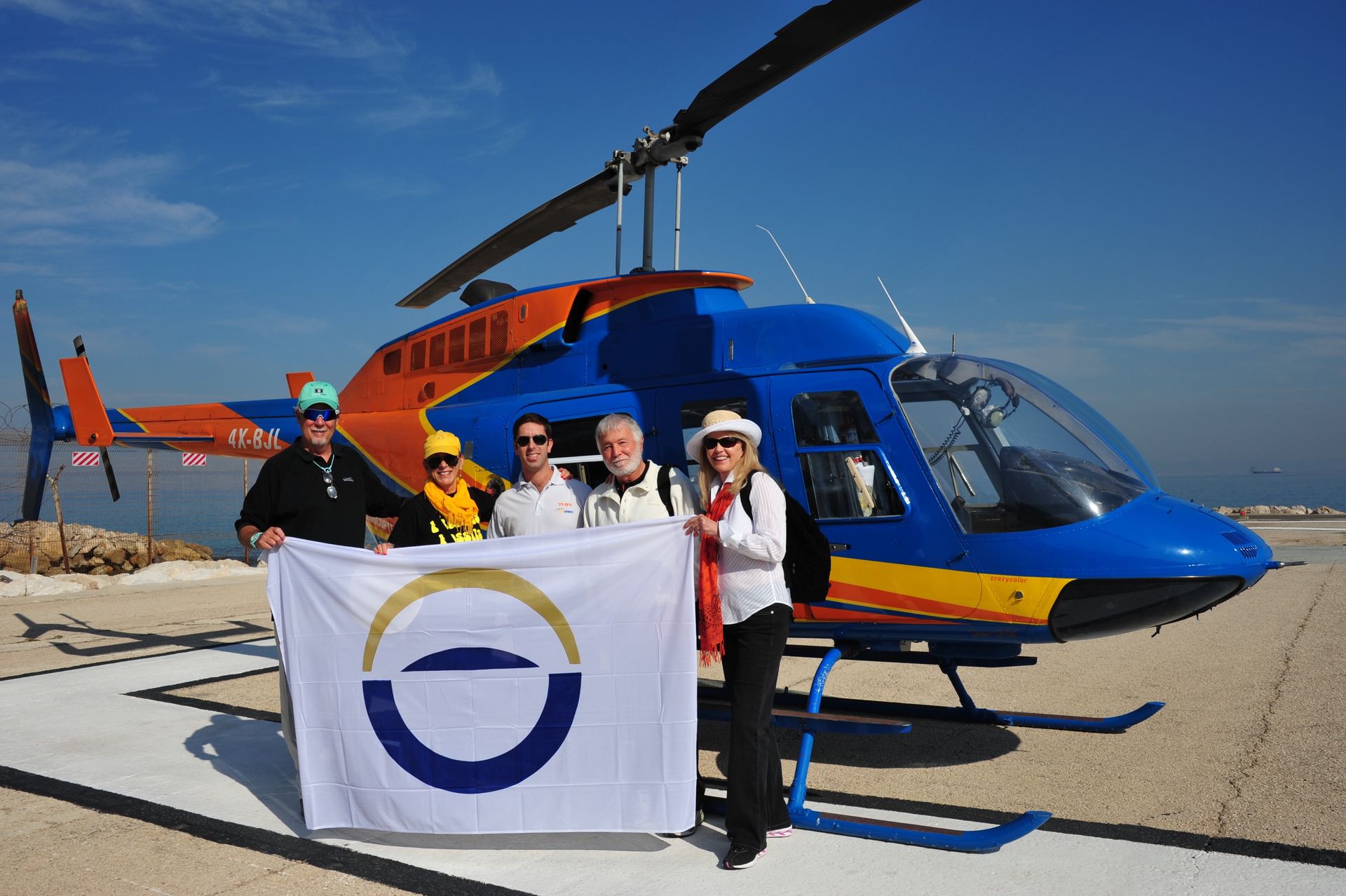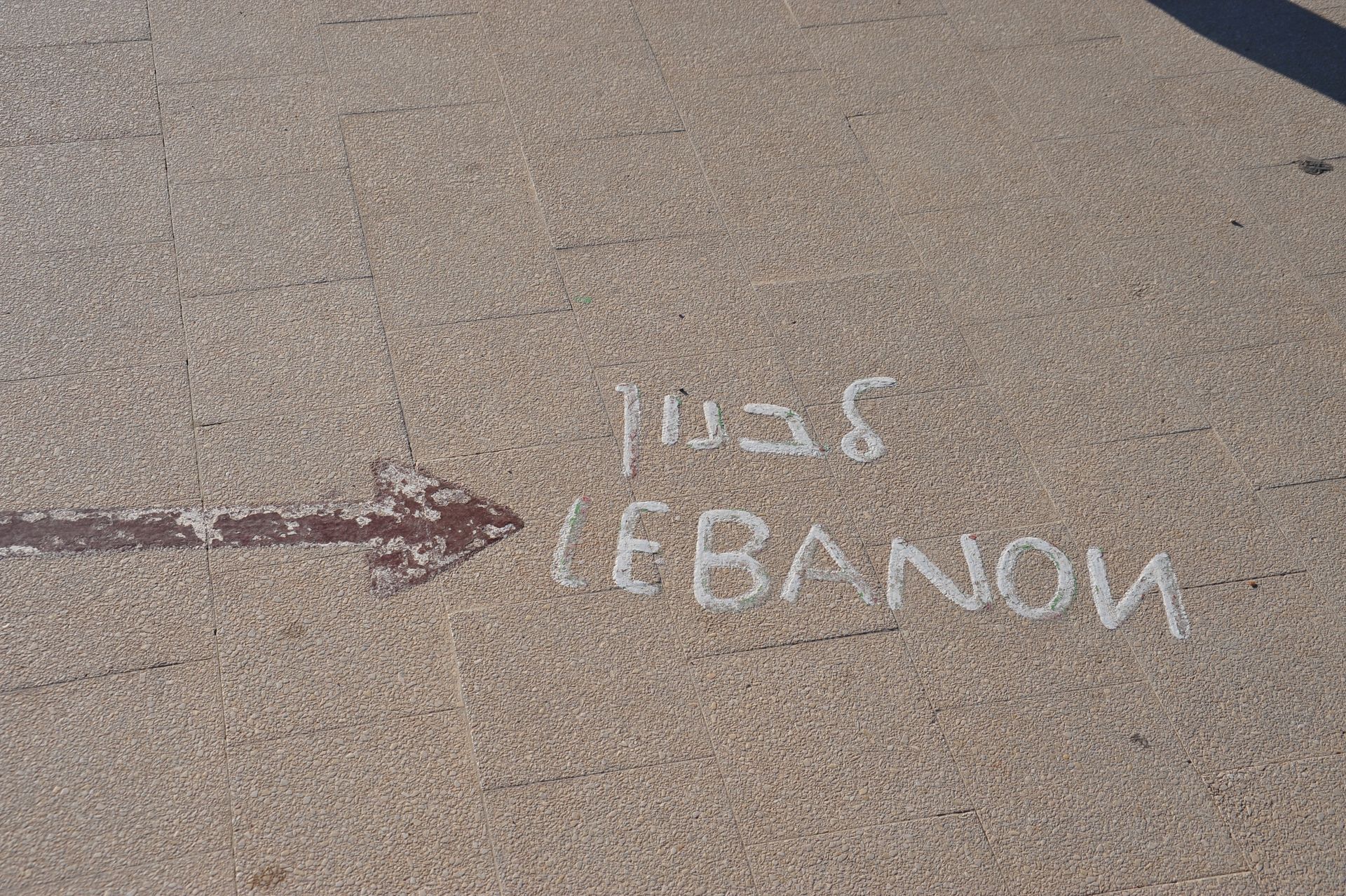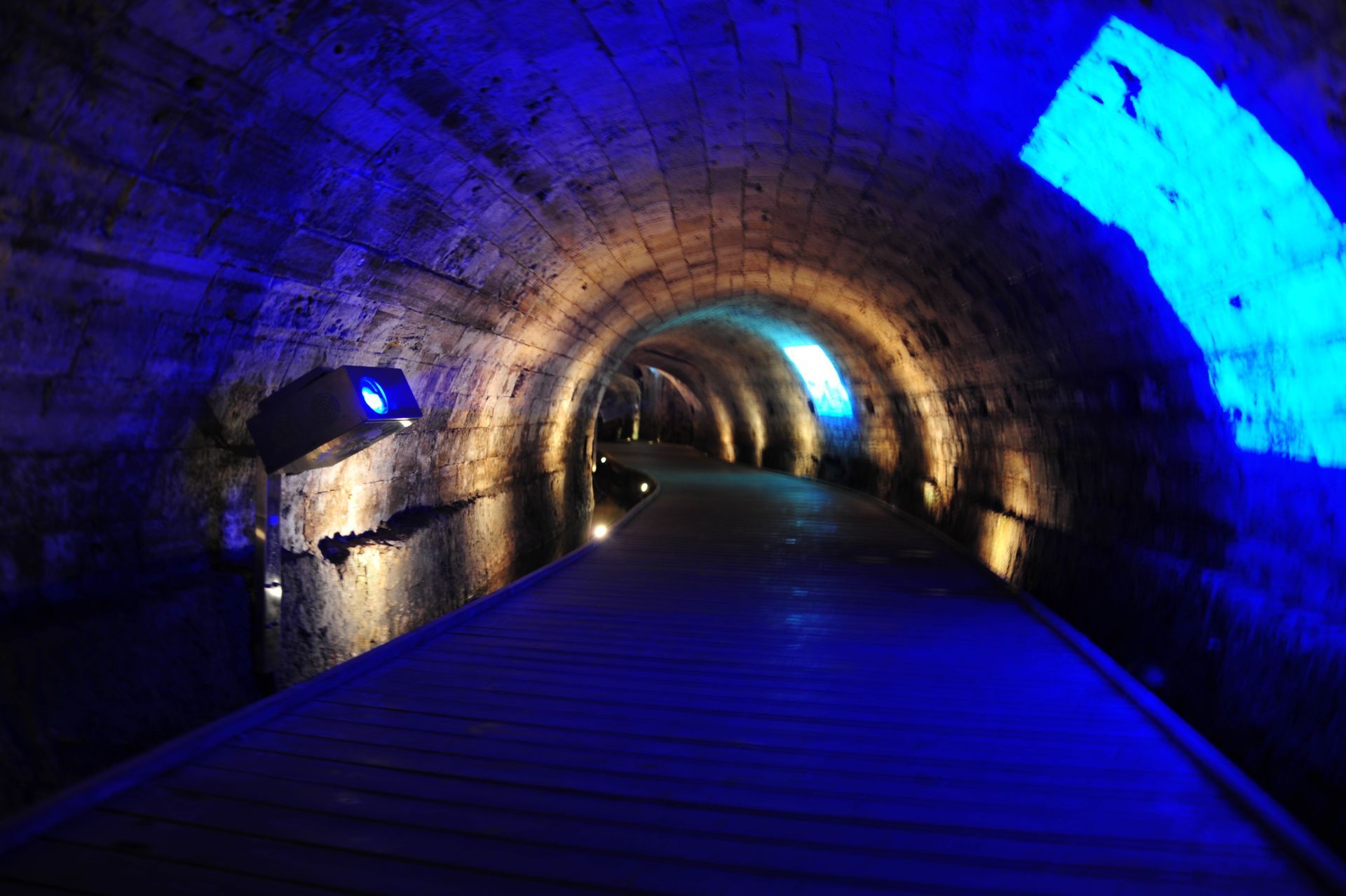2011 World Adventure
Vikings in Canada! Our expedition drew to an end on the northern reaches of the Great Northern Peninsula of Newfoundland and Labrador. Here we set off to view the archeological remains of the oldest known European settlement in the New World: L’Anse aux Meadows, or “Jellyfish Cove,” French sailors called it. On this site are the foundations of eight sod-covered buildings along with copious artifacts - that were part of a small Norse settlement that has been dated back to the eleventh century! There is also evidence of native habitation dating back about 6,000 years. The spot is now a United Nations Educational and Scientific Organization World Heritage Site, and the Canadian Park Service has restored/recreated the Norse buildings, including houses, a forge, and a church.
The ruins themselves are not much to look at - large grass-covered mounds arranged in a square. So you need a good guide. Unfortunately since we were now out of the Arctic, we had forgotten the cardinal rule of dress: layer, layer, layer; and so we stood in a bitter-cold wind unprepared for the chill, listening to a very long-winded explanation from the Guide about the Vikings and their culture, literally freezing! At one point I looked around to see that Len had disappeared; and, I had grown so cold that I ran on ahead and ducked into one of the restored huts. Inside, I was rewarded by the sight of Len sitting comfortably, as he warmed his hands by a crackling fire while engaged in conversation with an actor-historian dressed in period costume, who was explaining the activities that took place in that particular hut! Eyeing me, Len got a Cheshire grin on his face, and sheepishly moved over to make room for me on his hay-bale bench . . . a fine Viking he would make!!
Embarked: September 18th 2010
Debarked: September 18th 2010
- St. Anthony Newfoundland (Canada)
USHUAIA AND SOUTH GEORGIA ISLANDS
Our adventure to the frozen wilderness of the South Pole began with a flight to Ushuaia, Argentina - the southernmost city in the world. While enjoying a scenic sunset dinner overlooking the Beagle Channel, Len, Dave, Chase and I eagerly anticipated our crossing of Drake’s passage which would mark the beginning of our expedition to the sub-Antarctic island and islets of South Georgia and beyond!
Our days at sea in the cold waters of the Antarctic Ocean were intermixed with iceberg sightings of every size and shape imaginable, wildlife encounters, zodiac cruising & landings, kayak excursions, and glacier trekking – all augmented by lectures with marine biologists, polar explorers, polar geologists and naturalists, penguin specialists, Antarctic cold water dive specialists, historians, kayak leaders, zodiac drivers, ice masters, and ornithologists. An outstanding team assembled by expedition leaders, Tim Soper and Rob McCallun.
As the ship cruised past the Shag Rocks in the western regions of South Georgia Island, the air grew colder, the sea got rougher and our excitement mounted. At the northeastern most point of the Antarctic Peninsula, Antarctic Sound known as “Iceberg Alley”, we encountered thousands of massive tabular icebergs drifting north from the Weddell Sea. While we didn’t know it at the time, our Christmas photo was destined to be taken at our zodiac landing site in St. Andrews Bay just as the sun crested over glacier-laced mountains. It added a mystical golden hue to the literally hundreds of thousands of King Penguin couples and their molting chicks who greeted us with loud raucous calls of welcome!! We were quite lucky to have landed because due to a drastic shift in sea conditions it wasn’t possible for any other zodiacs landings that morning!! Gold Harbor was chosen as a substitute site, and so, twice in one day, we founds ourselves embedded in thousands of penguins - many protecting their un-hatched chick eggs between their feet, alongside hundreds of already molting chicks. Intermingled with the sea of penguins were giant Elephant seals and lively Fur seals. Cruising Hercules Bay in zodiacs brought us face to face with Macaroni Penguins – easy to recognize because of the bright yellow plumes on their heads! They are adorable!!
The Antarctic’s legendary hero, Ernest Shackleton is buried in the whaler’s cemetery, at Grytviken Whaling Station. Our visit included a simple graveside ceremony at which was left a commemorative plaque from the residents of The World Ship. On the plaque is a stone from his hometown of Kildare, Ireland provided by his cousin, Jonathan Shackleton a historian and general naturalist, who accompanied our expedition as a lecturer.
Dave and Chase, along with a few other residents from the ship, stayed behind at Fortuna Bay to retrace the last part of Shackleton’s famous walk. Because Chase had been busy composing a school paper about Shackleton’s journey, this adventure held very special meaning for him! Shackleton and two of his stranded men somehow miraculously survived 16 days battling 800 miles of open ocean in a 22-foot lifeboat, the James Caird. Finally setting foot on land they set off for the last leg of their epic journey; a death defying crossing that took them through Fortuna Bay and on to Stromness Whaling Station. Here they found help that would subsequently lead to the rescue of all the men left behind on Elephant Island.
Embarked: January 1st 2011
Debarked: January 9th 2011
- Ushuaia (Argentina)
- Shag Rock Gateway to South Georgia
- Gold Harbor (South Georgia)
- Hercules Bay (South Georgia)
- Grytviken Whaling Station (South Georgia)
- Fortuna Bay (South Georgia)
NORTH COAST OF SOUTH GEORGIA AND ELEPHANT ISLAND
By Jan 10th we had reached the N Coast of S Georgia Island. Donning our warmest waterproof wear we prepared for squally weather during our long zodiac rides to Prion Island. This was our opportunity to view the magnificent wandering albatross, known to have the longest wingspan of any living bird - averaging from 8 to 11.5 feet! Mercifully our landing party had created a barricade against the curious & feisty fur seal pups that darted playfully at us as we disembarked. Pelted by rain and a strong wind we ducked our heads to climb a narrow timber staircase, slick with rain and mud. As we neared the top platform, we began to see large white heads and long yellow beaks of albatross nesting within the dense pea green tussock; their formidable wings tucked neatly out of sight. What a thrill to watch as the big birds took off by running and flapping their wings madly to gain speed. Shooting out from the banks to catch the ocean winds with a wingspan to rival a pterodactyl's, they glide gracefully overhead like great kites.
As we lined up to leave the island a strong wind suddenly picked up as snow began to fall. We were hurried quickly back into zodiacs that pitched and rolled with the ever increasing wind and rough water. I don’t think I ever understood the enormity of the ocean until I was on it in a rubber dingy being splashed in the face by burning saltwater, clutching on to a rope, and scanning an endlessly wide horizon for sight of our ship! Shackleton, I wondered, how did he endure? What force within him and his men gave them the determination to hold on and to brave countless unthinkable, unfathomable hardships?
A light snow fell the following morning as we awakened to the rumble of the ship; we realized that Captain Dag was maneuvering the boat into anchoring position. Dave had written "Antarctica" in the snow on our deck, and we took photos around it with Elephant Island as our backdrop! Later that morning we boarded zodiacs and cruised the desolate shore of Point Wild. As our zodiac crested each wave carrying us closer and closer towards the point, we began to make out in the distance a small statue mounted on a pedestal on the craggy rocks. It turned out to be a bust of Luis Pardo, captain of the Yelcho, the Chilean vessel that (after many failed attempts) succeeded in rescuing the 22 men Shackleton had been forced to leave behind when he and three of his men set off on an epic 800-mile open-boat voyage to find help. I reflected on the artist who had sculpted the solitary bust perched on this isolated frozen shore, and wondered if he had realized that his primary audience was destined to be the flocks of black and white Cape Petrels and hundreds of Chinstrap penguins resting on the water around its base?
Embarked: January 10th 2011
Debarked: January 14th 2011
- Prion Island (North Coast South Georgia)
- Wild Point (Elephant Island)
ANTARTICA EXPEDITION
Every time I recall our amazing Antarctic adventure I am plunged headlong into potent tactile memories. Visual images flood my mind’s eye dancing for attention: trekking up a steep mountainside knee-deep in snow, cold wind blowing our hair wildly; falling down, falling over, gulping glacial cold air; struggling upwards inspired by the views we know are just ahead overlooking Neko Harbor. We see our ship far below framed in a lapis-blue sea encircled by snowcapped mountain peaks and sharp glacial walls; the silence broken only by a thunderous calving of glaciers falling into the sea and our laughter as we experience the exhilaration of sliding down the mountain’s soft side on our bums, arms and feet flung high in the air. A memory flash frozen in time and relived each instant it is called to mind. Crossing the Antarctic Circle dazed by an endless array of mammoth icebergs drifting past. Icebergs far as the eye can see, on both sides of the ship, hundreds, thousands, icebergs in perpetuity. Each one unique, their sculptured walls illuminated by the midnight sun. No sound at all to threaten the silence. Embraced in a grandeur that is unfathomable: an enormity, a white world, a great palace of the planet.
Cruising Lemaire Channel we move toward ice floes speckled with soft-eyed mammals that unhesitatingly exchange looks with us, watching curiously until we arrive to sit nose to nose beside them in our zodiacs. The diverse display of shark, seal, fish, bird, eel, and penguin, if ever there was a Garden of Eden, it exists still . . . there, in Antarctica, the coldest, driest, windiest continent on earth.
Fossils and Fossilettes! A rare performance indeed! It felt weird and wonderful to be on a stage created by massive boulders amid a backdrop of glaciers, in one of the most remote places on the planet, singing (?) and dancing (?) while providing backup for the residents’ not-yet-famous group of musicians, “The Fabulous Fossils”. Stranger still, to watch as the ship disappeared around a distant glacier, leaving us there: just us, a couple of zodiacs, and an endless expanse of ice and sea under a darkening sky.
Embarked: January 14th 2011
Debarked: January 20th 2011
- Detaille Island (Antarctica)
- Cruising Gullet (Antarctica)
- Neko Harbour (Antarctica)
- Marguerita Bay (Antarctica)
- Cruising Gullet (Antarctica)
- Booth Island (Antarctica)
- Cruising Lemaire Channel (Antarctica)
- Port Lock Roy (Antarctica)
- Cruising Paradise Bay (Antarctica
CAPE HORN, NOMADS OF THE SEA, OVERLAND CHILE AND ARGENTINA
Snapping photos around the base of the monument of the giant Albatross perpetually in flight over the Chilean Section of Cape Horn, we reflected on the numbers of seamen who had lost their lives fighting strong winds, large waves, fierce currents and icebergs while attempting to "round the Horn.” We realized that we were among the fortunate few who would ever mount the steps to this monument; we had avoided the wrath of the cape, and we hadn’t just rounded the Horn, we landed by zodiac! We couldn’t possibly visualize any better finale to our trip to the Antarctic than this! However, we had little time for reflection, because two days later we were onboard “The Atmosphere”, the stunning expedition ship of Nomads of the Seas, destination . . . the wilderness of Chilean Patagonia.
This ship, devoted to only 28 guests and equipped with two cherry red Bell 407 Helicopters, a RIB Hurricane Zodiac, and powerful Aqua Jet Boats, allowed us access to some of the most remote areas of the deep rainforest for fly fishing, hiking, kayaking, rafting, glacier trekking and more. Each day’s activity and route was dictated by weather and personal interest. Because I caught and released a huge rainbow trout the first day Len and I fly-fished from a canoe, I opted to spend my days on nature treks with other like-minded guests, gearing up in the wet room before heading off in a jet boat, a zodiac, or a helicopter to have some of the most fun experiences I could ever imagine. Loved it!! Consummate fishermen Len, Dave, and Chase adventured off each morning with experienced wildlife guides to fish rivers, lakes, and lagoons for Salmon, Rainbow Trout and Browns.
Within days of being back on The World ship, we joined our most excellent pals Karyn and Geoff, along with residents Heather & Rick, and Mike & Karin, for a “take no prisoners” three car-caravan drive from Puerto Montt, Chile across the Argentinean border to the beautiful lake country area surrounding Correntoso Lake & River Hotel for a two day stay to explore the surrounding area. Lovely.
Embarked: January 20th 2011
Debarked: February 7th 2011
- Cape Horn (Chile)
- Patagonia (Chile)
- Puerto Montt (Chile)
- Correntoso (Chile)
- Huilo-Huilo (Argentina)
CUSCO AND MACHIU-PICCU PERU
Machu Picchu ranks as one of the more mystical experiences we’ve had in our travels, and it swiftly took on the characteristics of a pilgrimage after all flights from Lima into Cusco were cancelled due to stormy weather. Up at five that morning, we drove from Valparaiso into Santiago, Chile to catch our plane into Lima, but after standing in long lines with hundreds of other pilgrims we were disheartened to hear that our odds of visiting the famous citadel were most likely nil. But fate stepped in; the Incan Gods smiled down upon us allowing the impenetrable cloud cover over the Andes to part just long enough for a single flight to land that day – and we were on it! By moonrise that evening we were in the Sacred Valley (Rio Segrado) ensconced around a bonfire. We watched as an Incan medicine man ceremonially prepared a sacred medicine bundle that would ultimately be burned, the smoke rising toward heaven, an offering to honor Pacahmama (Mother Earth) insuring her blessings on our visit to the land of the Incas.
En route to the Sacred Valley we visited the Cusco Center for Traditional Textiles. Nilda Callañaupa (who was taught to spin yarn at the age of 5) founded the center. Nilda’s dream is that by keeping the ancient Peruvian tradition of weaving alive, her center will help create a larger market for these unique textiles and help to build a better economy for their communities. The women we interacted with came from villages throughout the region, and they were delighted to exhibit the skills and knowledge of unique weaving patterns, techniques, layouts, and traditions they had learned from their own Chinchero grandmothers.
As we climbed to the top of the ancient fortress of Ollantaytambo, we looked across the Urubamba River to the main quarries located on a hillside at least 5 kilometers from the site! How the stones were moved up to this site is yet another Incan mystery. Similarly, the immense walls of Sacsayhuaman are constructed of huge stone blocks, weighing up to 300 tons, but nobody knows how the stones were cut, moved, and put into place. Reminiscent of the giant pyramids of Egypt, these great stone fortresses stand as markers of a past that conceals as much as it reveals.
While many pilgrims spend days walking the Inca Trail to Machu Picchu, we opted for a far less strenuous method: a truly relaxing ride aboard the luxurious Hiram Bingham train. Relishing our Pisco Sours we soared past towering mountains and the crashing waters of the Urubamba River – toward the infamous citadel in the jungle. "Machu Picchu is a trip to the serenity of the soul, to the eternal fusion with the cosmos; where we feel our fragility. It is one of the greatest marvels of South America. A resting place of butterflies in the epicenter of the great circle of life. One more miracle." - Pablo Neruda
Embarked: February 7th 2011
Debarked: February 16th 2011
- Cusco (Peru)
- Machu-Picchu (Peru)
HAMBURG, AMSTERDAM AND ANTWERP
Leaving Hamburg, Germany, ensconced in our bed, Len and I looked beyond the deck and watched as the chanel disappeared in a heavy rain that mysteriously transmuted into a dense fog. Happy. We turn to our books and enjoy a lazy afternoon at sea. Looking forward to tomorrow’s resident-planned moonlight cruise of Amsterdam’s canals. But for now, we watch as the fog consumes our deck leaving a peek-a-boo glimpse of the sea beyond. The river Elba flows into the North Sea, and Captain Erik announces that we'll encounter a strong wind as we make our way towards Amsterdam. The North Sea shifts around us, grimaces, crinkles with thousands of insistent waves each wanting it's own way, then yawns widely as if enjoying having it's rough back scratched by our sturdy craft. We crawl through the tangle of howling winds, the ship, like a fierce force of nature itself, moving steadily forward.
Amsterdam: labyrinthine streets, canals, tulip stalls, architecture, practically legal marijuana, legal prostitution, museums, trendy boutiques, and shopping! Len was kind enough to visit the Rembrandthuis museum with me - not his thing – but he knew what it would mean to me. It was a major highlight; I've longed to see it forever! I could barely sleep the night after actually being in Rembrandt’s home and studio and seeing his easel and his printing press!! One of the guides in the house took a picture of me at the easel and said he was certain I had been Rembrandt's sister!! I went to the Rijksmuseum solo (it is under construction and mostly closed), but there was a wonderful display of Rembrandt and Degas etchings which demonstrated how Degas studied and emulated Rembrandt. The exhibit displayed Rembrandt’s original work along side Degas’ studies . . . a master learning from a master! I also got to see a few Rembrandt paintings up close and personal; the "Portrait of Maria Tripp" for one, the texture of her skin and the lace at the collar of her dress, truly thrilling!! Frosting on the cake . . . I got to see THREE Vermeer's including "The Kitchen Maid”. Dazzling!
Embarked: August 7th 2011
Debarked: August 27th 2011
- Hamburg (Germany)
- Amsterdam (Netherlands)
- Antwerp (Belgium)
THESSALONICA GREECE OVERLAND TO PELLA,
VERGINIA, METERORO
Countless times, travel aboard the ship has led us to discover unknown destinations. Pella, Vergina and Meteora would never have been on our radar had the ship not docked at the port of Thessalonica. We would most likely have remained ignorant of these sites if our itinerate world-traveler buddies, Karyn and Geoff, hadn’t invited us to join them on a road trip to see the floating monasteries of Meteora. We stopped along the way to see the tomb of King Philip II, father of Alexander the Great. Not your typical weekend outing.
Both Pella and Vergina date back so far into history that it causes a brain freeze to grasp. We’re talking Ancient Macedonia: the stuff of myth and legend. A farmer and amateur archaeologist stumbled upon the remains of Pella in 1957, and even today you could drive right past it without noticing unless your eye is sharp enough to spot the few remaining Greek columns at the site. The small Archeological museum has some wonderful 4th century mosaic floors and beautiful terracotta figures of Aphrodite and Athena. A very interesting statuette depicted Alexander with two small goat horns on his head, which evidently confirms the cult of the goat-footed god at Pella. Who knew? One other very interesting tidbit you may well have forgotten, Aristotle (THE Aristotle) was Alexander the Great’s boyhood tutor!
Vergina (ancient name Aigai) became famous in 1977 when the tomb of Alexander the Great's father, King Philip of Macedon, was discovered inside an artificial mound called the Great Tumulus. Although the mound contained four elaborate royal tombs, the body identified as Philip II, father of Alexander the Great, was found inside an ornate solid gold casket. The museum presented a very intriguing film about the era; offering speculation about how the Eleusinian mysteries may have played a part in the elaborate burial rituals of the king, his queen, and his consort – who might well have been sacrificed and placed in the tomb with him.
The village of Kastraki is dwarfed by the adjacent rock formations that are topped by the Meteora monasteries. The first hermits arrived in the area in the 11th century and somehow managed to climb the impossibly tall rocky formations, creating perches and nesting like birds in the hollow places. Over the centuries, they became what they are today: awe-inspiring monasteries suspended in air. Varlaam Monastery, named for the monk who first built a tiny chapel back in the 14th century, was renovated centuries later by two brothers who erected a tower and built an elegant church by using ropes, pulleys and baskets; it took them a mere 22 years to hoist all the building materials to the top of the rock! That’s dedication.
Embarked: October 22nd 2011
Debarked: October 29th 2011
- Piraeus (Greece)
- Thessalonica (Greece)
- Cruise Through The Dardanelles (Greece)
ISTANBUL, CAPPADOCIA,
KONYA, IZMIR, KUSADASI/EPHESUS
There are enough sacred sites, literally layers of sacred sites, in Turkey to keep an enthusiastic pilgrim returning for years! In Istanbul (once Constantinople) we managed our days in order to visit both the Blue Mosque (built over the site of the ancient hippodrome) and Hagia Sophia (a former Byzantine church and former Ottoman mosque) now a museum. It was easy to see why these beautiful structures are widely recognized as two of the loveliest buildings in the world.
Cappadocia, Turkey is equivalent to amazing: amazing terrain, amazing history! The area’s unusual topography was formed by violent volcanic eruptions millions of years ago. Over time different inhabitants of the area dug cave homes into the strange formations. Many underground cities were dug out deep below the earth’s surface! We had a great time exploring the otherworldly landscape; particularly one incredible underground city in Kaymakli that dates back to the Bronze Age and extends 9 floors beneath the earth. Hittites, followed by early Christians, successfully hid from invaders; emerging when safe, to carve out monasteries and churches richly adorned with frescos, mosaics, and paintings.
Exploring the subterranean city was a bit claustrophobic, but there was plenty of fresh air thanks to the unique ventilation system. It was fascinating to see how they stored food and kept horses in their cavernous homes. One afternoon we even got to enjoy tea with a family in their cozy fairy-chimney home - one of the tall cone-shaped-hollow-lava formations that decorate the bazaar landscape.Our cave room accommodations at The Museum Hotel offered us great views of the valley filled with hot air balloons lifting off each morning before dawn. Our own balloon flight was definitely a highlight as was our evening witnessing local Whirling Dervishes’.
We traveled the Silk Road from Cappadocia to the holy city of Konya in order to visit the Green Tomb of the great 13th century Sufi poet Meviana Rumi, founder of the Sufi Whirling Dervish sect. Konya is one of Turkey’s most conservative cities an important place of pilgrimage for Muslims and indeed all lovers of Rumi. It is also a bustling, contemporary metropolis with lots of tourists. Many of the women were wearing scarves and abayas so I opted to cover my head as we entered the shrines and later walked to view the Tomb of Rumi’s beloved friend, Shams Tabriz.
In Ephesus myths mingle and become a treasure trove of ancient history . . . and pre-history, as highly sophisticated ancient building sites are unearthed. We walked the colonnaded street passing the Temple of Artemis, one of the seven wonders of the ancient world, to overlook the great theater of Ephesus where Paul preached to a crowd of 25,000 people. We paid homage to the Blessed Virgin, Mother Mary, at the small chapel abode where St John brought her to live out her life. Inside the chapel hangs a photo of Sister Emmerich, a German nun who suffered stigmata throughout her life and had many visions of Christ and his lifetime - she "saw" Mary entombed in this site. Sister Emmerich wrote that after Mary’s entombment, St John took St Thomas, who had arrived late, to see the Virgin one last time. Inside the cave, they knelt and St John opened the tomb; Mary’s body was not in the burial shroud, but the shroud remained intact. They carefully covered the entrance to the Sacred Cave and left it hidden in the green hills behind her home.
"All journeys have secret destinations of which the traveler is unaware."
Martin Buber
Embarked: October 29th 2011
Debarked: November 11th 2011
- Istanbul (Turkey)
- Cappadocia (Turkey)
- Konya (Turkey)
- Izmir (Turkey)
- Kusadasi/Ephesus (Turkey)
ISRAEL
It’s kind of impossible, if not impractical, to make plans for Israel and not be aware of security issues. Our ship, originally scheduled to berth in Ashdod, quickly changed to Haifa, after Gaza started firing Rockets at Ashdod! This episode added a bit of pre-trip tension to our helicopter flight to Masada and the Dead Sea, which gave us a great overview of Israel. We flew over walls and borders, including the famous Green line that delineates the region. Skyscraper-filled cities packed the coastline, and it was fascinating to see the scores of dissimilar settlements built by Jews, Arabs, Druze, Bedouins, etc., each with distinctively different building styles. It was interesting to learn that each Druze family builds its very own Mosque along side their homes.
We flew over Tel-Aviv, Jaffa and the Mediterranean coastline to the Judean Desert, the Quorum caves and the Dead Sea, and the Masada, before landing. It was spectacular! At Masada we rushed to take the tram to the top so that we could do a “power tour” of the historic site and still have time to get back down to the Dead Sea for lunch and a dip! The famous ramp built by the Romans in order to lay siege to the Jewish zealot’s encampment captured Len’s imagination and I had a keen interest in the dovecotes thanks to Alice Hoffman’s superb book “The Dovekeepers” - about the women of Masada! With just a bit of arm-twisting, Len decided to go into the Dead Sea with me! It was such fun to share the experience of “floating like a cork” with him - busy, busy, fun day!
Another long and emotional day was spent in a jeep tour through the beautiful Hula Valley, called “the finger of the Galilee.” We climbed around a former Syrian Army headquarters, complete with wooden cutout soldiers-with-guns, overlooking the Galilee. That evening we met with a group of young soldiers who stand guard along Israel’s northern border; we scrutinized the Hezbollah Camp sprawled along the embankment they secured. A menacing yellow flag soaring over their hilltop fortress made it easy to see. When we gave caps with “The World” ship insignia to the youthful Israeli soldiers, their broad smiles were priceless! Young and brave - it was sad to see them drive off into the sunset, in real tanks, carrying real rifles. Just after dusk we paid a visit to the oldest Kibbutz in Israel; it was home to the first Jewish settlers from Germany. They have a kiwi garden that was planted back then and is now a vital symbol of their predicament. We planted a sapling kiwi and offered private prayers for peace, and we prayed to God those boys would be safe.
Our last day in Israel began with an early morning visit to the Stella Maris Monastery sitting high atop Mt Carmel. Situated below the altar is Elijah’s Cave, a special site where the Old Testament prophet is believed to have lived. Imagine! The remainder of our day was momentous as we walked the historic streets of Jerusalem’s Old City. We retraced the steps of the Via Dolorosa to visit (Golgotha) the Church of Holy Sepulcher – packed with a crush of people, I struggled to place my hand upon the stone where it is said that Jesus was anointed with oil after he was taken from the cross. The strong scent lingered as Len and I entered the Chapel of The Angel leading to The Tomb of Jesus, which holds a fragment of the sacred stone that had sealed the tomb. As the day drew to a close, we ended our visit to the Holy City by paying our respects at the Wailing Wall, considered by both Jews and Muslims as a momentous and holy site. In addition to spoken prayers, it is also common for prayers to be written on slips of paper, which are wedged into the cracks of the wall. In a photo that I took of the women’s side of the wall, a huge purple orb floats high on the wall – perhaps it contains the many prayers that have been whispered at this sacred site.
Embarked: November 11th 2011
Debarked: November 17th 2011
- Haifa (Israel)
- West Bank (Israel)
- Masada (Israel)
- Hulu Valley (Israel)
- Golan Heights (Israel)
- Jerusalem (Israel)




















